



November 2022 www.designworldonline.com inside: LINEAR MOTION : Linear motors find a home in CNC machines p. 52 ADDITIVE MANUFACTURING : Metal 3D printing materials under review p. 64 WAREHOUSE AUTOMATION Covering the latest motion and control components, equipment and systems in ASRS design p. 71 with power-off brakes page 44 Game on
THK is committed to meeting the worldwide demand for linear motion products. At THK Manufacturing of America, Inc (TMA), we manufacture, assemble, and ship all over North America from our location in Hebron, Ohio. We’ve also ramped up our automating processes at existing facilities including our U.S. manufacturing plant where over 70% of THK Robotics Components are manufactured. Automated processes at this state-of-the-art facility enable increased production while maintaining the high standard of precision associated with our products.





























To learn more, call us at 1-800-763-5459 or visit www.thk.com.

Quality Linear Motion Solutions from THK LOCAL MANUFACTURING WORLD-CLASS LINEAR MOTION 1–2 Week Delivery of Select LM Guides and Actuators QUICK SHIP COMPONENTS THK Manufacturing in Hebron, Ohio See Us at Booths 134802 & 134803
Linear Motion Actuators
Starting at $355.00 (SAW1040-05-B)
igus XYZ gantries offer an economical solution for creating a motion system with up to 3 axes of motion. These systems are available with belt driven or lead screw driven slides. They are easy to assemble, are stackable, and can be used as a single axis, double axis, dual drive axis, or as a complete 3-axis XYZ system.
Features:
• Maintenance and lubrication free
• 14 belt driven actuators from 200mm travel length to 1000mm travel length
• 13 lead screw driven actuators from 100mm travel length to 750mm travel length
• Rails made from durable 6061-T6 aluminum with hard anodized finish
• Motor mounts for SureServo and SureStep motors
• T-slots in rails allow switches and sensors to be easily installed












































































































































































































































































































































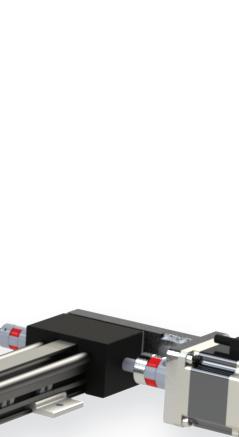






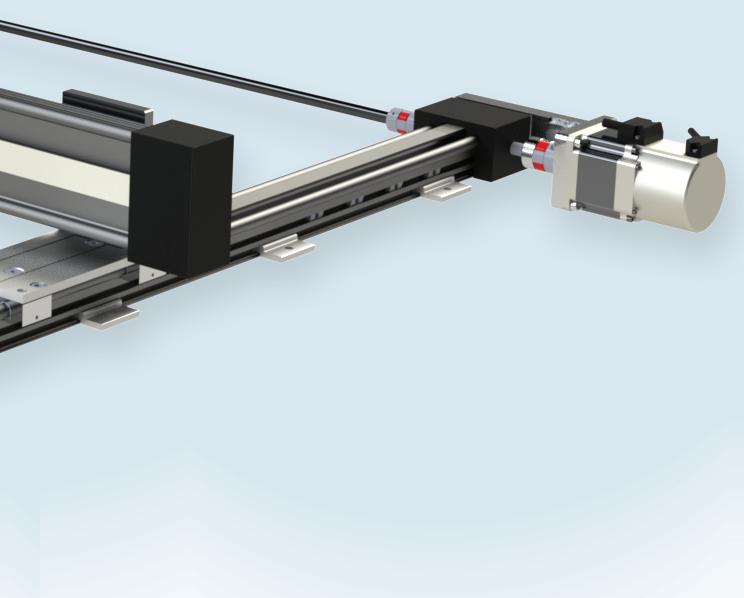


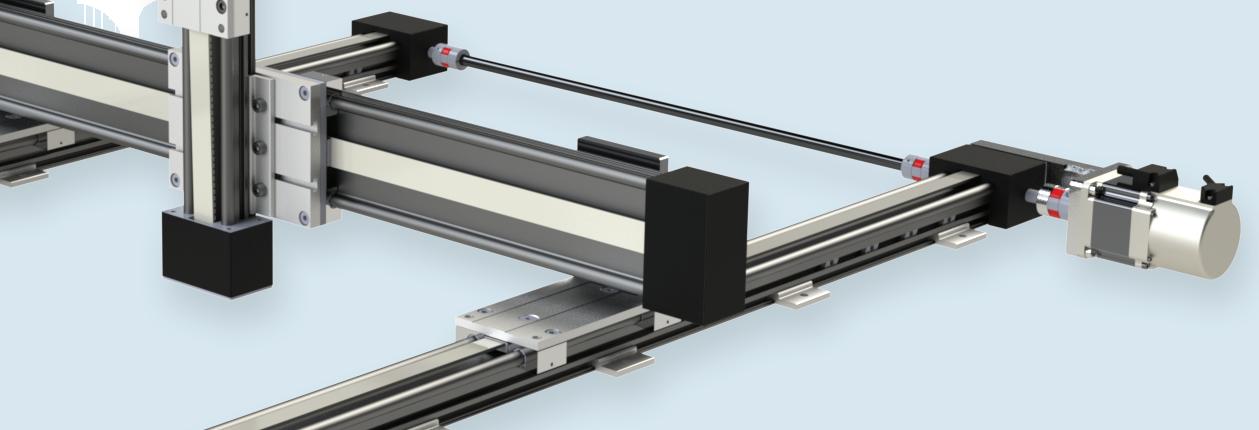





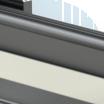


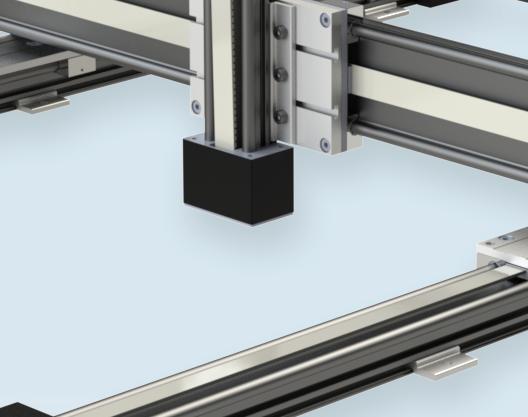






































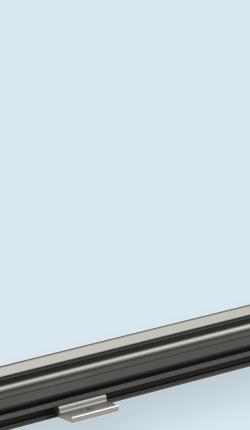

































































































































































































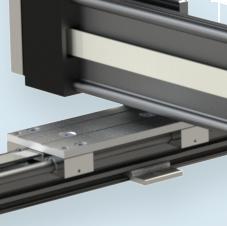

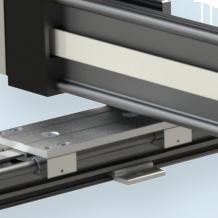
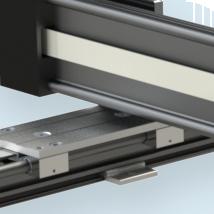





































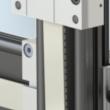
















































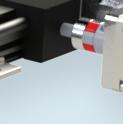


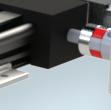

























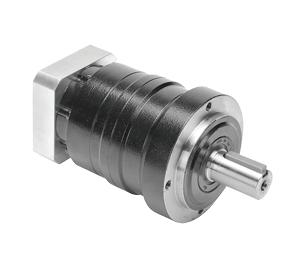

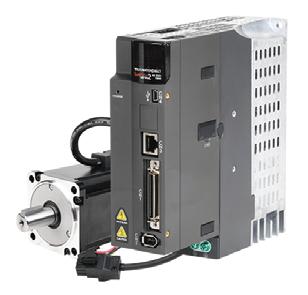





the #1 value in automation Order Today, Ships Fast! * See our Web site for details and restrictions. © Copyright 2022 AutomationDirect, Cumming, GA USA. All rights reserved. 1-800-633-0405 Gantry Components for Less Rugged industrial actuators & slides for demanding 24/7 applications Research, price, buy at: www.automationdirect.com/linear-motion Also Available Precision Gearboxes (for Stepper & Servo) Stepper Systems SureServo2 Servo Systems




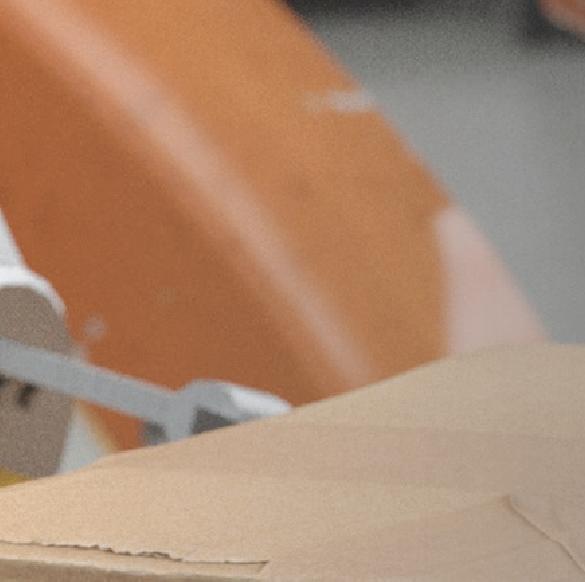

































































































































































































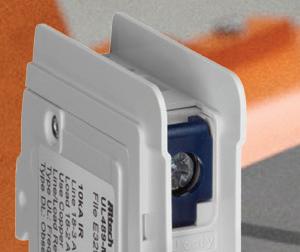














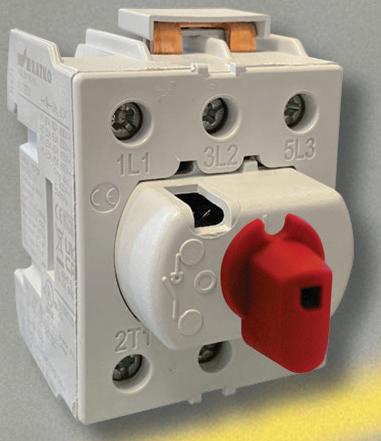
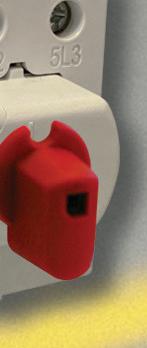


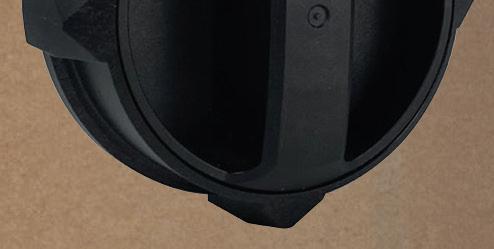


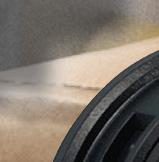






































































































































































































































































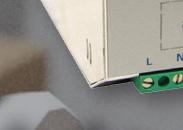


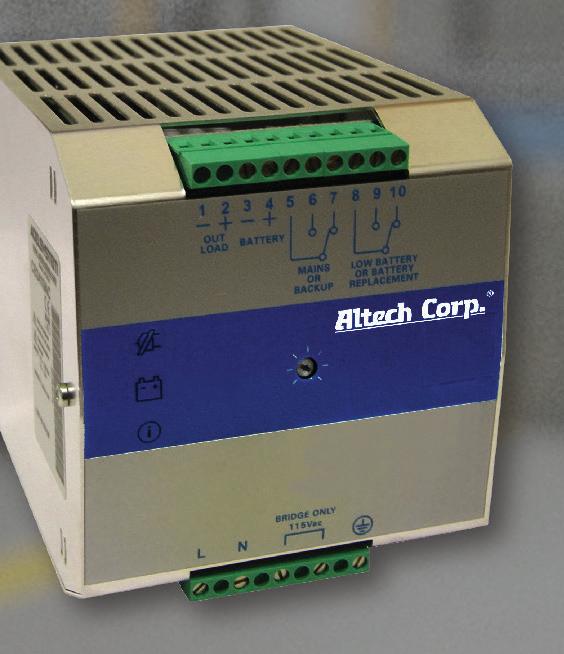












More on China’s strange future


In June, I wrote about the insane-sounding predictions about China’s future and the repercussions they would have for the country’s manufacturing base. If you’ll recall, geopolitical analyst Peter Ziehan said the Chinese population is currently the fastest aging society in human history — and that, combined with a poor Covid-19 response, means the country will dip to a mere 50% of its current population level by 2050.
At the NFPA’s recent International Economic Outlook Conference, we heard more dire predictions for the country om Connor Lokar of IFR. Lokar explained that China is struggling, transitioning to a different reality of higher wages. Plus, similar to Ziehan’s comments, he said that China is now butting up to the same type of demographic challenges that Japan faced 12 years ago. The population is getting older — and the labor force pressures are going up. Plus, it’s unclear how China’s COVID containment policies are working … but they don’t seem to be doing all that well.
In 2010, Japan’s population maxed out — essentially hitting a brick wall — and has been decreasing ever since. That is what Lokar thinks is happening to China right now. Demographers had been estimating that the country would hit that population wall sometime between 2030 and 2032, but some now believe China may have hit it already.
Looking at tables of every country’s GDP in the 1990s, Japan had an apparent position of strength and seemed to be hurtling closer to the U.S.’s top spot. But the island nation has since plummeted to a distant third place in GDP and looks to keep falling. Lokar sees China’s future in a similar light, poised to drop dramatically in the coming decade or two.
Conversely, India is where China was 20 years ago, and the demographic trends for it are excellent. Expect that country to be a bigger and bigger player in global affairs as well as the manufacturing world. Lokar expects them to pass the U.K. and Germany in total GDP in the coming years.
A few other interesting nuggets that Lokar shared about current global economics include:


• On the positive but modest U.S. industrial growth … “You just got used to going 120 mph down the interstate over the last 12-18 months, and now we’re slowing down to 65 mph.”




• Russia is overrated as a world power except for the fact that it has nuclear weapons; the economies of California or Texas are bigger.
• There is no short-term fix for Western Europe’s energy crisis. They spent years making this bed, and it’ll take years for them to get out of it. DW
J. Heney - VP, Editorial Director pheney@wtwhmedia.com




Insights 4 November 2022 www.designworldonline.com DESIGN WORLD - brushed or bldc motors - 5 amps per axis - 16 analog inputs - 16 on/off drivers - home and limit in - live tech support - made in the USA WWW.ALLMOTION.COM (510) 471-4000 30097 Ahern Avenue Union City, CA 94587 Technical Support (408) 460-1345 See the EZQUAD SERVO in action! 2.25” 4 AXIS SERVO from NEW!
On Twitter @wtwh_paulheney
Paul




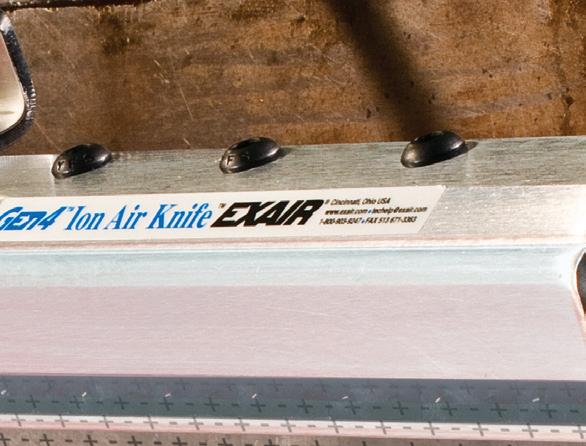




































































Ion Air Gun™ Eliminates static and dust from parts prior to assembly, packaging, painting or finishing. Ionizing Bars Eliminates static cling, dust attraction and jamming on paper, plastics and film. Super Ion Air Wipe™ The uniform 360° ionized airstream neutralizes and cleans continuously moving surfaces. Super Ion Air Knife™ Produces a laminar sheet of airflow that floods an area or surface with static eliminating ions. Ion Air Cannon™ Ideal for hard to reach spaces or confined areas that require a concentrated ionized flow. EXAIR manufactures a complete line of static eliminators to remedy common static problems. Many use our engineered airflow products to minimize air use and noise while delivering maximum results by moving more static eliminating ions to the product surface. • Materials tear, jam or curl • Webs and films cling to themselves • Electronic sensors fail, making false readings • Hazardous sparks or shocks occur • Product clings to itself, rollers and machine beds • Dust attraction ruins surface finishes Prevent Shocks, Jamming, Tearing and Static Cling! As humidity decreases, static electricity problems will increase. Ion Air Jet™ Delivers a concentrated blast of ionized air prior to shrink wrapping, packaging and printing. LEARN MORE ABOUT NEW STATIC ELIMINATORS NOW! 11510 Goldcoast Drive • Cincinnati, OH 45249-1621 • Phone (513) 671-3322 FAX (513) 671-3363 • E-mail: techelp@exair.com • www.exair.com Manufacturing Intelligent Compressed Air® Products Since 1983 @EXAIR Improved Performance and Greater Durability! Static Eliminators Remove Static Electricity and Dust! https://exair.co/58_470a Intellistat ® Ion Air Gun Patented handheld static elimination for sterile environments.https://exair.co/bose58adDownload our Basics of Static Electricity White Paper!
Teschler on Topic























How to crash a laptop hard drive
Back in the 1980s, I wrote an article about hard drives as the PC revolution brought them into the hostile environment of factories. They weren’t faring well. Most hard drives of the time were designed to sit in pristine main ame computer rooms. Putting them into industrial settings typically caused havoc. Not all disk drives had head carriage locks, and the locks on some units could only be actuated manually.
One drive maker I talked to described an elaborate configuration of elastomer spacers and rubber grommets designed to give the disk components a natural resonant equency well below the range where most severe vibration ampli udes arise.
Shortly a er the article published I got a letter om a mechanical engineering professor who had read it. He informed me that much of what the drive maker had said about vibration mitigation was nonsense, and he provided a few equations to prove it.
This episode exposed an unappreciated aspect of the electronics industry back then: In companies dominated by electronics engineers, the mechanical engineering on products o en wasn’t first rate.







































Of course, the electronics industry has changed since then. And you would think that by now, resonance





























problems now would be simulated and resolved long before hard drive designs got to the prototype stage. So I was surprised to find recently that resonant equncies can still be a problem on disk drives, though in what you might say is an off-beat way.

The issue was that playing the music video for Janet Jackson’s “Rhythm Nation” would not only crash certain laptop models, but also crash laptops sitting nearby that weren’t playing the video. It turns out the song contains one of the natural resonant equences for the 5,400 rpm laptop drive. The drive manufacturer eventually solved the problem by adding a custom filter in the audio pipeline that detected and removed the offending equencies during audio playback.

Still, the scenario seems weird: If a equency in a song causes problems, wouldn’t the same equency be present in a lot of other songs and do likewise long before now? This conundrum bugged NYC-based bass player and composer Adam Neely enough to explore it in a YouTube video.
Neely’s short answer to the riddle is that “Rhythm Nation” has a bass line that contains the equency that causes the problem. In music theory, a bass line is the foundation upon which all other melodies and chords are built. It is also the song’s lowest-
equency melody and is usually played on a bass instrument like a bass guitar.
Neely thinks the 2.5-mm laptop hard drives in question exhibit a strong resonant peak at 87.5 Hz. Analyzing “Rhythm Nation” for resonant peaks reveals one at 84.2 Hz. What’s interesting is that “Rhythm Nation” is written in the note of E, 82.4 Hz. Neely also notes that “Rhythm Nation” isn’t tuned as you might expect. Normally, standard tuning is A –440 Hz, meaning the A above middle C on a keyboard will vibrate at 440 Hz. Instead, Rhythm Nation is tuned to roughly A—450 Hz.

The different equency comes out of an effect called varispeed— basically a slight speeding up of the recording to make the music sound more exciting. This process also boosts the pitch by a small amount. In the case of “Rhythm Nation” the increase in pitch om varipeeding made the low E match the resonant equency of the drives.

You might wonder if other songs might have similar resonant peaks. Neely says the closest he’s found is Metallica’s “For Whom the Bell Tolls” with a peak at 84 Hz.
So you may have the creators of “Rhythm Nation” to thank for getting manufacturers to pay closer attention to resonances in the disk drives they design. DW
• Executive Editor lteschler@wtwhmedia.com On Twitter @ DW_LeeTeschler
6 November 2022 www.designworldonline.com DESIGN WORLD







dodgeindustrial.com
watch
outperforms the competition.
Scan to
how Tigear-2
after 500 Hours of Overload Testing
of Tigear-2
COMPETITION
clear when comparing wear after the same 500 hours of testing, there’s no competition to Tigear-2. Tigear-2 is the proven solution to ensure you get the longest life out of your gearbox regardless of your application requirements.
Still Going Strong
That’s the power
THE
It’s
bearings and worm shaft Wider and more rugged worm gear
lubrication management
challenges
TIGEAR-2 What makes Tigear-2 the toughest in the industry? Larger
Advanced
Rated to meet the harshest
44 MOTION CONTROL
Top 12 design considerations for power-off brakes
The proliferation of new applications for power-o brakes demands fresh design approaches leveraging leading brake manufacturers’ accumulated design experience. Key to optimizing designs for life, cost, and performance is early collaboration with the brake manufacturer.




52 LINEAR MOTION
Linear motors find a home in CNC machines
For one manufacturer of CNC grinding machines, new high-performance linear motors replaced ball-screws and improved machine performance.
56 ELECTRONICS
The top ten “green” programming languages
Software with the fastest execution time isn’t necessarily the greenest.



60 SENSORS





How does the PICMG IoT.1 specification for smart IoT sensors work?
The PCI Industrial Computer Manufacturer’s Group (PICMG) is developing a series of specifications to enable plug-and-play interoperability of smart sensors and e ectors.
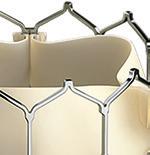

64 ADDITIVE MANUFACTURING
Metal 3D Printing materials under review


Achieving your design goals with metal 3D printing depends on finding the right material for your application. Here are tips on working with metal materials.
ON THE
Contents 11 • 2022 • vol 17 no 11 • designworldonline.com
60 asbpe.org SILVER REGIONAL AWARD 2022
asbpe.org GOLD REGIONAL AWARD 2022 asbpe.org BRONZE REGIONAL AWARD 2022 8 November 2022 www.designworldonline.com DESIGN WORLD asbpe rg BRONZE NATIONAL AWARD 2022 asbpe.org GOLD NATIONAL AWARD 2022
COVER Autonomous ground vehicles (AGVs) and other mobile designs rely on power-off brakes with top efficiency and response time. 71-93 www.designworldonline.com A Supplement to Design World - November 2022 ASRS WAREHOUSE AUTOMATION Covering the latest motion and control components, equipment and systems in ASRS design WAREHOUSE AUTOMATION COVER 11-22_FINAL2.indd 71 95-103 Medical www.designworldonline.com A Supplement to Design World A half-dozen catheters, stent systems and related medical tubing products are up for high honors at next month’s 2022 Prix Galien USA awards. Page 100 Six top tubing technology innovations
Adobe Stock Adobe Stock
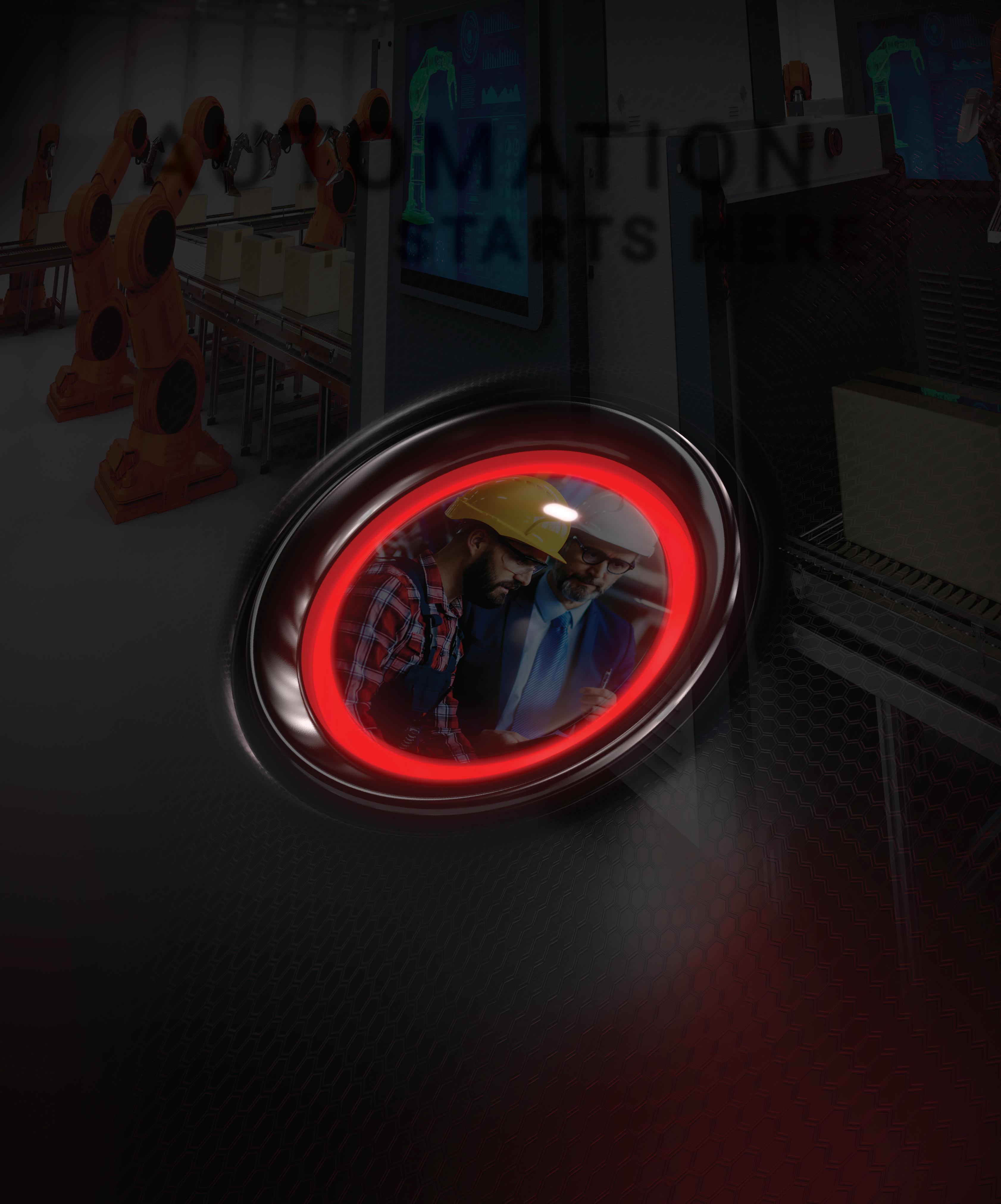







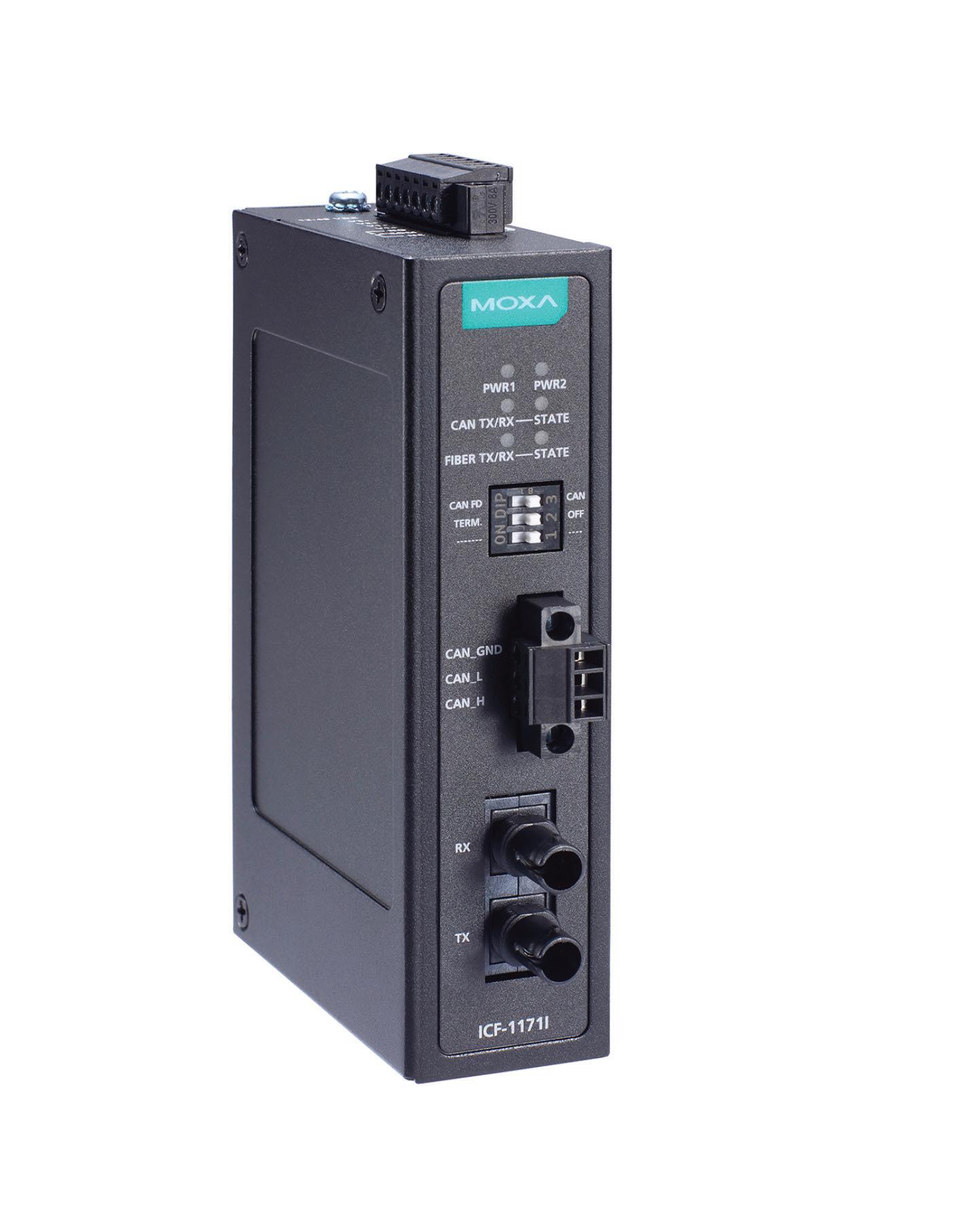






departments 04 Insights 06 Teschler on Topic 12 Design For Industry 24 Design Notes 32 Internet of Things 36 CAE Solutions 104 Ad Index 11.22 • contents 10 November 2022 www.designworldonline.com DESIGN WORLD
BXR Brakes · Up to 480 in-lbs static · Up to
bore · 19 watts or less · Produced
years Our Innovative design features a very
profile, reducing weight and space. For more information: Call:
www.mikipulley-us.com
THIN ENOUGH?
a 1.125''
for over 10
thin
800.533.1731
Follow the whole team on twitter @DesignWorld
EDITORIAL
VP, Editorial Director
Paul J. Heney pheney@wtwhmedia.com @wtwh_paulheney
Managing Editor
Mike Santora msantora@wtwhmedia.com @dw_mikesantora
Executive Editor
Leland Teschler lteschler@wtwhmedia.com @dw_leeteschler
Executive Editor

Lisa Eitel leitel@wtwhmedia.com @dw_lisaeitel
Senior Editor
Miles Budimir mbudimir@wtwhmedia.com @dw_motion
Senior Editor
Mary Gannon mgannon@wtwhmedia.com @dw_marygannon
Senior Editor
Rachael Pasini rpasini@wtwhmedia.com
Associate Editor Heather Hall hhall@wtwhmedia.com @wtwh_heathhall
Senior Contributing Editor Leslie Langnau llangnau@wtwhmedia.com @dw_3dprinting
CREATIVE SERVICES

VP, Creative Services



Mark Rook mrook@wtwhmedia.com @wtwh_graphics
Senior Art Director
Matthew Claney mclaney@wtwhmedia.com @wtwh_designer
Senior Graphic Designer
Allison Washko awashko@wtwhmedia.com @wtwh_allison
Graphic Designer
Mariel Evans mevans@wtwhmedia.com @wtwh_mariel
Director, Audience Development


Bruce Sprague bsprague@wtwhmedia.com

WEB DEV / DIGITAL OPERATIONS

Web Development Manager
B. David Miyares dmiyares@wtwhmedia.com @wtwh_webdave
Senior Digital Media Manager
Patrick Curran pcurran@wtwhmedia.com @wtwhseopatrick
Front End Developer
Melissa Annand mannand@wtwhmedia.com
Software Engineer


David Bozentka dbozentka@wtwhmedia.com
DIGITAL MARKETING
VP, Digital Marketing Virginia Goulding vgoulding@wtwhmedia.com @wtwh_virginia
Digital Marketing Manager
Taylor Meade tmeade@wtwhmedia.com @WTWH_Taylor
Digital Marketing Coordinator Jill Bresnahan jbresnahan@wtwhmedia.com @WTWH_Jill
Webinar Coordinator Halle Sibly hkirsh@wtwhmedia.com
Webinar Coordinator Kim Dorsey kdorsey@wtwhmedia.com
EVENTS
Events Manager
Jen Osborne josborne@wtwhmedia.com @wtwh_jen
Events Manager
Brittany Belko bbelko@wtwhmedia.com


Event Marketing Specialist
Olivia Zemanek ozemanek@wtwhmedia.com
VIDEO SERVICES
Video Manager Bradley Voyten bvoyten@wtwhmedia.com @bv10wtwh
Videographer Garrett McCafferty gmccafferty@wtwhmedia.com

PRODUCTION SERVICES
Customer Service Manager Stephanie Hulett shulett@wtwhmedia.com
Customer Service Representative Tracy Powers tpowers@wtwhmedia.com
Customer Service Representative JoAnn Martin jmartin@wtwhmedia.com
Customer Service Representative Renee Massey-Linston renee@wtwhmedia.com
Customer Service Representative Trinidy Longgood tlonggood@wtwhmedia.com
Digital Production Manager Reggie Hall rhall@wtwhmedia.com
Digital Production Specialist Nicole Johnson njohnson@wtwhmedia.com
Digital Design Manager Samantha King sking@wtwhmedia.com
Marketing Graphic Designer Hannah Bragg hbragg@wtwhmedia.com
Digital Production Specialist Elise Ondak eondak@wtwhmedia.com
FINANCE
Controller Brian Korsberg bkorsberg@wtwhmedia.com
Accounts Receivable Specialist Jamila Milton jmilton@wtwhmedia.com
WTWH Media, LLC 1111 Superior Ave. 26th Floor Cleveland, OH 44114 Ph: 888.543.2447 2014 Winner2011 - 2020 2013 - 2017, 2021 2014 - 2016
TOP WORK PLACES 2022 DESIGN WORLD www.designworldonline.com November 2022 11
DESIGN WORLD
Medical Design& OUTSOURCING
Design for Industry
Aerospace
Metrology kit for inspection and deformation analysis in aerospace
High-accuracy optical measurement systems are essential for easy and reliable inspection of aircra components, ships, and wind turbines. With this Metrology Kit, users can obtain more precise datasets and confidently perform inspection in use cases where requirements on repeatability are high. This can be at almost any production step — even when the part itself is in motion. For example, UK, German, and Japanese defense organizations use the Metrology Kit for deformation analysis on the main and sub panel systems of large satellite antennas tilted at various angles. Available in two versions, Professional and Entry, the Metrology Kit offers an easy-to-use and versatile photogrammetry solution with metrologygrade precision and high-end accuracy for inspection and reverse engineering.
The Kit can operate as a standalone optical measurement solution, or as a referencing tool for 3D scanning over distance. The whole kit is portable and provides high-precision measurements in under 15 minutes.
The Kit is both DaaKS and VDI certified and provides point-based accuracy (RMS) up to 0.002 mm + 0.005 mm/m and length measurement accuracy up to 0.015 mm + 0.015 mm/m.
It includes a camera with resolution of up to 30.3 megapixels and a 28 mm wide-angle lens, measurement targets, adapters, scale bars, and a plugin, giving users the entire photogrammetry workflow right inside Artec Studio. The kit is also compatible with industry-leading inspection so ware solutions like Geomagic Control X, PolyWorks, and more.

In addition to aerospace applications, the kit suits automotive and off-shore markets. For quality control in automotive manufacturing processes, for example, the Kit analyzed the position of welding studs on every fourth chassis in a major car manufacturing production line in Germany, and the results were then used to program the welding robot. Additionally, as part of tests and research for autonomous driving, the kit helped determine the positions of sensors on a car body and correctly place them within the car’s coordinate system.
The Metrology Kit is also for analyzing the geometrical changes of storage tanks, vehicle components, or design prototypes. It can analyze the deformation characteristics of materials under different environmental conditions such as high temperatures and humidity where short measuring time is crucial.

12 November 2022 www.designworldonline.com DESIGN WORLD
An ISO-certified German offshore and maritime engineering company surveys and inspects flanges on offshore sites in the North Sea and Baltic Sea. The short measuring time, easy workflow, and dynamic referencing make the Metrology Kit a good solution for such high-accuracy applications in unstable conditions. The company measures the flatness and inclination of large flange faces, drill hole diameters, and inner and outer diameters. The full measurement process is carried out within 60 minutes.












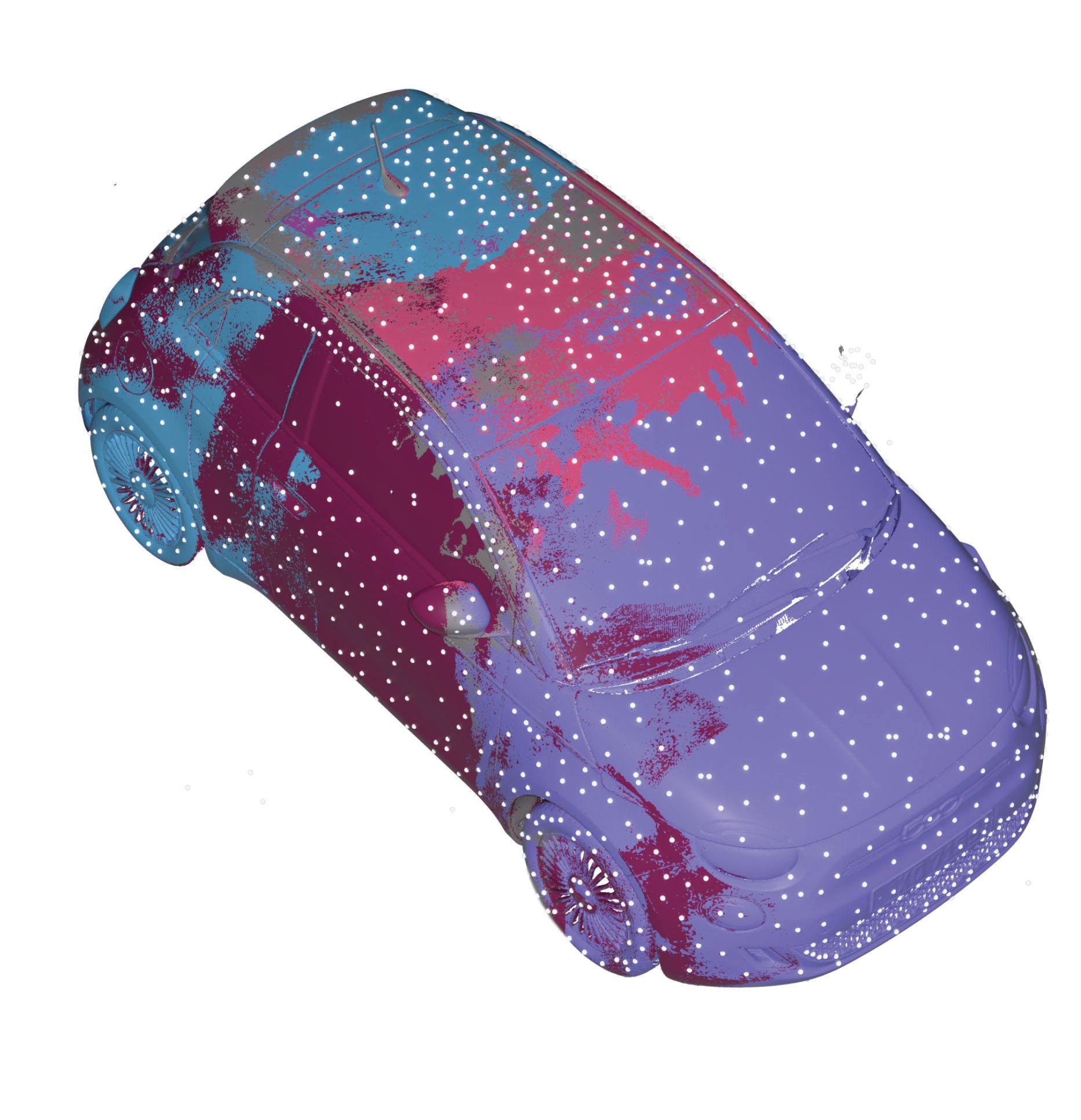





The Metrology Kit produces a point cloud with high volumetric accuracy that can be used as a reference for 3D scanning results over distance, particularly when capturing large objects or areas with an Artec 3D scanner. Ensuring minimal error accumulation, the kit allows users of Artec Leo or Artec Eva to increase volumetric accuracy by up to 14X. DW



























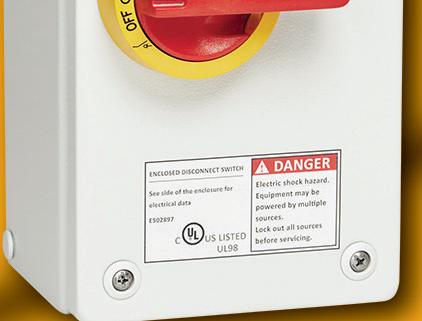


Artec 3D www.artec3d.com

DESIGN WORLD November 2022 13
Design for Industry
Aerospace
Optical links for harsh environments
High-speed embedded network backbones in harsh environments, such as aerospace, need robust connectors. The SOCAPEX’s MPO Field solution lets users transform a standard MPO patchcord into a robust connector that resists the harshest environments. The MPO patchcord is integrated into a metallic plug based on MIL-STD-38999 Series III, a shell size 13 Military connector, to protect it om shocks, dust, and fluids. There is no requirement for field termination.
MPO Field TV connector combines high speed and high density of wellknown MPO/MTP Fiber Optic connectors using MT ferules, with high resistance of MIL-DTL-38999 Series III Military shells for various harsh environment applications such as high speed embedded network backbones for battleships, armored vehicles or airplanes and trains, datacenters in harsh environments, trackside measuring, and inspection systems for trains, and high resolution realtime video.
The connector features include:
• High density and speed: High data rates and optical density are offered through the use standard Fiber Optic MT Ferrules

• High density and robustness: The 12 or 24 fiber channels are integrated into 28 mm diameter 38999 metal shells, with tri thread coupling mechanism. The solution is IP68 sealed when mated and shocks & vibration resistant
• Easy to implement: No tool or field cabling are required. The solution allows anyone to transform a standard MPO Patch cord or more complex assembly into a harsh environment connector easily. DW
Amphenol www.amphenol-socapex.com/en/
14 November 2022 www.designworldonline.com DESIGN WORLD
Improve the service life of offshore wind turbines with seals




































































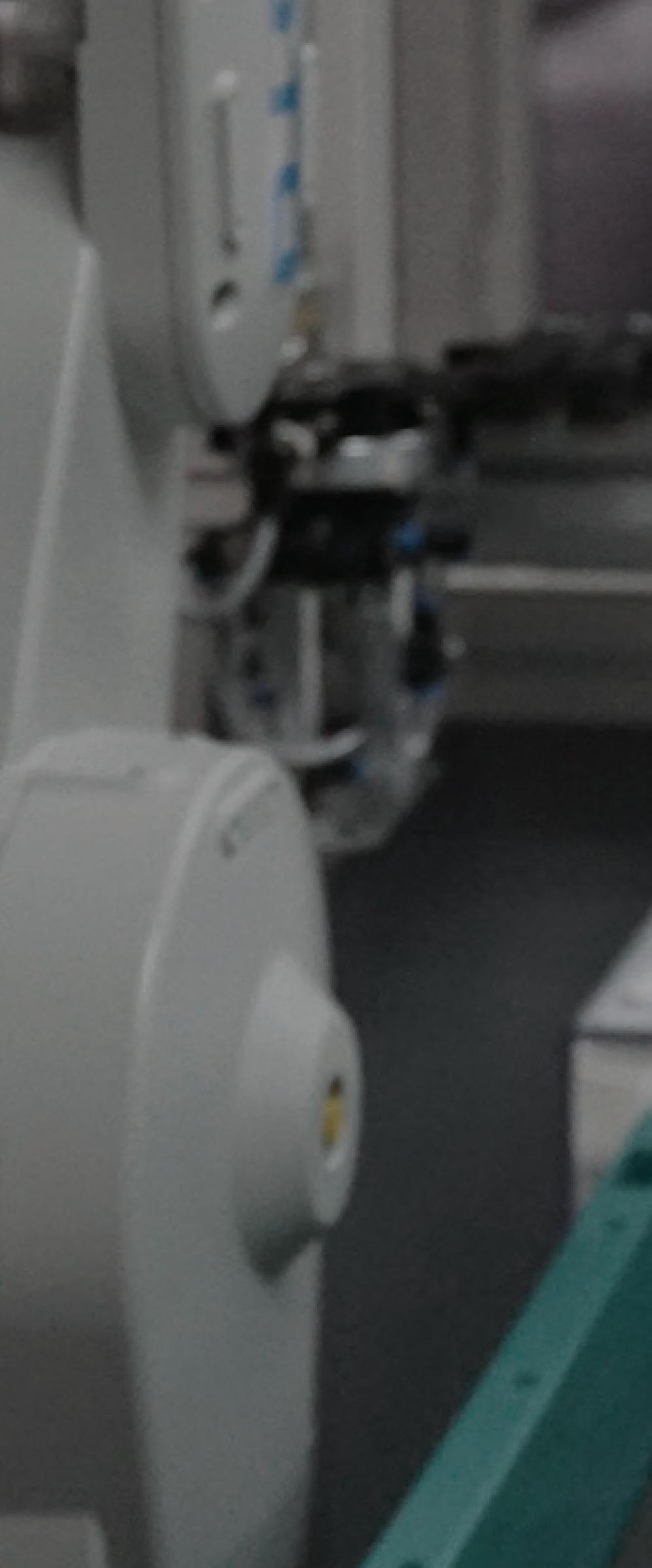




















The European Union aims to expand the capacity for wind power generated at sea to at least 60 GW by 2030. Sealing solutions for the foundation structures help ensure that new wind turbines reach a service life of at least 30 years or more despite the rough conditions at sea.




The highest wind velocity ever measured in the German North Sea was 119 mph (191 km/h). While wind turbines erected in the ocean are shut down even at considerably lower wind speeds, the structures still have to withstand the enormous force of a hurricane no matter what and throughout their entire service life.




The foundation that anchors the towers in the seabed plays an important role. In the shallow waters predominant in the North and Baltic Seas, the foundation is usually constructed using so-called “monopiles.” These are steel piles driven into the seabed until only the upper ends are above the water surface. Even for a 10-MW turbine, the tower can reach a height of 493(150 m) to the rotor hub and is usually not mounted directly on the piles but supported by a flange. This flange is attached with several dozen bolts that become inaccessible for any maintenance once the tower is installed. To prevent the screw connections om corroding in the harsh environment at sea, they have to be protected against the ingress of moisture. Seals, such as those om Freudenberg Sealing Technologies are already handling this crucial task in more than 800 offshore wind turbines.
The most important function is performed by a ring seal at the top of the pile. It encloses the interior part of the linking piece that supports the screw connection. In modern installations,
Off-shore
Off-shore Design for Industry
the flange seal — with the abbreviation MP-TP (monopile transition piece) — can reach a diameter of 8 to 10 m. In recent years, Freudenberg Sealing Technologies has also offered this seal in a double version. The main advantage of the double-row design is the resulting redundancy. “If minor damage occurs at one of the two seals during the transport or installation, the function is still ensured,” said Manuel Hille, Freudenberg expert. “In addition, this makes it possible to optimally combine different designs and materials with each other.” However, the specific design is almost exclusively customer-specific to make optimum use of the available assembly space.

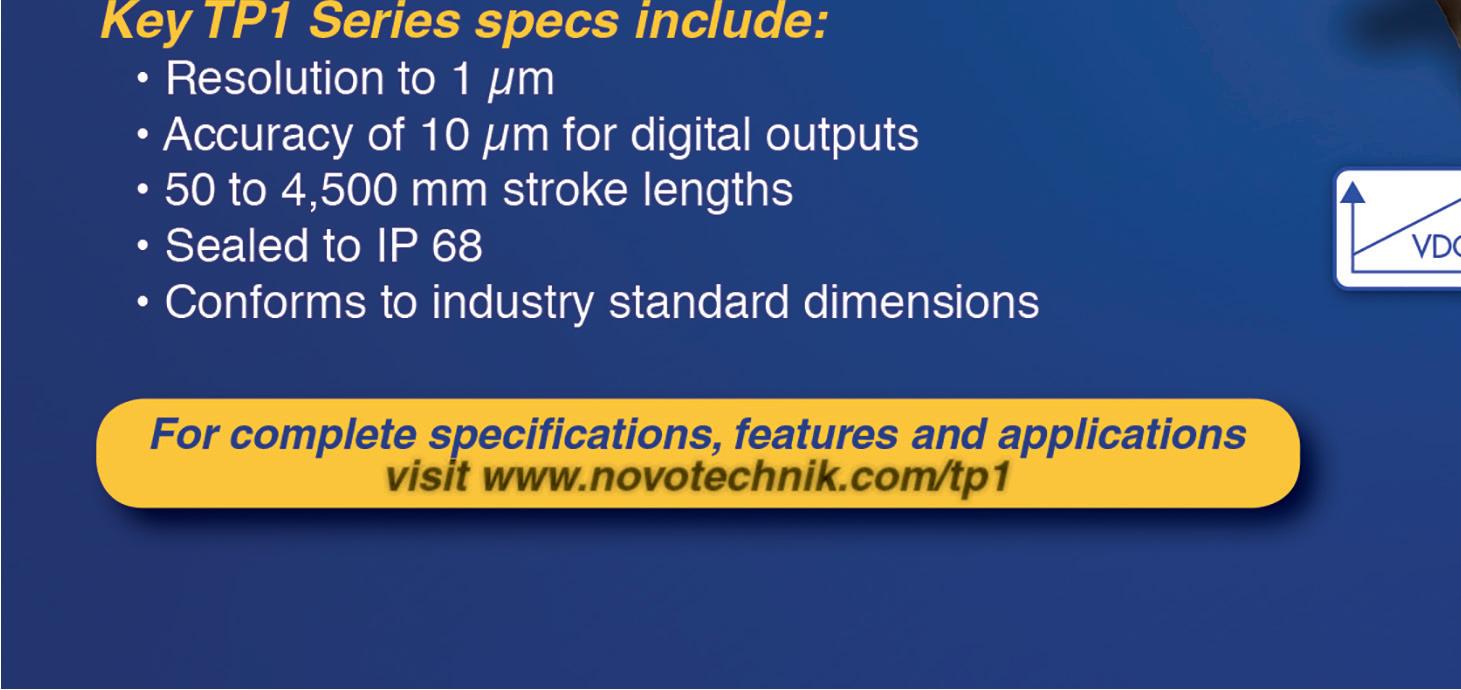

In a conventional design, a gap remains between the lower end of the connecting piece and the pile. One or two ring seals interspersed with air chambers designed as elastic
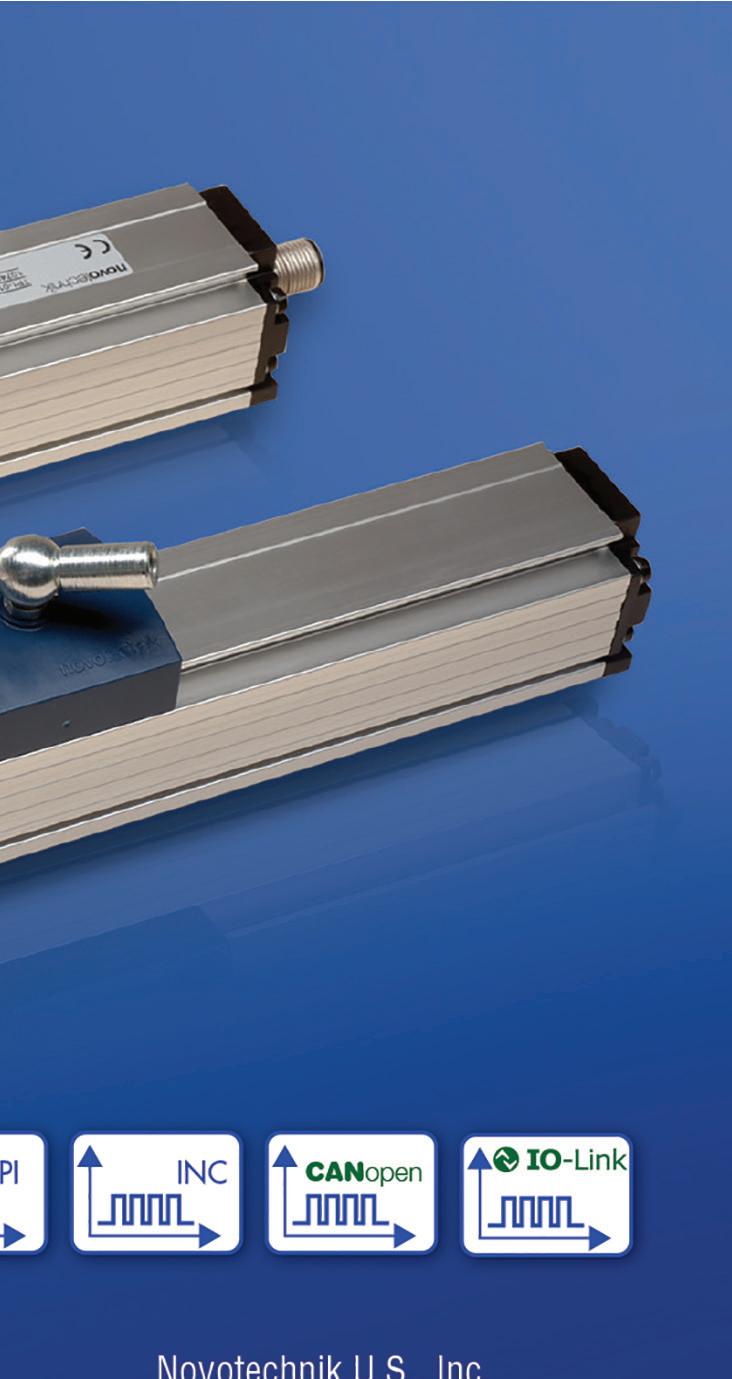
breakwaters ensure no seawater can enter. On the other hand, if the gap is filled with cement, a ring seal can keep the cement in the desired position during the curing and later protect it against damage om saltwater. Maintenance platforms, which are o en positioned above the water surface inside the monopile, can additionally be protected against the ingress of gases with a specially designed seal. These kinds of gases may form due to biological seawater processes in the pile.
In recent years, there has been a sharp increase in the expected service life of components used for sea-based wind turbines. While 25 years were initially considered a good lifespan, this standard has now risen to up to 35 years. Such a long operating life can’t be ensured using bench tests. This is why Freudenberg uses an adapted Arrhenius algorithm

to extrapolate the results of six-week intensive stress tests. This quite familiar procedure, named a er the Swedish chemist and Nobel laureate Svante August Arrhenius, has been consistently refined by Freudenberg experts in recent years. They significantly improved the service life model by coupling chemical and physical effects with the structural mechanical behavior of the material. DW
Sealing Technologies fst.com
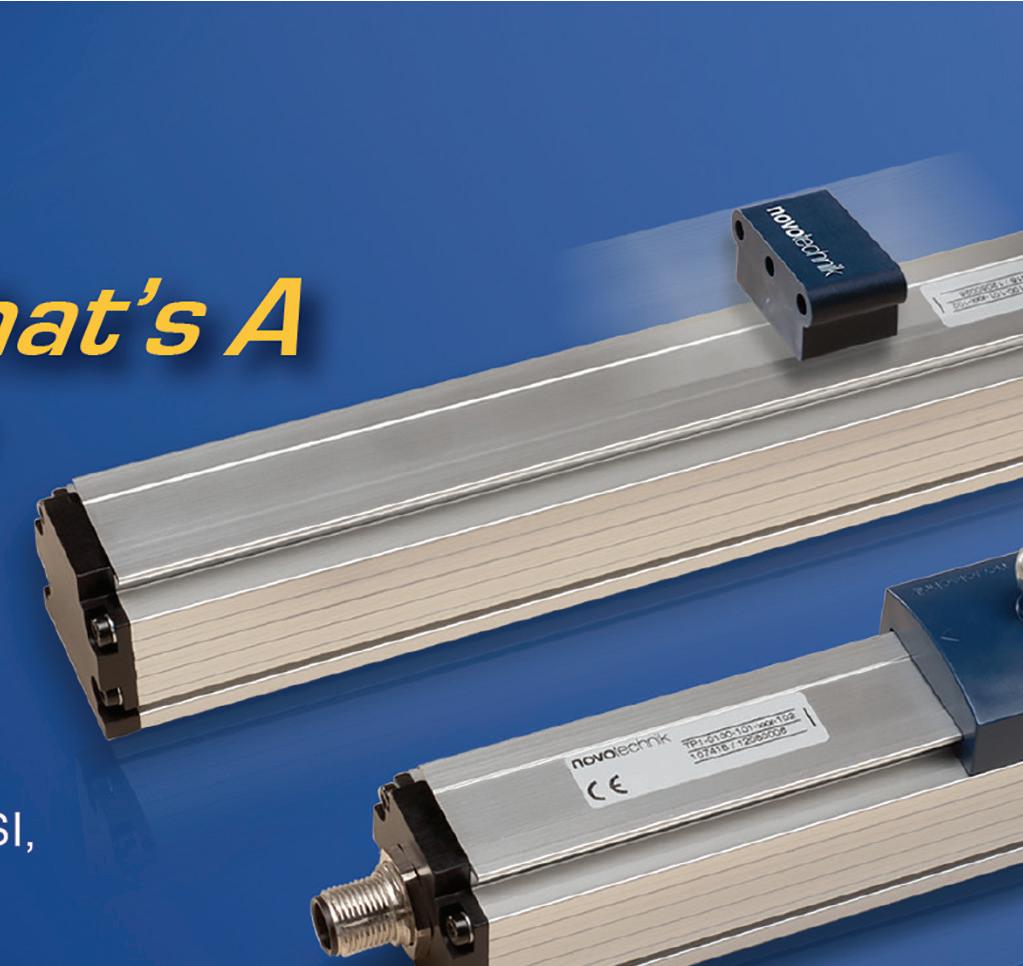 Freudenberg
Freudenberg
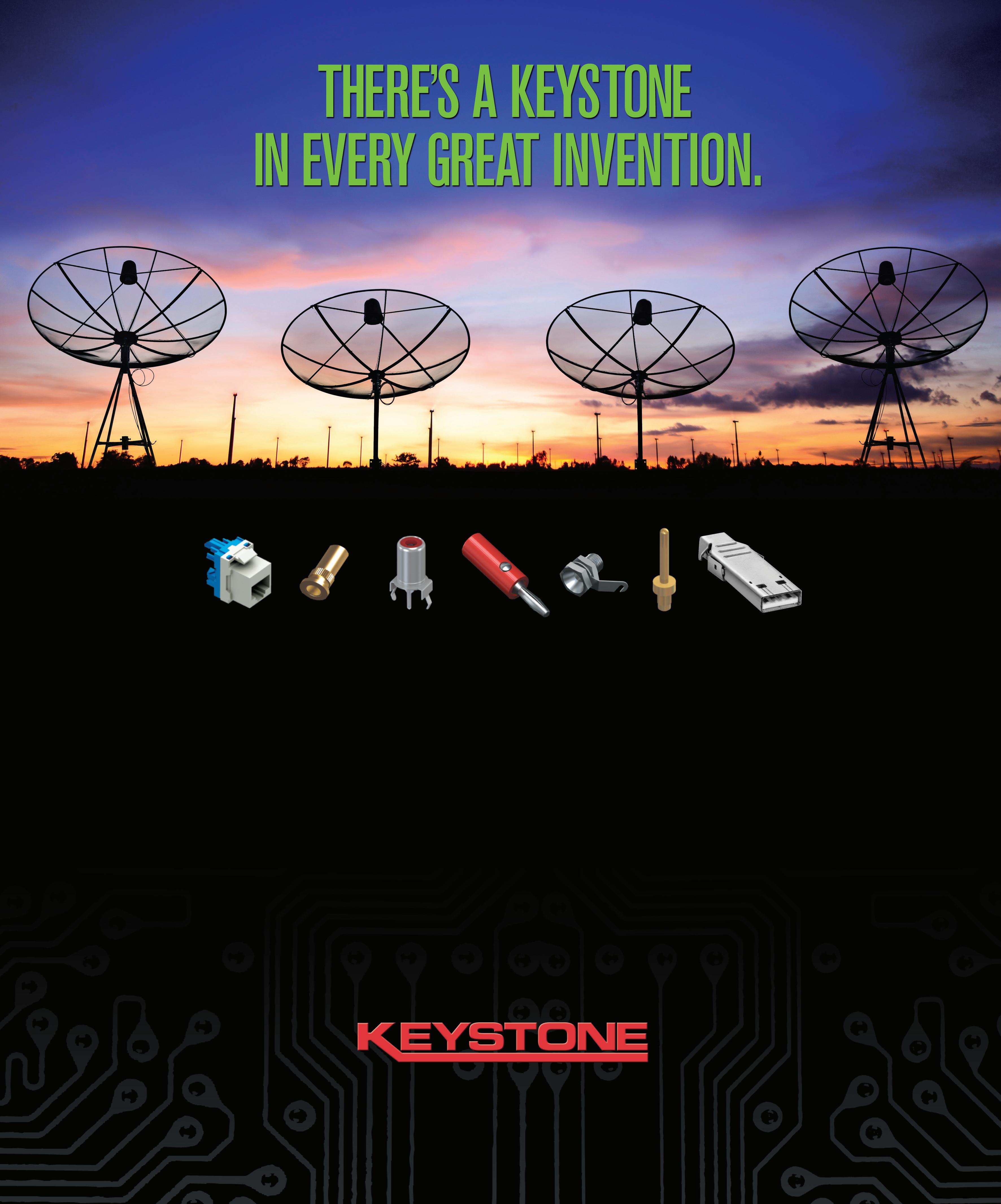

IT’S WHAT’S ON THE INSIDE THAT COUNTS ® ELECTRONICS CORP.
Packaging Design for Industry
A range of fully hygienic robots for picking, packaging, and palletizing

For fully automated palletizing/depalletizing, the KR IONTEC medium payload robot can be mated with a robotic pick-and-place solution. The KR IONTEC is a highly flexible robot with a good work envelope. It can be integrated with 3D-vision to detect stationary items with rectangular surfaces and determine their position, orientation, and size for picking. Once the box locations are identified, the robot, which is suitable for an array of industrial applications including handling, packing, and palletizing, will complete the next pick action for fast, e cient stacking.
Designed to simulate a real production environment and automation solutions for each step — moving material om receiving and sorting to packing and distribution — this end-to-end automation cell includes the KR 3 DELTA Hygienic robot, KR 6 SCARA and KR 6 AGILUS robots and KUKA. VisionTech advanced vision so ware. The KR 3 DELTA hygienic robot provides outstanding performance and value for pick-and-place applications for the food, packaging, electronics, and pharmaceutical industries, while the KR 6 SCARA is strong, fast, highly-e cient and delivers maximum economy. KUKA will pair both robots with its KUKA.VisionTech. DW Kuka www.kuka.com
18 November 2022 www.designworldonline.com DESIGN WORLD
Robot easily handles bin picking
Bin picking processes are known to be laborious, tiring, and even dangerous in some situations. These tasks are suited for automation in nature but can be challenging to automate due to factors such as shi ing part locations and complex path calculations. This bin picking solution that can save time and money.
The robot’s design includes an arm structure and lighter main unit for high speeds and a large working area. Its 1,460 mm reach is the largest in its class, allowing for installation flexibility and use in a wider variety of applications. The RS013N robot also leads its class in speed, resulting in reduced cycle times and increased productivity.













In addition to its expanded work area, the robot’s wiring and installation options contribute to its overall flexibility. The robot’s internal Ethernet wiring enables easy connection to a vision system or other peripheral devices, and its floor, ceiling, and wall mount options provide installation flexibility for any layout. The dust-tight RS013N offers a full-body IP67 rating, fully
connections allow the robot to be used in virtually any environment. The R series robots (RS007N/L and RS013N) also have reduced interference zones around the robot base, which allows the user to maximize their floor space and working area. DW
motors and waterproof

































































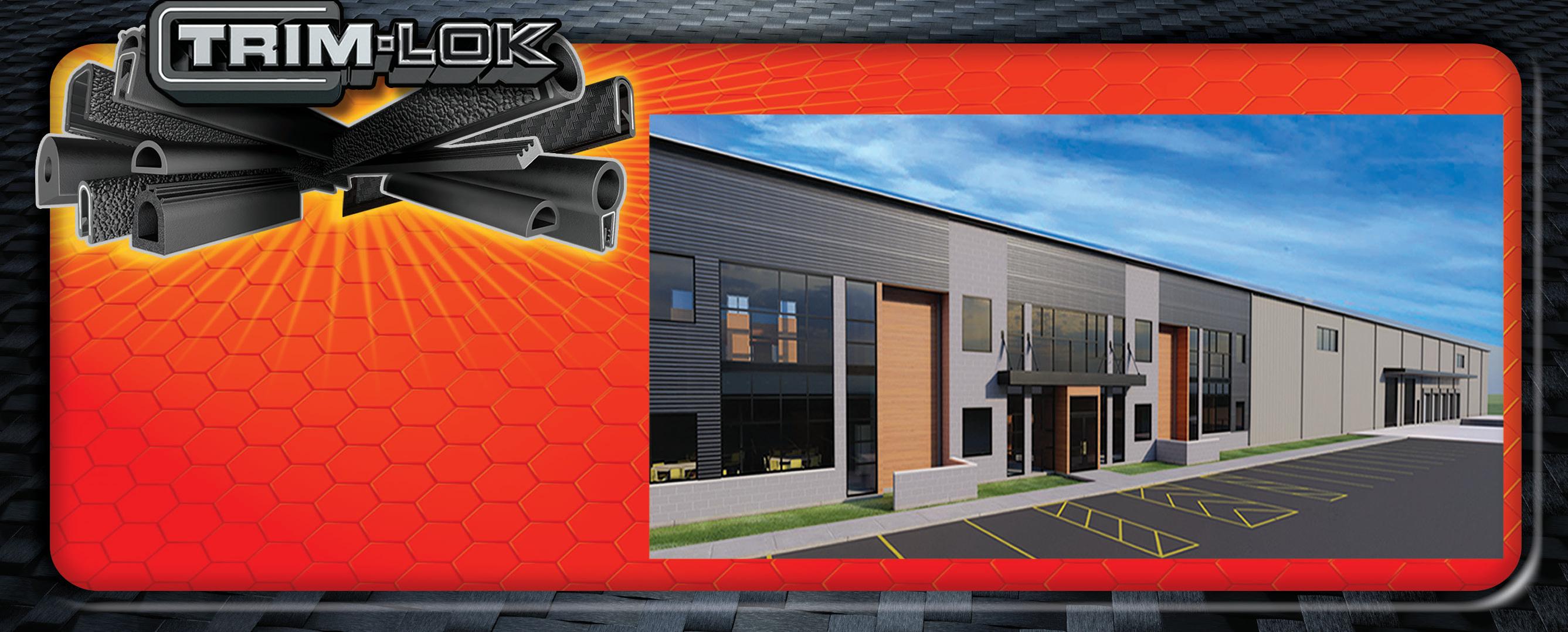



Kawasaki Robotics (USA), Inc. KawasakiRobotics.com

DESIGN WORLD www.designworldonline.com November 2022 19 WWW.TRIMLOK.COM INFO@TRIMLOK.COM 6855 HERMOSA CIRCLE BUENA PARK, CA 90620 SEALSTRIMS AND 800-933-4915 CELE B R ATING YEARS CELE B R ATING 50 YE ARS AND STILL GROWING!50 YE ARS AND STILL GROWING!YEARS NEW FACILITY COMING FALL 2022 ELKHART, INDIANA Packaging
covered
electrical
Lights-Out Manufacturing
Tools for Future Growth
The Automated Storage & Retrieval System is built to continuously feed parts to the cobot. This machine solves cobot downtime. Without some sort of automated loading and unloading system, cobots will inevitably sit idle, falling far short of their desired potential.



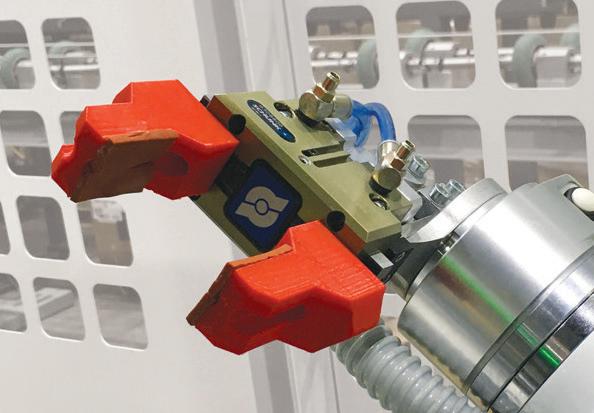




Traditional desktop 3D printers are fine for prototyping parts, but can be costly in terms of volume production. The WorkSeries 300 (1000 x 1000 x 700 mm build area) can produce near-net shape parts and have greater ability to customize, resulting in decreased costs and reduced time-to-market for industrial manufacturers.
6402 E. Rockton Road, Roscoe, Illinois 61073 USA +1.800.962.8979 pbclinear.com • appliedcobotics.com • 3dplatform.com
by
Modular robotic system for packaging
A breakthrough concept for packaging, microfulfillment, and beyond, ATRO provides a flexible, fully modular system for robot kinematics with simplified assembly and path teaching. Users can select the number and type of axes required for robots with payloads up to 10 kg and reach of up to 1.3 m. A media feed concept routes data, power, and fluids internally with infinite rotation available for all axes, which never need to stop to unwind cables.
For countless packaging applications, ATRO enables wideranging robot kinematics, including expansive configurations with as many as eight robotic arms. The TwinCAT control so ware scans the user-created robot mechanical assembly, and TwinCAT robotics functions automatically create the corresponding control application — including a digital twin. DW

Beckhoff Automation www.beckhoffautomation.com
WHITTET-HIGGINS manufactures quality oriented, stocks abundantly and delivers quickly the best quality and largest array of adjustable, heavy thrust bearing, and torque load carrying retaining devices for bearing, power transmission and other industrial assemblies; and specialized tools for their careful assembly. Visit our website–whittet-higgins.com–to peruse the many possibilities to improve your assemblies. Much technical detail delineated as well as 2D and 3D CAD models for engineering assistance. Call your local or a good distributor.
33 Higginson Avenue, Central Falls, Rhode Island 02863 Telephone: (401) 728-0700 • FAX: (401) 728-0703 E-mail: info@whittet-higgins.com Web: www.whittet-higgins.com
DESIGN WORLD November 2022 21
Packaging Design for Industry
POWER TRANSMISSION RETAINING DEVICES & maintenance & assembly tools WHITTET-HIGGINS USA BEARLOK SHOELOK BEARLOK Shrink Disc BEARHUG CLAMPNUT TANGENTLOK PRECISION NUTS & WASHERS ADAPTER SLEEVE ASSEMBLIES NUTS & WASHERS HARDENED TONGUE WASHERS SPLIT COLLAR RETHREADING DIES ADJUSTABLE SPANNER WRENCH BEARING ASSEMBLY SOCKET INCH and METRIC THREADS LEFT HANDED as well as RIGHT -HANDED Materials of: CARBON, ALLOY and HARDENED ALLOY STEELS Materials of: ALLUMINUM and CORROSION RESISTANT STEEL
Safety Design for Industry
Smart sensor keeps an eye on the health of machinery
Remotely monitor the health and performance of general machinery with the ABB Ability Smart Sensor, an element of the ABB Ability Digital Powertrain.

The smart sensor turns rotating equipment including drives, motors, and applications such as pumps, into smart, wireless connected assets. It is also designed to detect potential asset disturbances and planned maintenance before the reliability, productivity, and safety of machinery are impacted.
The smart sensor fits to the assets surfaces, collecting and transmitting data via smartphone or gateway to a secure cloud service. Advanced algorithms analyze the data to provide real-time insights into the condition and performance of monitored assets. The asset to be monitored is chosen during commissioning. All components of a powertrain can be monitored via one portal — either individually or as part of the complete powertrain.
The sensor handles applications in hazardous areas and harsh environments. Its enclosure is designed to withstand high vibration levels and protects om total dust ingress (IP66/67). The sensor is certified for ATEX, IECEx and NEC 500. DW
ABB www.abb.com
22 November 2022 www.designworldonline.com DESIGN WORLD
OVER 25 YEARS’ EXPERIENCE WITH MANUFACTURING AND SOURCING OF MATERIAL, SUB-ASSEMBLIES AND FULL TURNKEY PRODUCTS.




• PRODUCTS: We offer component manufacturing, engineering, sourcing, custom component manufacturing. Kingway offers components and subassemblies all the way to full box builds.



• LOGISTICS: Kingway can help develop a custom Logistics plan to meet your needs including Expedited Air Freight, Sea Freight and Domestic Warehousing.
• VISION STATEMENT: Kingway Electronics offers Direct Sourcing and Customized Logistics Management by utilizing our 25 plus years of relationships and experience to deliver better Pricing, Shorter Lead Times with the Goal of Maximizing our customers profitability.
kingway-usa.com (330) 205-4904
FULLY CUSTOM OEM
STANDARD TO
SOLUTIONS
Crucial temperature control in pharma manufacturing















































 Edited by Mike Santora • Managing Editor
Edited by Mike Santora • Managing Editor
The line produces pharmaceutical pellets containing the active ingredients in capsules.

Design Notes 24 November 2022 www.designworldonline.com DESIGN WORLD
HRS Heat Exchangers
have helped a leading Australian pharmaceutical company expand its production capacity by supplying a bespoke system that controls the temperature of solution materials used in capsule manufacturing.

















































Mayne Pharma commercializes branded and generic pharmaceuticals in several product areas. Its manufacturing facility is in Salisbury, South Australia, approximately 12 miles om Adelaide, where it produces tablets, capsules, liquids, and creams.















Capsules are a popular method of drug delivery, made of a two-piece dissolvable outer shell containing miniature pellets which carry the active ingredients. The pellets are prepared using a fluid bed dryer to reduce moisture content and are sometimes spray-coated with a solution containing key ingredients. The spraycoating solutions use an alcohol-based formulation to ensure correct mixing and maintenance of the fundamental chemical properties. The solutions must be prepared and applied within a tight temperature range.
Mayne Pharma wanted to expand and upgrade its existing production capacity for capsule production by adding a third fluid bed dryer and the associated equipment while also improving temperature regulation to its existing lines. HRS Heat Exchangers was asked to provide a quotation for a hot water heater to support the new line but quickly realized that a turnkey package offering active heating or cooling as required would provide a much better solution.
“The alcohol for the solutions is drawn om our outside tank farm,”
a spokesperson for Mayne Pharma explained. “One of the issues with the old systems was that on hot days the factory had to wait for the alcohol to cool down before mixing the solutions, which could sometimes take hours. The HRS solution means that we can actively cool it if we need to. Alternatively, if we bring in the alcohol on a cold day, we can heat it up, as necessary.”
The solution produced by HRS is a heater/cooler with the ability to reduce hours of cooling time to less than 60 minutes. Due to space constraints in the existing factory and the requirement to connect various pieces of equipment, the unit was supplied on a compact skid with integrated controls and automation of both heating and cooling processes. Other challenges faced by HRS Engineers were uncertainties about heat transfer in the existing tanks and having to overcome unknown pressure losses in a small jacket annulus which would otherwise affect the performance of the unit.

The HRS unit uses two K Series multipass corrugated tube heat exchangers to maintain solvent temperature at 77 °F or 68 °F as required. The hot water loop is composed of one heat exchanger, a centrifugal pump, safety features, and the necessary ancillaries such as a pressure gauge, temperature transmitter, and manual valves.
“The service water is recirculated in a closed loop with the selected solution tank to heat the solvent om 59 °F to the target temperature,” said Ella Taghavi, Technical Sales Engineer at HRS Heat Exchangers. “The process is controlled by temperature transmitters and an autonomous
DESIGN WORLD www.designworldonline.com November 2022 25
Ella Taghavi, Technical Sales Engineer at HRS Heat Exchangers.
control system, and given the importance of the temperature in the process, product temperature is also monitored via a secondary control loop with transmitters located on each solution tank.”
































Moreover, the cooling section is designed to maintain the product temperature at the targeted set point. Incoming service water om a buffer tank is cooled using chilled water at 42-50 °F om elsewhere in the factory using several passes through the second heat exchanger. “The tank jacket service water is recirculated in a closed loop with the selected solution tank to cool the solvent om 104 °F to the target set temperature of 77 °F or 86 °F,” said Ella. Again, temperature transmitters control the process via an autonomous control loop.







Despite the Covid-19 pandemic, the process of manufacturing, installing, and commissioning the unit ran smoothly, taking less than six months om the order being received to the unit being fully operational. “Covid-19 meant that we weren’t able to undertake Factory Acceptance Testing (FAT) at HRS’s manufacturing facility in Spain, but as it was such a straightforward job, we wouldn’t have insisted on this anyway,” said the spokesperson.





“We undertook the commissioning on site with remote support om HRS’s Engineer Ella Taghavi in Melbourne, but apart om a couple of phone calls, nothing else was required.” DW
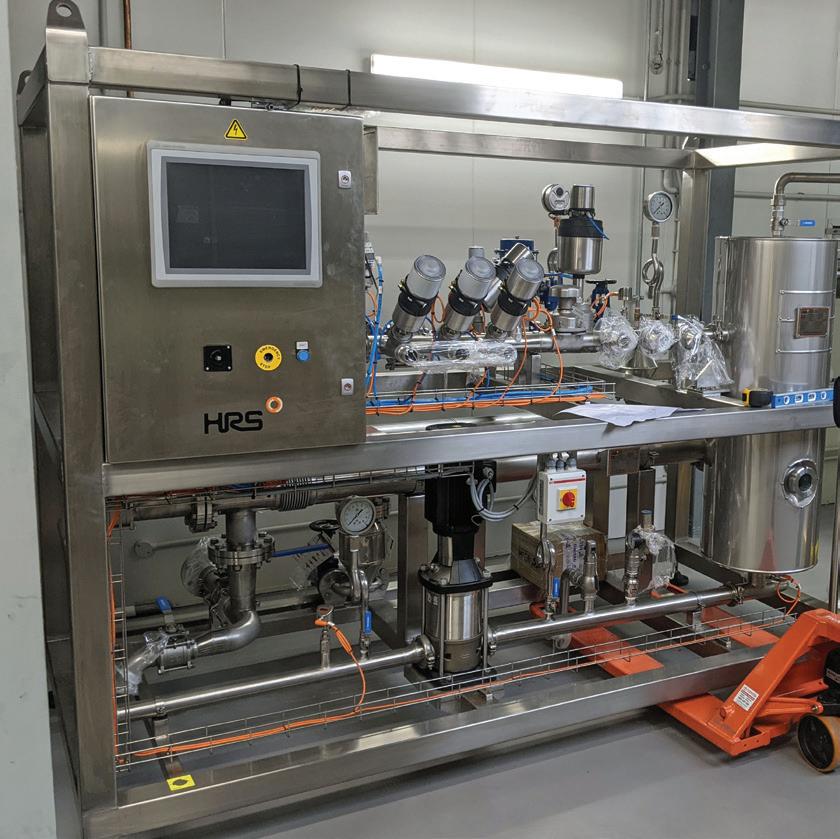
Design Notes
26 November 2022 DESIGN WORLD THE RIGHT STAMPING. THE RIGHT WASHER. RIGHT NOW. REQUEST YOUR FREE 2023 Catalog & Calendar bokers.com(800) -WASHERS
WILL BE THERE. For over 100 years, nearly every industry across the globe has trusted Boker’s to provide quality components, world-class service and on-time delivery.
multi-
corrugated
HRS www.hrs-heatexchangers.com
BOKER’S
The HRS uniT uses two K Series
pass
tube heat exchangers to maintain solvent temperature as required.









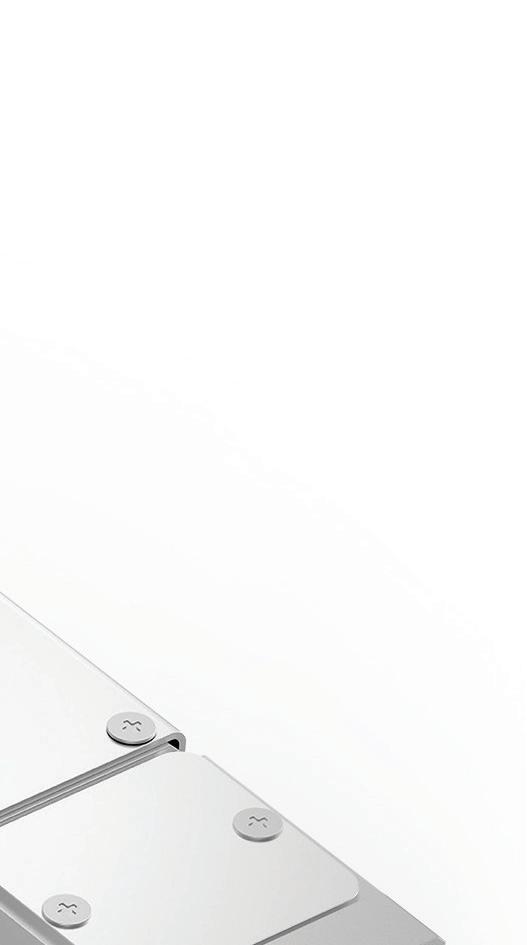


1. 2. 3. 4. Balls
and rail for optimum stability Single, U-shaped rigid steel rail and base can be one-end supported Four ball circuits (not just two) for moreload and accuracy Circuits positioned closer to base for more stability.
Actuator–Greater Loads, Precision & Rigidity...All In Less Space Why our single axis ball screw slide guide bests the competition:
have 4, not just 2, points-of-contact to guide block
BG
New king pin and thrust bearings save costs for forklift company
Edited by Mike Santora • Managing Editor
When a South A ican forkli rental company was seeking reduced downtime, expenditure, and fewer equipment repairs, they contacted Vesconite Bearings about its king pin and thrust bearings.
This is according to brothers Jacques and Van Rhyn , who, together with their father, Japie du Plessis, supply forkli s to clients in the agriculture, uit, and wine industry through JP Fork Truck Rental, a family-owned and operated company.

In the forkli hire industry, clients o en say, “rev it like a rental,” indicating that rental machines are used intensively since maintenance and repair costs are allocated to the rental company.
In extreme cases, clients li loads that exceed the capacity of the machine, causing the rear wheels of the forkli to li and then drop, o en causing damage to the axles.
“It caused severe damage to the rear axles, and we would have to collect the forkli om our clients to do the repairs and send some of the parts to an engineering workshop to have them fixed,” said Van Rhyn. “And it used to cost a lot of money,” he added.
This was before the rental company moved to Vesconite low- iction wear-resistant king pin bushings and thrust bearings for the main pivot point on the rear axle.
The Vesconite parts replaced the conventional needle roller bearings for the king pin and the thrust bearings.
Design Notes 28 November 2022 www.designworldonline.com DESIGN WORLD
Van Rhyn also said that Vesconite king pin and thrust bearings do break in some instances, but in most cases, they only deform slightly.
“If the part has deformed, it usually is an indication of impact, and the bushing is either replaced or shimmed and can be used again,” he said.
Jacques, who has completed a Ph.D. in mechanical engineering, commented that the rental company appreciates the new king pin and thrust bearings’ hardness while still being ductile enough not to crack or shatter under impact.
“It can withstand a lot of wear. It is hard and, at the same time, not brittle,” he noted.
The ability to withstand high axial loads and stress is particularly important in forkli thrust bearings due to the weight of the machine’s counterweight, which needs to absorb impact and not crack or shatter.
The brothers explained that conventional thrust ball bearings
Quantifying the savings from this upgrade is di cult, but the downtime has been significantly reduced, which has led to savings in maintenance and transport costs.
were used before the introduction of Vesconite’s plain bearings.
With a ball bearing, the contact between the axle and stub-axle is multiple point loads (contact with the balls) ,and, in the case of a severe impact, the ball bearings shatter or even push outwards, breaking the bearing housing. This causes the steering plates and the stub-axle to bend and the stub-axle to rub up against the axle resulting in extreme wear on the components.
Quanti ing the savings om this upgrade is di cult, but the downtime has been significantly reduced, which has led to savings in maintenance and transport costs.
“Re-occurring bearing failures were eliminated, which means that these parts are now on a preventive maintenance schedule instead of corrective or failure maintenance schedule,” said Jacques.
“This has saved a significant amount of downtime and inconvenience for both our clients and ourselves,” he noted.
























JP Fork Truck Rental is so impressed with the new parts that it has installed Vesconite mast liners and trunnion bearings in addition to king pin and thrust bearings in about 80% of its fleet of more than 80 forkli s.

It also expects to have all its machines fitted with new parts by the end of this year.
“Clients are happier when you don’t have downtime on your machines,” said Van Rhyn. “This is not an issue anymore.”
DW
Vesconite Bearings www.vesconite.com
DESIGN WORLD www.designworldonline.com November 2022 29
For demanding measurement tasks, the IF2001/USB interface module is available, which also supports the RS422/USB signal conversion.
Laser triangulation sensors for a range of applications

 Edited by Mike Santora • Managing Editor
Edited by Mike Santora • Managing Editor
The compact optoNCDT 1420LL laser sensors perform precise distance measurements on metallic and structured surfaces. The sensor projects a small laser line onto the measuring object, compensating for any interference. This ensures stable and reliable measurement values. The sensors are used whenever standard laser point sensors reach their limit.
The optoNCDT 1420LL laser sensors work with a small laser line rather than a laser point. This allows them to measure accurately even on rough, diffuse, and shiny metallic surfaces. Their laser line ensures optical averaging and compensates for irregular surfaces. They achieve reliable, highly precise measurement values on rough surfaces, defects, recesses, and holes. The optoNCDT 1420 LL models are available with measuring ranges of 10, 25, and 50 mm.

The standard model has a glass cover pane to protect the receiver unit. In addition, the optoNCDT 1420 series sensors can also be equipped with a protective film to prevent external influences om causing damage to the cover glass and unwanted reflections. The film avoids scratches and streaks, which increases signal stability.
The IC2001/USB single-channel converter cable is available as an additional accessory. It establishes a USB connection to the sensors via RS422. The advantage is a costeffective connection solution for permanent installation. The unshielded cable allows a maximum data rate of 1 MBaud.
For demanding measurement tasks, the IF2001/USB interface module is available, which also supports the RS422/USB signal conversion. DW
Micro-Epsilon www.micro-epsilon.com
30 November 2022 www.designworldonline.com DESIGN WORLD Design Notes
INFRASTRUCTURE ENGINEERING











FLUID
INTERNATIONAL
POWER EXPO MARCH 14-18, 2023 LAS VEGAS, NV, USA The International Fluid Power Exposition (IFPE) is the place where engineers meet to: “ There’s no other show in the world I think that brings the OEM machine manufacturers and the suppliers as close together as this show. It’s a good place to meet and learn about what’s going on. In the Americas, in the Western Hemisphere, this is the show for fluid power.”
IFPE only happens once every three years! REGISTRATION OPENS EARLY AUGUST See why IFPE is the can’t-miss fluid power
of
Learn
Discover solutions current suppliers can offer
your
challenges. Find
partners
suppliers
CONNECT WITH TOP MANUFACTURERSCO-LOCATED WITH CONEXPO-CON/AGG (two shows, one price) Including Bosch Rexroth , Danfoss Power Solutions , Parker Hannifin , Poclain , IFM Efector , Hawe Hydraulik , Husco , and 375+ more! Join your
these OEMs: ∙ Caterpillar
∙ Volvo Construction Equipment ∙ Liebherr ∙ CASE Construction Equipment ∙ Komatsu ∙ John Deere Construction ∙ Doosan Bobcat ∙
∙ LBX
#1 Trade
&
for Fluid Power, Power Transmission, and Motion Control
KEN ROSENBECKER SALES MANAGER NORTH AMERICA | WIPRO
event
2023!
more at IFPE.com
to
unique
new
among
pushing the envelope on what fluid power can do.
peers from
Inc
KOBELCO Construction Machinery USA
Company Spark new ideas with in-depth technical conversations with other engineers. The
Show
Conference
Internet of Things
The benefits and challenges of real-time manufacturing data collection
Bill Dykas • Senior Product Manager of Telit IoT Platforms • Telit
Because data collection is the foundational element of the Internet of Things (IoT), it stands to reason that the quality of manufacturing data analytics is proportional to an organization’s data collection capacity. For a large majority of manufacturers, however, real-time data collection presents a major challenge, which is why many Industrial IoT projects fail to deliver at scale. Considering the disparate and numerous machines and devices that make up the manufacturing ecosystem (sensors, robotics, cameras, and more), it’s not surprising that real-time, low-latency data collection is complex. Add to this the fact that many organizations make the mistake of looking past the data collection stage while planning IIoT projects. Yet, failing to consider processes and tools for distributing and transforming data prevents organizations om realizing the value data brings. Better data can help businesses increase process e ciency, including eliminating unplanned downtime with predictive maintenance, reducing costs and risks to workers, meeting regulatory requirements, and creating new business models.
It’s vital to recognize that real-time data collection doesn’t stop at collection. It must be managed, distributed, and transformed to give businesses full benefits. One of the most limiting factors lies with the existing communications standards. Many manufacturers rely on
Open Platform Communications (OPC), which has been a key interoperability standard since 1996. Although useful, this aging standard by itself can’t keep pace with today’s changing needs. OPC is the standard approach for supervisory control and data acquisition (SCADA) and human-machine interface (HMI) systems to interface with programmable logic controllers (PLCs). The original OPC specification was tied to the Microso Windows operating system (OS). OPC Data Access (OPC DA) and Microso definitely took connected manufacturing a significant step forward. However, using OPC DA in today’s manufacturing climate poses several challenges. OPC’s underlying technology is so aligned with Microso that it isn’t compatible with many other technologies. As OSs like Linux become prevalent in manufacturing, companies relying on OPC DA can find their interoperability plans thwarted.
Manufacturers need a better way to connect their organizations and make the most of the IoT revolution considering that not every machine has an OPC interface nor is every machine network connected. To quickly establish connectivity om shop floor to top floor, and their ecosystems, there is a clear need for developing and improving the device drivers and their ability to read the data and collect it om multiple mediums, including audio and video.
This data collection technology must be smart enough to know what to do if the system in which it is connected is o ine. It must also be able to store and forward the data to distribute it in a cost-effective and e cient manner. The data must then be transformed to ensure transparency and accessibility all while in context within the business process.
Most important, businesses need the flexibility to change how data are collected depending on the use case and environment — and without the need for developers to build custom code to create the interfaces connecting diverse components. With the right technology, manufacturers can mask the complexity of connecting the factory or plant floor
32 November 2022 www.designworldonline.com DESIGN WORLD
Manufacturers need a better way to connect their organizations and make the most of the IoT revolution considering that not every machine has an OPC interface nor is every machine network connected.
to IT systems, as long as the solution is flexible and agile enough to collect data when needs change.



















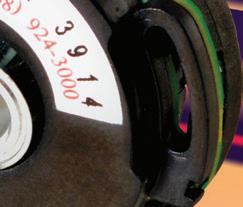
It doesn’t take years to prove the value of operational data and what it can do for businesses. Some systems are capable of launching projects in a matter of weeks, acting as the edge intelligence. When operating on multiple hardware platforms, these systems are capable of growing a library of hundreds of device connection drivers — with industrystandard connection so ware like OPC UA and DA and device-specific native drivers — that can read and write directly to enterprise systems. The edge logic engine transforms the data without the need to write custom code.
These IIoT systems are the backbone of digital transformation, with 5G accelerating this transformation by eliminating cabling and enabling ultra-reliable, mission-critical wireless communications. By improving realtime data collection capacity, especially when IoT benefits are becoming business necessities, the entire supply chain — om the creation of raw materials to finished products and right down to last mile delivery — is elevated to a new level. Most important, when real-time data collection capacity is optimized, the promise of IIoT will become a reality. DW



Telit www.telit.com
Sense



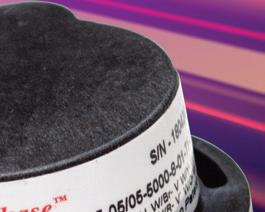
Since 1999 Quantum Devices has been known for innovation in encoder manufacturing and customization to match requirements. Let our engineers assist in your sensor design. Utilizing our own silicon foundry, we fabricate our own photodiodes. Then we build from the ground up, with design and manufacturing on-site allowing us to offer application-specific products.


Being vertically integrated and producing each critical element of our product line in-house, enables us to: Accommodate new business; Create drop-in replacements for hard-to-find or custom encoders; and Quick-turn prototypes.
WHAT DO YOU THINK?
Connect and discuss this and other engineering design issues with thousands of professionals online
DESIGN WORLD November 2022 33
Incremental Encoders 608.924.3000 quantumdev.com Better Design. Better Performance. Made in Barneveld,
USA Visit our online store. All orders ship within 48 hours.
the Difference.
WI
CAN-to-Fiber converters extend communications up to 40 kilometers
The ICF-11711 Series of CAN-to-fiber converters is for applications that involve long distance data transmission. When used in pairs to connect two CAN 2.0 or two CAN-FD devices or networks, ICF-11711 converters extend transmission distance by 2 kilometers (1.25 mi.) on multi-mode fiber or as much as 40 kilometers (24.85 mi.) on single-mode fiber, regardless of the CAN baud rate. The converters will transmit at data rates up to 1 Mbps in CAN interfaces and up to 5 Mbps in CAN-FD interfaces
Baud rates limit the transmission distance of a CAN system, as stated in the ISO 11898 standard. The faster the baud rate, the shorter the maximum transmission distance. ICF-11711 converters overcome this limitation, making it possible to deliver the expected baud rates over long communication distances.
Because industrial networking devices are usually deployed inside space-limited cabinets, these DIN-rail mounted converters measure 1.19 x 2.76 x 4.52-in., and come with 2 kV isolation and 2 kV surge protection for CAN port. Protected in a rugged, IP30 rated metal housing, the converters have an operating range of -40 to 75°C to help overcome harsh communication environments. An optional wall mounting kit is available. To make multiple device

configurations easier, Moxa CAN-tofiber converters have a DIP switch to change interfaces between CAN and CAN-FD. In addition, there is an auto baud-rate setting function for the CAN interface that eliminates the need to perform configurations. Also, in the event a communication error occurs, the user can check the built-in LED indicators to identi whether the error occurred in the CAN or fiber connection.
ICF-11711 converters can be used in a range of CAN (Controller Area Network) applications including factory automation, building automation, aircra and aerospace as well as in electrical vehicle (EV) charging stations. For instance, since CAN has been adopted as the bus for the internal batteries of electrical vehicles, these converters can enable the collection of valuable information, such as charging status and energy usage, om each electric vehicle and provide billing information to the vehicles’ owners, based on when and how much power supply their EV were charged with. DW
Moxa www.moxa.com
WHAT DO YOU THINK?
Internet
Things 34 November 2022 www.designworldonline.com DESIGN WORLD
of
and discuss this and other engineering design issues with thousands of professionals online
Connect
Antennas support Wi-Fi 6E
This line of 6 GHz, Wi-Fi 6E capable sector antennas suit indoor and outdoor applications such as large arenas and stadiums.
Wi-Fi 6E sector antennas offer high performance and throughput while supporting equencies om 2.3 GHz to 7.2 GHz. They feature 17 dBi to 20 dBi gain, 65° and 90° coverage and 2x2 MIMO port options for increased speed, versatile coverage, and less interference.
These antennas ship with universal radio brackets for easy installation and are shorter than 40-in., adhering to universal zoning compliance. They also feature Type-N connectors, 1200 MHz of extra bandwidth availability, and dual slant +/- 45° polarization.
Using these sector antennas with the extra 1200 MHz available in the 6 GHz Wi-Fi 6E band allows users to reach speeds up to 1 to 2 Gbps. The antennas work on 2.4 GHz and 5 GHz networks available today and allow future-proof network capabilities without a need for antenna changes. DW

KP Performance Antennas www.kpperformance.com
Angled NEMA Cords Made in the U.S.A!

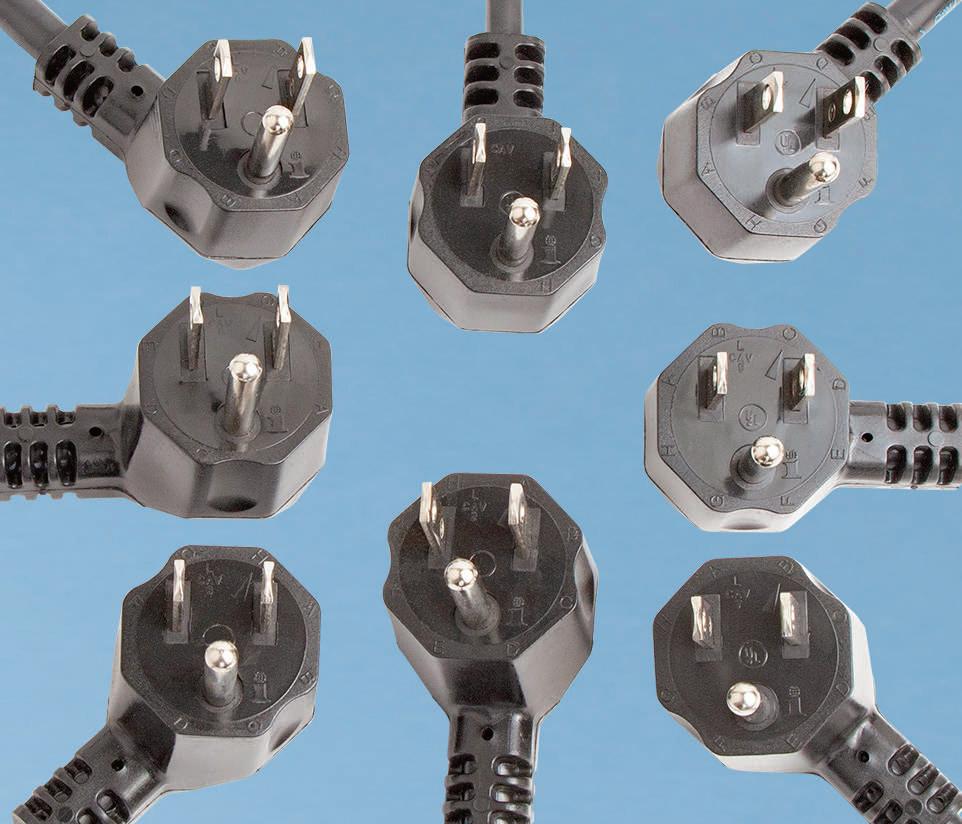
Interpower® offers 8 different angles of the NEMA 5-15 cord. When limited space between equipment and the power connection make cord direction critical, an angled cord minimizes the space between connectors reducing the strain on both plug and cord. Different cord angles provide multiple options on how a cord can plug into extremely tight angles—maximize the minimum space confining your cords!
• Manufactured & shipped in Lamoni and Oskaloosa, Iowa
• No minimum order requirements
• World-class customer service
® ®
Toll-Free Phone: (800) 662-2290 E-mail: info@interpower.com
Business Hours: 7 a.m.–6 p.m. CST Order Online! www.interpower.com
DESIGN WORLD www.designworldonline.com November 2022 35
Siemens boosts collaboration and performance with Solid Edge 2023
The latest release of Solid Edge so ware for product design, engineering and manufacturing, brings a new streamlined user experience, greater interoperability with the Siemens Xcelerator portfolio and greater capability and collaboration across many industry workflows.

In addition, Solid Edge will have new licensing options to better meet the changing business needs of small and medium-sized manufacturers, providing greater flexibility, more value and, with Xcelerator Share, greater collaboration and speed.
Solid Edge’s new look and feel brings a modern update to include more intuitive ways of working, greater personalization options and improved modeling workflows. Updates to the geometry definition tools in Solid Edge include synchronous technology applied to traditional ordered history-based parts and parts created using convergent modeling (using generative design or om 3D scans) can be used in simulations without the need for additional conversion.
Solid Edge 2023 also unlocks the power of design data while future proofing customers’ work – data om Solid Edge can be transferred between other solutions in the Siemens Xcelerator portfolio, including NX Mechatronics Concept Designer (MCD) and Process Simulate. Solid Edge 2023 also leverages Siemens’ leadership in Model Based Definition (MBD), with a new Solid Edge Advanced PMI add-on that delivers high-quality consistent dimensioning for downstream applications that can take advantage of 3D annotated product data models.
36 November 2022 www.designworldonline.com DESIGN WORLD
CAE Solutions
The new Solid Edge Inspector add-on brings tools to automatically identi , label, and extract critical design and manufacturing characteristics for inspection and metrology purposes, automatically generates high-quality inspection data and reports that facilitate communication in downstream manufacturing processes.









New advanced manufacturing capabilities include new Roughing for 5-Axis Machining in Solid Edge CAM Pro, a new 4-axis Rotary Machining add-on and new wire EDM functionality. For those working at the leading edge of machining, the new Smart Machine Kits library provides easy access to standardized, professionally built machine simulation kits, enabling machinists to get up and running with full machine simulation in a action of the time typically needed.





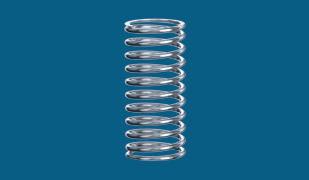









Also introduced with Solid Edge 2023, Solid Edge SaaS brings value-based licensing combined with cloud-connected, anywhere access through Xcelerator Share. The new flexible licensing option available through a Solid Edge SaaS subscription allows capabilities to be added when needed, providing access to integrated add-ons for generative design, point cloud visualization, electrical routing, PCB collaboration, advanced simulation and much more. All of these can be easily mixed and matched with a flexible token system.

Meanwhile, product engineering data can be stored securely in the cloud and easily shared by teams and wider value chain, anywhere, anytime, on any device using Xcelerator Share. Augmented Reality (AR) capabilities can be used to see that same data in the context of the real world. DW
Siemens
Industries So ware siemens.com/solidedge2023
DESIGN WORLD November 2022 37 Millions of Springs 1-800-424-0500 CHEMICAL RESISTANCE to acids, bases and salts SPECIFIC COMPOUNDS OFFER ELECTRICAL INSULATION Volume resistivity, 75°F 1014 to 1015 ohm-cm THERMAL CONDUCTIVITY 0.5 to 2 W/(m·K) 154 Hobart Street, Hackensack, NJ 07601 USA +1.201.343.8983 • main@masterbond.com www.masterbond.com
Digital
Connecting the cloud to PLM

Onshape-Arena Connection is a new functionality that connects cloud-native Onshape product development and Arena product lifecycle management (PLM) solutions. The Connection enables product data to be shared instantly between the Onshape and Arena solutions with the click of a button, helping companies to accelerate the product development process and simpli collaboration with supply chain partners.
The Onshape-Arena Connection supports continuous, cross-functional product development that can significantly reduce costs and schedule impacts on the manufacturing
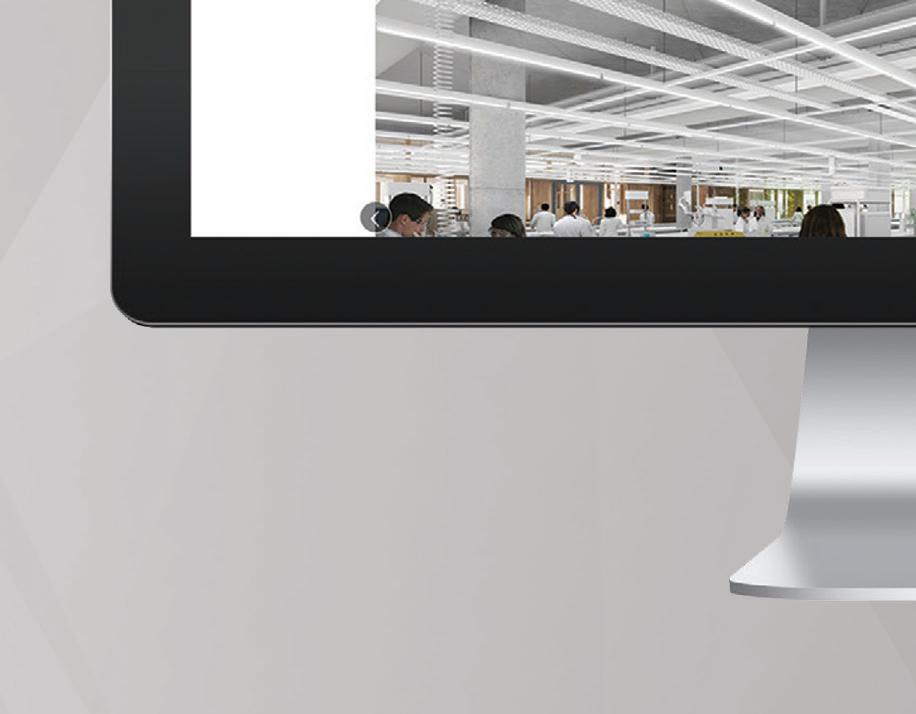
process. With the Connection, all stakeholders in the product development process – including design engineering, quality, procurement, and supply chain partners – are always working on the same version of a design. This allows for design reviews at any time and improvements to the product before investments are made in expensive manufacturing lines and tooling.



The Connection requires zero downloads, installs, or administration time and comes at no additional cost to Onshape and Arena users. DW









PTC | www.ptc.com


It’s not a web page, it’s an industry information site
So much happens between issues of R&D World that even another issue would not be enough to keep up. That’s why it makes sense to visit rdworldonline.com and stay on Twitter, Facebook and Linkedin. It’s updated regularly with relevant technical information and other significant news for the design engineering community.


CAE Solutions
rdworldonline.com
Congratulates





























Watlow is a global industrial technology and manufacturing leader that provides world class engineering expertise and innovative thermal products and systems that enable customers to thrive. Watlow brings its experience to numerous industries, including semiconductor processing, energy and environmental technologies, medical, clinical and analytical and foodservice equipment, to name a few. Since 1922, Watlow has grown in product capability, market experience and global reach. The company holds more than 1000 patents and employs more than 4,200 team members working in 12 manufacturing facilities and five advanced technology and development centers in the United States, Mexico, Europe and Asia. Watlow covers 95 countries through sales and distribution offices around the world. The company continues to grow, while the commitment remains the same – to provide its customers with superior products and services for their individual needs.
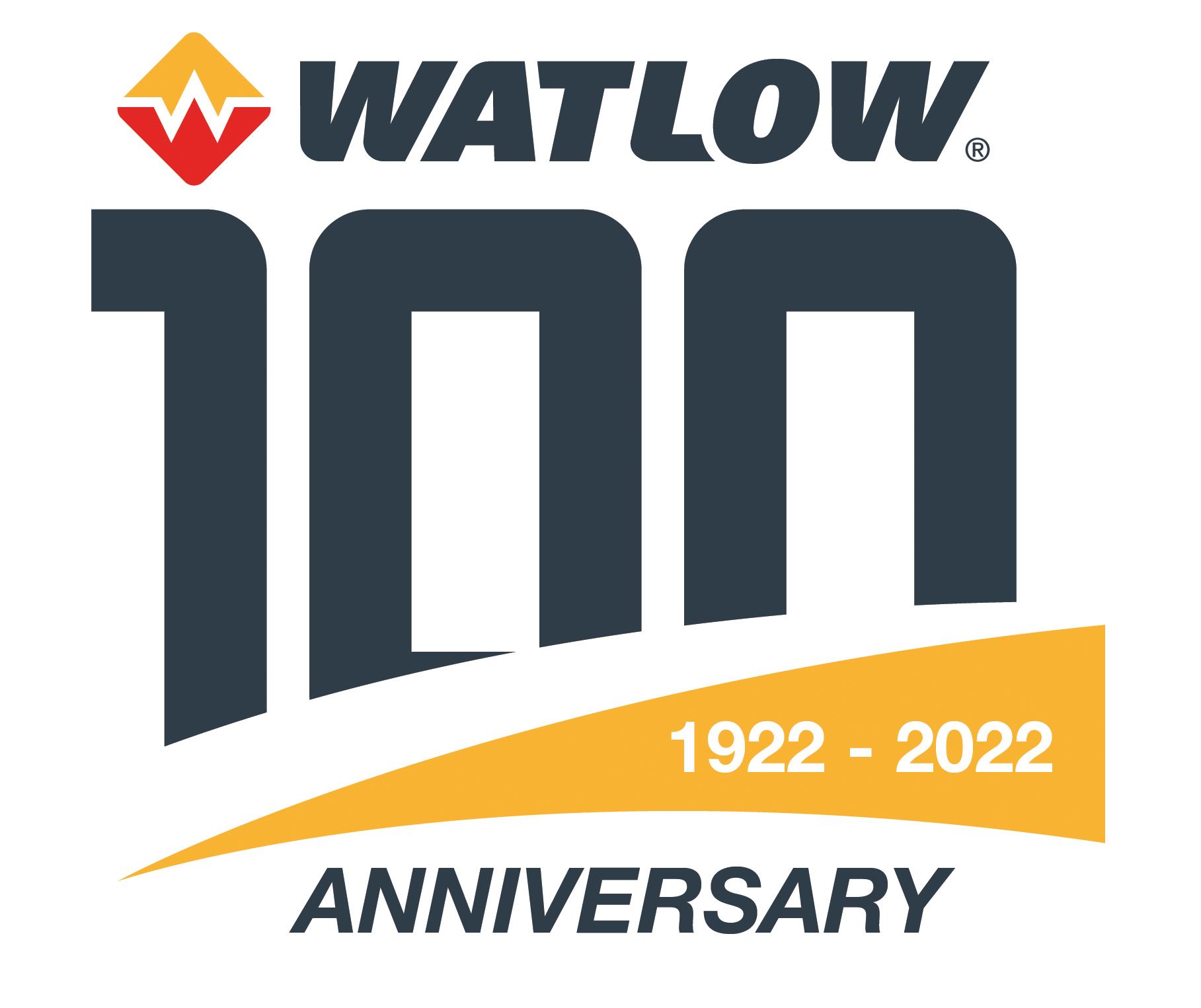
www.watlow.com • 314.878.4600
Modular industrial robotics:
New kinematic simplicity for plant engineers
By Matt Prellwitz | Drive Technology Product Manager

The Automation Technology for Robotics (ATRO) from Beckhoff Automation is a flexible and fully integrated multi-axis system that supports rapid robot assembly and programming.
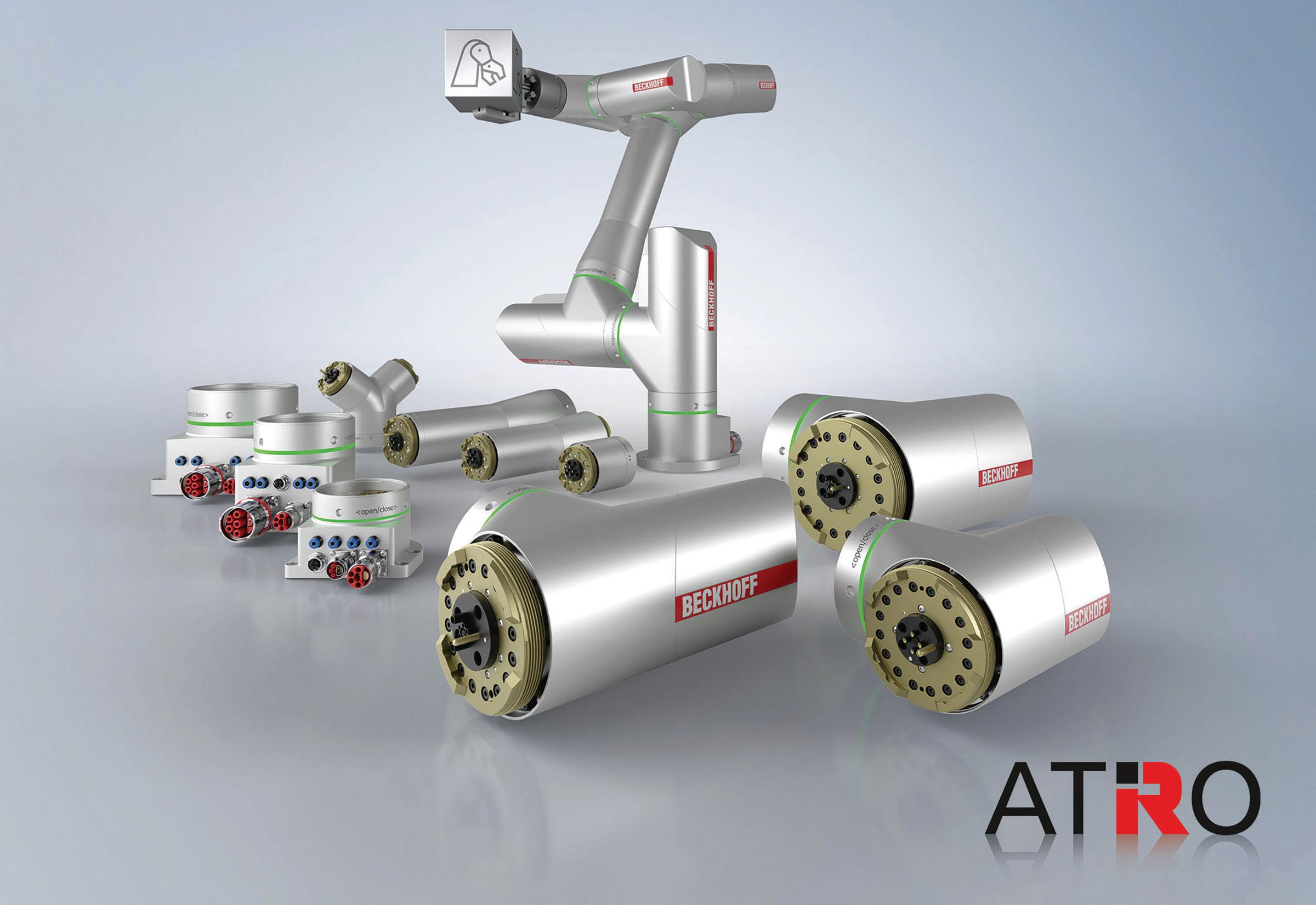
In fact, ATRO complements other technologies in the motion supplier’s New Automation Technology product range — including PC-based control, industrial PCs, automation controllers, operator interfaces, I/O, servo drives, and motors.
Traditional six-axis serial robotics and selective compliance assembly robot arms (SCARAs) have prebuilt structures and rigidly defined motions and degrees of freedom (DOFs). In contrast, now an entirely new series of field-assemblable robots is both programmatically and physically configurable (and reconfigurable) by engineers and plant staff alike. Called Automation Technology for Robotics or ATRO, each completed assembly consists of a base
module and a unique combination of other modules (each recognized as separate EtherCAT devices by controls) to make functioning robot tables, arms, or delta assemblies.
More specifically, ATRO kinematics are built of modules from four categories.
ATRO base modules (the first upon which other modules are stacked) include a ruggedized base
40 November 2022 www.designworldonline.com DESIGN WORLD
a fully modular and easy-to-program robotics technology lets engineers and other plant personnel quickly select and connect kinematic modules to create industrial robot arms.
Now
SPONSORED CONTENT
with mounting flanges, power and networking connectivity ports, and an output media feed that begins the internal run of media through the assembly’s interior to allow limitless joint rotations. (More on this shortly.)
Active motorized modules are open-ended arm sections containing a planetary gearmotor, brake, servodrive, and control electronics in a ruggedized cylindrical housing. Ends are threaded and studded with mechanical locking Hirth joints to quickly secure to other modules in the series.

These subsystems come in a variety of diameters, lengths, and shapes; both straight I-shape and angled L-shape motorized modules come in five power sizes. Because each active module forms a complete drive system for one robot axis, the only external components needed are a power supply and controller. It’s a structure that significantly reduces the amount of control-cabinet real estate consumed by hardware to command the robot’s DOFs.
Connection or linkage modules come in I, L, and Y shapes and allow further customization of the robot morphology. Featuring the same ruggedized housings and mechanical


Sidenote on Hirth joints
ATRO robotic arms make copious use of Hirth joints — a two-part mechanical connection named after the German engineer Albert Hirth featuring halves that engage via tapered teeth on their mating axial faces. Complemented by rotary unions for communications and power connectivity, Hirth joints are key to the quickassemble nature of ATRO arms, as they eliminate the need to finagle the linkage modules into secure coupling.
end-connection geometries as the ATRO system’s motorized modules, these serve as the movable joints of ATRO assemblies.
Finally, user-specified system modules integrate applicationspecific gripping or other end-effector functions.
With these core module options, a vast array of robotics is possible, including:
• Single-axis rotary indexing tables and two-axis trackers
• Three-axis delta robots (with supporting hardware) and four-axis pick-and-place robots
• Five-axis palletizing arms
• Six-axis serial arms
• Seven-axis robotics capable of specialty articulation for machine tending and similar tasks necessitating extension into hard-to-reach spaces inside machinery.
In some cases, the automation solution’s mechanics and part count can be reduced. ATRO’s extremely flexible structure lets it satisfy a variety of applications — even those involving payloads to 10 kg and reaches to 1.3 m.
Programming and controlling ATRO robots
ATRO features EtherCAT connectivity that complements the way in which the robot modules are commissioned and programmed via TwinCAT software. The latter features a vast model library to support standard as well as custom industrial kinematics for easier integration of robotic handlers into machine workcells. In contrast, traditional off-the-shelf SCARA and fixed serial robots are rarely a perfect fit for pre-existing or finalized workcell elements … thus complicating the setup of real-world applications.
The ATRO interface within TwinCAT supports 3D simulation of single robots to let end users build robots themselves using the base, active, and linkage modules just described. From there, virtual workpieces, trays, tables, baskets, machine access windows, imported machine CAD files, and obstacles (such as pillars, walls, and workcell fencing) in the TwinCAT GUI can be modeled to let the user define how the robot should interact with or avoid them.
Pick, turn, place, and myriad other moves can be set in the desired sequence and then exported.

DESIGN WORLD www.designworldonline.com November 2022 41 •••••••••••••••••••••••••••••••••••••••••••••••••• •••••••••••••••••••••••••••••••••••••••••••••••••• •••••••••••••••••••••••••••••••••••••••••••••••••• •••••••••••••••••••••••••••••••••••••••••••••••••• ••••••••••••••••••••
Once the controller receives the exported file, it builds the entire PLC code. Then users simply log into the controller via the GUI and click an enable button to run the robot through its motions. Coordination with advanced conveying systems and even levitating motor installations is possible, as are expansive configurations with as many as 16 ATRO robots.
Structures are simply scanned by the control software, and the TwinCAT robotic functions automatically create the corresponding control application — including a digital twin. (Where needed, the digital twin within TwinCAT can define stresses on ATRO’s mechanical components.) In-the-field teaching of ATRO systems is similarly easy; users simply grab the robot, move its connected modules through desired positions, and set the path and points via a connected HMI.
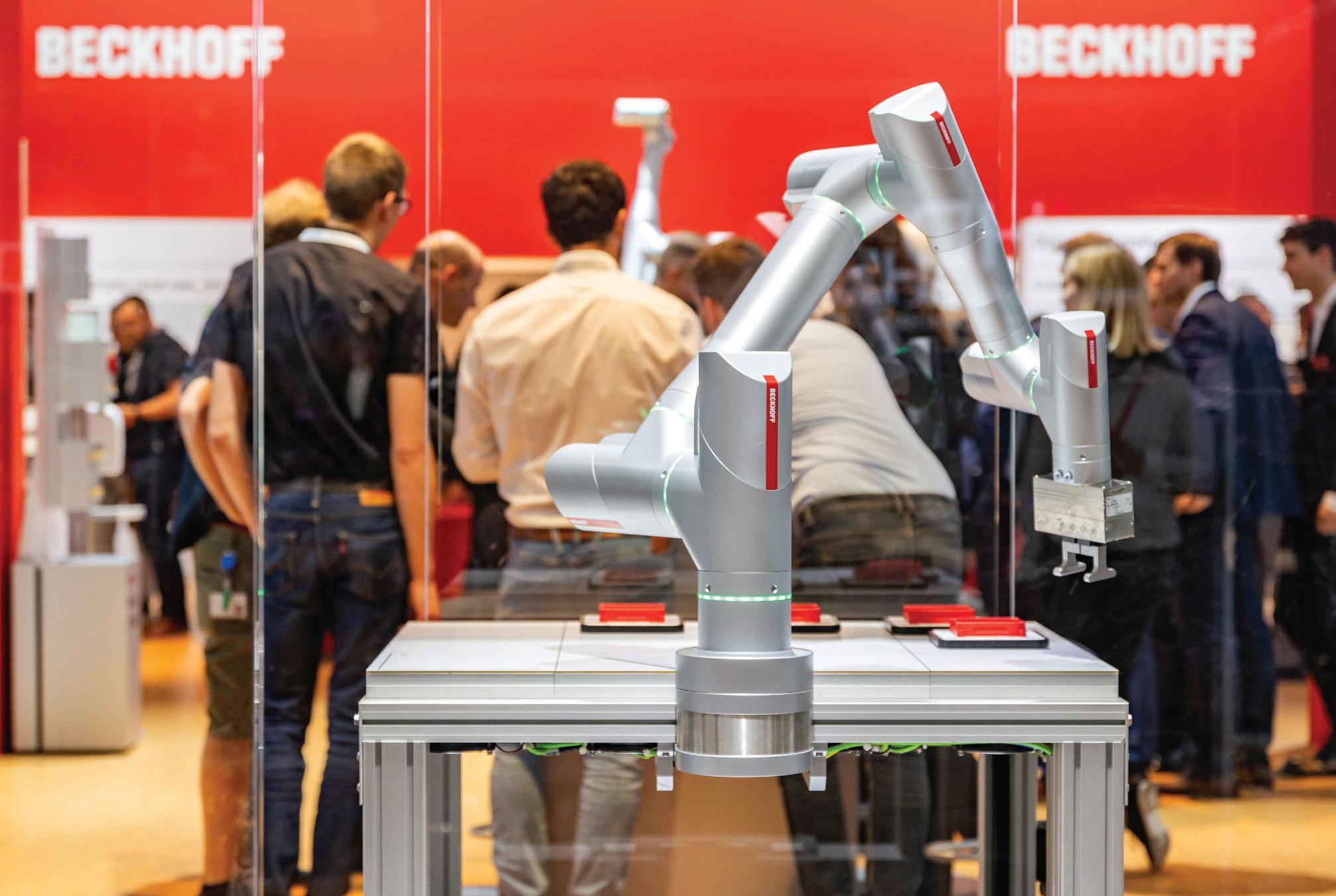

To be clear, users with different skillsets can choose from three programming options — basic routines
(for manual robot teaching), moderately sophisticated routines (for users who feel comfortable building, importing, and defining machine elements), and advanced routines for TwinCAT experts with proficiency in 3D simulation, coding operations, and line-by-line tweaking of automatically generated programming (as IEC 61131-3 structured text, ladder logic, or function-block diagrams — FBDs).
Physical system connections and communications
ATRO’s tight TwinCAT integration allows control of multiple robots via one controller. Even machine-vision image processing, machine learning, functional safety, and direct cloud integration (to support enterprise-level analysis and predictive maintenance routines) are possible. Synchronization of ATRO systems with XTS and XPlanar adaptive product handling systems within this common environment minimizes communication delays.
As mentioned, ATRO systems can also endlessly rotate at each joint. That’s due to:
• The gearmotor design in active modules
• Multi-turn servo-axis tracking of position
• Routing of power, communications, and other fluid media through the center of each robot module via rotary unions and Hirth joints.
The latter is particularly somewhat unique — especially as connections include four for compressed air, vacuums, water, and other fluids; EtherCAT and Gbit Ethernet; and 48-V as well as high-voltage AC power. All these connections render the ATRO capable of accepting various vendors’ end effectors and grippers (whether electromagnetic or pneumatic) which by definition are exceptionally job specific. Where might limitless joint rotation prove useful? Well, this gives ATRO
SPONSORED CONTENT
42 November 2022 www.designworldonline.com DESIGN WORLD
Beckhoff ATRO robotics are suitable for use in intralogistics, material handling, fabrication, medical assembly, and packaging applications.
systems maximum reachability as well as the ability to take especially short (read: fast) paths to reach given positions in 3D space. What’s more, it eliminates the bulkiness of cables run along the robot’s exterior as well as interfering torques so common in robots and collaborative robots (cobots).
The use of EtherCAT-standard LED communications (in the form of illuminated bands on every ATRO module) provides local diagnostics information. A module glowing blue indicates the ATRO is in teaching mode. Green indicates the module has a reliable connection and is ready to operate. Yellow indicates that an operation is being processed; red indicates the presence of an issue.
What prompted ATRO development — and emerging applications
ATRO satisfies a need for easy-toassemble custom machine-tending options, especially those requiring arms capable of reaching around obstacles within large equipment. Its customizable kinematics can also handle variable payloads and execute particularly complicated motions. Consider an application from the machine-tool industry — that of milling. Here, ATRO controls can nimbly interpolate the motion needed from the end effector to grasp, orient, and load workpieces into the machine … and then nimbly reverse the process once milling is complete.
Though ATRO systems aren’t yet certified for use as cobots, they do include 17 different drive-based safety modes, including limited speed and safe acceleration settings. The first cutting-edge ATRO permutations have taken the form of so-called octo-robots for advanced assembly and material handling applications.


Beckhoff Automation www.beckhoff.com
ATRO systems from Beckhoff adapt to tasks needing multiaxis motion. They’re also freely scalable, customizable, and expandable.
After programming, ATRO robotics use EtherCAT for direct integration into PC-based controls for automatically optimized workcells. In fact, one industrial PC can command multiple ATRO robots. Besides simplifying installation, that can also trim cost.
DESIGN WORLD www.designworldonline.com November 2022 43
for power-off considerations brakes
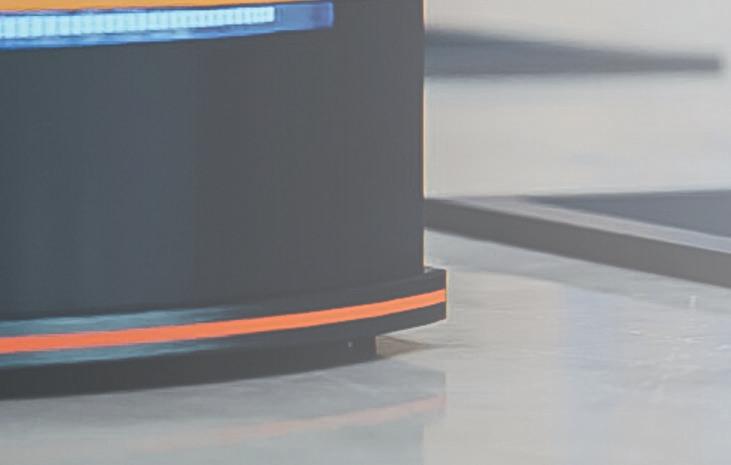









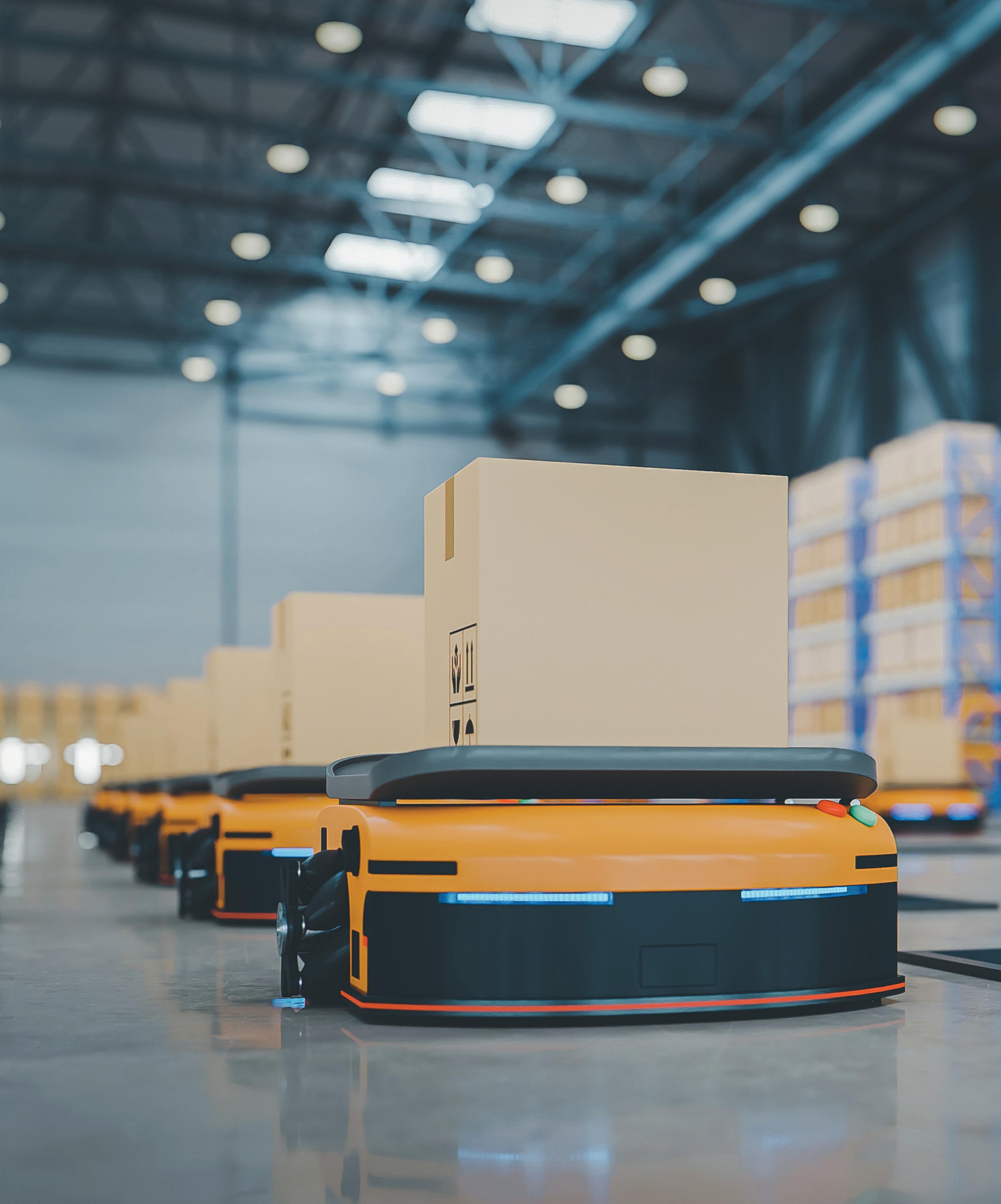











Motion Control 44 November 2022 www.designworldonline.com DESIGN WORLD Top 12design •••••••••••••••••••••••• •••••••••••••••••••••••• ••••••••••••••••••••••••
vehicles such as automatedwarehouse AGVs rely on power-off brakes for safe operation. | Vanit Jan via Dreamstime
brakes
demands fresh design approaches leveraging leading brake manufacturers’ accumulated design experience.
Key to optimizing designs for life, cost, and performance is early collaboration with the brake manufacturer.
Machine designers in the motion-control industry recognize powero brakes by the following terms: Holding brakes … spring-applied brakes … failsafe brakes … parking brakes … negatively actuated brakes … and permanent-magnet brakes.
No matter what an engineer likes to call them, these brakes serve the same purposes. Most frequently, these brakes perform as safety devices by managing motion control — namely through stopping, holding, or emergency e-stop functions. They also provide accuracy or positioning.
While spring-applied brakes actuate hydraulically, pneumatically, electrically, or manually, here we’ll focus on electromagnetic brakes that are electrically actuated. These are the most prevalent spring-applied brake worldwide … and the market for them is rapidly growing.
Found in a variety of applications, the most common applications for spring-applied electrically actuated brakes include servomotors, robotics, mobile robots, warehouse automation, wheel drives, hoists, elevators, doors and gates, industrial automation, surgical tools, grippers, conveyors, actuators,






automotive automation, and escalators. Now we’ll outline the top design parameters and approaches to overcome those concerns.


One: Power-off brake torque
When specifying a power-o brake, the first question to answer is: How much torque does the axis need?
The two torque ratings for brakes are static torque and dynamic torque.
On applications such as wheel drive brakes, the requirement is typically for holding only — a function that relates to static torque. Here, the motor brings the vehicle to a stop and then the
Brian Mather | Ogura Industrial Corp.
The proliferation of new applications for power-off
DESIGN WORLD www.designworldonline.com November 2022 45
•••••••••••••••••••••••••••• •••••••••••••••••••••••••••• •••••••••••••••••••••••••••• ••••••••••••••••••••••••
| Dreamstime.com
Electric
brake engages. Therefore, static torque is the primary concern here.
For an electric vehicle or similar applications, engineers should also consider the maximum weight of the vehicle including payload (as well as the slope on which the vehicle may park). Torque required for holding on a slope will be much greater than holding torque needed on flat terrain. Sometimes there are regulations or industry standards dictating the required capabilities of a given holding brake as well.
On the other hand, select equipment needs brakes for stopping or e-stops. Take for instance the unwelcome scenario of interrupted power while an electric vehicle is moving at speed down a hill. Here, the brake needs a proper torque rating to stop the vehicle within a certain time or distance.
Keep in mind that for a particular brake, the ability to make dynamic stops (typically for emergency stops) is far more modest than the static torque rating might imply. This dynamicstopping ability is highly dependent upon the engagement speed, heat dissipation capabilities,
and the materials used in the brake’s working surfaces. With higher speed, the maximum energy-dissipation capabilities decrease. For applications involving the occasional dynamic stop, check with the brake manufacturer to discuss:
• The application conditions
• Allowable engagement energy for e-stops or
• Total engagement energy allowed over the life of the product.
One of the best ways to reduce brake torque requirements is to mount the brake on the high-speed side of the axis’ power-transmission assembly. A common place to mount the brake is on the motor’s back end. (Some designs allow mounting on the front end but mounting on the back end is more common.) Mounting the brake on the “downstream” low-speed side
Here is how to calculate required torque.


This is an exploded view of one basic spring-applied brake from Ogura.

Learn how power-o brakes work by visiting ogura-clutch.com and checking out the supplier’s videos.
— meaning after the gearbox or other speed reduction in the drivetrain — will proportionally increase the torque requirement … necessitating a brake that’s larger and more expensive. In contrast, keeping the brake “upstream” of the gearbox means that the payload and drivetrain inertia reflected back to that brake is reduced.
Two: Power-off brake voltage
What voltage is available from the design’s power system? The most common voltage for most indusrial applications has historically been 24 Vdc. For many engine-driven applications, a 12-V battery onboard can power the brake — or the engine can provide power as well. Aerospace applications often use a 28-V source. For powered mobile equipment, 48 V is an option. For larger brakes, 72 V or 90 V is frequently used, because P = V·I — and higher required power delivered at higher voltage allows for lower current. When choosing a brake for a new application, consider the design’s power source and work with the brake supplier to get a brake coil for that voltage.
••••••••••••••••••••••••• ••••••••••••••••••••••••• •••••••••••••••••••••••••
Motion Control
46 November 2022 www.designworldonline.com DESIGN WORLD
Three: Power-off brake speed Speed is analogous to the torque question. It depends whether it is speed upon engagement or the unloaded speed. Holding brakes designs are for engagement at 0 rpm, so the only speed to consider is the unloaded speed. In this respect, the brakes rate for max allowable speed. Because airgaps are small and parts are not precisely balanced, there could be unintentional engagement at speeds above the published speed ratings. Equipment vibration and other outside parameters can also play a role. It is therefore important to confer with your brake supplier, and modified internal designs accommodate higher speeds if required.
For dynamic engagements, speed becomes extremely critical to the life of the brake. During dynamic engagement, the brake absorbs a level of engagement energy. That energy translates to heat and wear. Energy is a product of speed squared and multiplied by the rotating object’s reflected inertia. For fast rotation and high inertia, energy and wear are greater.



Holding brakes do normally withstand emergency stops (e-stops). Based on the manufacturer’s design, there may be maximum allowable engagement energy in an e-stop to prevent overheating or detrimental wear. E-stop cycles should be limited by design and considered during the











•••••••••••••••••••••••••••• •••••••••••••••••••••••••••• •••••••••••••••••••••••••••• •••••••••••••••••••••••••
DESIGN WORLD 47
equipment
AC
Order Today! 800.245.5013 • deltron.com Micrometer Positioning Stages Micrometer Driven Ball & Crossed Roller Stages CUSTOM DL Linear Ball & Lead Screw Actuators Save Time. Save Space. Save Money! Non-Magnetic Ball Slides Del-Tron’s DL Linear Actuators Other Precision Linear Motion Products • Compact space saving design. • Available with ball and lead screw technology. • Travel lengths up to 410 mm.
Standard selection of stepper and servo motor mounts provided.
Manufactured from corrosion resistant aluminum and stainless steel materials.
Also available in Double Wide (DW Series) for greater carriage mounting areas.
Covers, limit switches and other options available.
Solid Models Available for all Del-Tron Models. ISO 9001:2015/AS9100D CERTIFIED Linear Slides Ball & Crossed Roller Linear Motion Specialists deltron.com 800-245-5013 SLIDES AVAILABLE MADE IN USA
Legacy plant
still uses
brakes, but the trend is towards adoption of DCpowered brakes.
•
•
•
•
•
Shown is an example of super thin brakes made by Ogura.
selection process to ensure the brake will last for the desired life.
Four: Power-off brake size
There are a wide range of powero brake sizes. The smallest are 10 mm in diameter or less and used primarily on micro motors. The largest electromagnetic spring-applied brakes on hoists or elevators are quite massive. The latest trend is for super thin brakes. The thinnest brakes are in the range of ½ in. or 12 mm. A great deal of this is a result of the robotics boom and the growth of the electric wheel drive market. For robotics, thin brakes on robotic joints allow for a smaller assembly, lower inertia, and greater throughput from the system. For wheel drives, two motors are often mounted inline and axial space is extremely limited. Often, super-thin brakes mount on pancake type drive motors. Specialized brake bodies can even


serve as the end bell of the motor to save still more space.
The relationship between size and torque is defined by the laws of physics. However, power controls have become more sophisticated and commercially practical over the years. Moreover, it’s possible to get more torque in a smaller package when compared to designs from years ago. Selected brakes now use overexcitation to overcome the spring force to disengage the brake. After a quick disengagement, inductance (magnetic strength) of the brake increases and the power required lessens while keeping the brake in that disengaged state. This also helps with heat and power consumption.
Five: Power-off brake wear
Brake wear is the result of dynamic engagement. There is a direct relationship between dynamic engagement energy and wear on the friction surfaces. Design life is based on this wear rate, combined with the number of cycles desired.
Holding brakes have materials designed for static engagements only. They have a high coe cient of friction, so they o er higher torque in a smaller size … but the downside is that they are unable to withstand repeated dynamic engagements.
The friction material in a brake designed for dynamic stopping is quite durable and it is important to di erentiate between a stopping application and a holding-only application to determine the proper brake selection for desired life.
Shown here are examples of micro brakes made by Ogura.
Six: Power-off brake temperature
Heat is the worst enemy of a clutch or brake. Dynamic engagement generates heat. The current flowing through the brake coil generates heat. When temperature rises, the resistance of the coil increases and the current drops with constant voltage. V=I ´ R. So, when wear increases the internal airgaps and temperature increases the coil resistance, it is more di cult for the brake to disengage because the current is comparatively lower. For cold temperatures, the brake coil resistance decreases, and the brake engages more easily, forbidding ice or other thermal contraction issues do not pose a problem. Upon specifying a brake, it is important to consider the temperature extremes in conjunction with the environment and the duty cycle.
Duty cycle is important. Firstly, if there are dynamic engagements, life will be dependent upon the number of cycles. See the previous comments on wear. Secondly, high duty cycle results in increased heat. Heat generates via the current flowing through the brake coil. It generates during dynamic engagements as two surfaces come into contact and experience momentary slipping as the load slows or comes to a stop. It is important to review the duty cycle with your brake supplier so that max temperature limits are not exceeded, and brake components can be designed to last for the desired product life.
Seven: Power consumption and heat
One way to reduce power consumption and reduce heat buildup with a springapplied brake is to use pulse width modulation or PWM. When the brake is engaged (in its power-o state) there is an airgap between the coil body and pressure plate. When applying current to the brake coil, it generates electromagnetic flux to travel across that airgap, which then pulls the pressure plate against the coil body. This compresses the springs that supply the normal force for the brake torque.
••••••••••••••••••••••••• ••••••••••••••••••••••••• ••••••••••••••••••••••••• Motion Control
48 November 2022 www.designworldonline.com DESIGN WORLD
The brake is then free to rotate.
Initially, full power releases the brake. Once the brake disengages, the airgap no longer exists between the pressure plate and the coil body. This means that the inductance changes. The magnetic strength is strong. For this reason, it now requires much less power to keep the brake disengaged.
PWM enables substantial reduction of the average power (voltage) while the brake remains in the disengaged state — by 50% as a rule of thumb. (Of course, every machine is di erent.) This keeps the brake cooler and reduces power consumption … with the latter especially helpful in battery-powered equipment.
Another approach with comparable results is to use overexcitation to disengage a brake. For brakes designed for this, smaller spring-applied brakes can deliver more torque. For example, 24V powers a 12V brake
coil for brief period while the brake disengages. Once disengagement is complete, the voltage drops back down to 12 V. Not only does this allow for power savings and lower heat, but it also allows for lighter weight and lower inertia designs.
Eight: Power-off brake response time
In robotics and medical applications, response time is often important for positioning and accuracy. This relates to both the brake engagement and disengagement times. For applications where quick brake engagement is critical, a Zener diode helps speed up the brake engagement. When power is removed from the brake coil, it naturally takes some time for the flux to decay. By using a Zener diode circuit, it collapses the electromagnetic field quicker which helps the springs
This is the relationship between expended energy and brake life.

Shown here is a variety of spring-applied brakes made by Ogura Industrial Corp.

engage the brake. Overexcitation, mentioned earlier, is a control method to improve the brake release response time.
Nine: Power-off brake environment
In the past, most indoor industrial applications were seldomly exposed to harsh environments. Today, more applications than ever are exposed to extreme temperatures, contaminants, and high relative humidity. This is partly due to higher levels of automation and partly due to the growth market of battery-driven equipment. Electric wheel drives on golf carts and even passenger elevator brakes have used rubber rings for years to cover the exposed friction material on springapplied brakes. This proved to be an e ective method. Other methods include completely enclosing the brake, which can add significant cost. Another method to protect the friction area of
•••••••••••••••••••••••••••• •••••••••••••••••••••••••••• •••••••••••••••••••••••••••• •••••••••••••••••••••••••
DESIGN WORLD www.designworldonline.com November 2022 49
the brake is to extend the coil body to mate with the motor end bell. In this case, a groove and O-ring improve sealing even further. A straightforward way to protect the brake from the environment is to add a cover to the entire brake. This would bolt to the motor or to an adapter plate.

Temperate extremes should be considered early in the design process. If relative humidity is high and the equipment finds itself in freezing temperatures, it’s key to keep moisture out of the brake’s friction area. Wet surfaces can reduce torque ratings because of the lower coe cient of friction. Additionally, dewy surfaces may freeze and cause problems.

Extremely hot settings are also a challenge. Heat is a concern because higher temperatures increase coil resistance and renders it more di cult for electromagnetic flux to travel across the brake’s airgap. To make matters worse, airgaps increase after brake wear occurs. Higher temperatures will also degrade the wire insulation over time … and reduce useful brake life. For this reason, it’s essential to consider maximum operating temperature, duty cycle, and product life when sizing and selecting a brake for a new application.





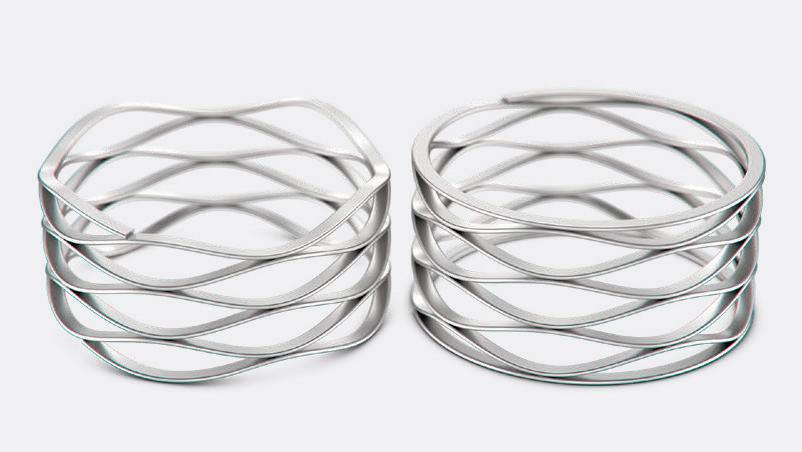



Ten: Power-off brake backlash


Backlash (both initial and end-of-life backlash) is a design consideration that’s especially important to consider when building high-cycling applications such as robotics or precision applications such as medical equipment or semiconductor manufacturing. Often, design quality is dependent upon this level of brake backlash.

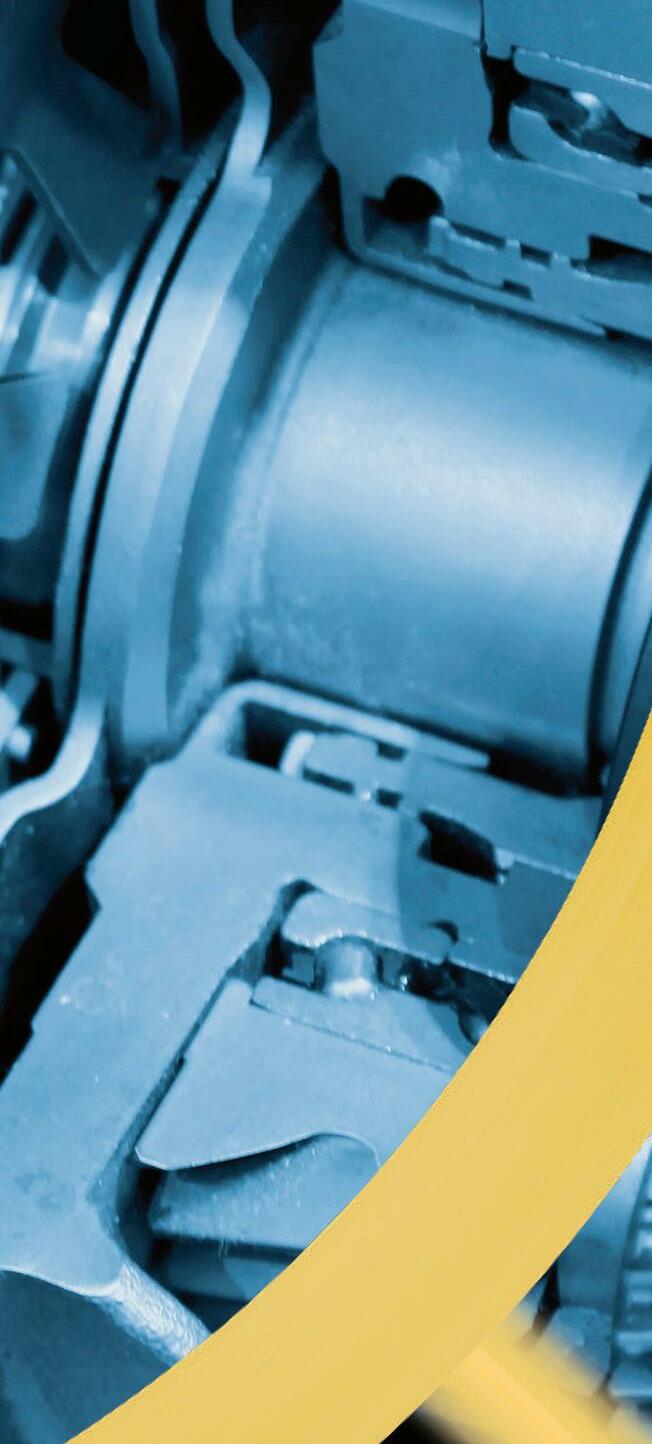
There are specific design elements to produce limited or near-zero backlash. There are also internal features of the brake (related to materials, contact areas, tolerances, and

Motion Control
••••••••••••••••••••••••••• ••••••••••••••••••••••••••• ••••••••••••••••••••••••••• ••• 50 November 2022 DESIGN WORLD Some springapplied brakes made by Ogura have manual release levers. SICK OF COIL SPRINGS? Request Free Samples at 847-719-5900 or smalley.com We were too. That’s why we invented the wave spring. • Optimize Application Space & Weight • Industry-Specialized Design Support • Large Selection from Stock • Easy to Customize Crest-to-Crest® Wave Springs
more) that contribute to preservation of limited backlash or to unwanted wear or expansion of backlash conditions. If low backlash is a critical design element, it’s best for machine builders to collaborate with the brake specialists on a design that fits the application needs.
Eleven: Power-off brake manual release
Sometimes during service intervals, shutdowns, or power interruptions, there is a need to manually release a brake. In a spring-applied brake this actuation happens electrically … but it also can take place mechanically. Smaller brakes may not need manual release because it’s physically easy to slip the brake. High ratio gearboxes could make this more di cult though. For larger brakes with higher torque ratings, the simplest method is to include threaded manual release holes into the brake. Release bolts manually push the pressure plate against the coil body which releases the brake.
If desired, manual release levers are available, and there are countless designs on the market. These levers can attach to a cable pull so that the operator can release the brake without getting physically close to it. The actuation distance of the pressure plate is quite small and is based on the brake’s internal airgap. In the end, manual release is often an unintended occurrence, and the simplest method is often the best.
Twelve: Power-off brake cost
The focus of this article has been electromagnetic spring-applied powero brakes. However, there also exists electromagnetic permanent-magnetapplied brakes. Spring-applied brakes are by far the more popular choice around the world — so produced in
higher volume by more manufacturers, and at a lower cost. In contrast, permanentmagnet brakes are comparatively costlier but provide advantages for certain applications. They’re very torque dense, so sometimes deliver more torque for a given component size. Permanent-magnet brakes also excel in applications needing controlled stops or soft stops. This is because input power controls the brake torque.
Spring-applied brakes on the other hand are either on or o — and engagement time is very quick.
When considering a brake for a new application, it’s wise to contact the manufacturer for help in making a brake selection that best balances cost, performance, and life objectives. Another benefit of engaging the manufacturer early in the design process potential access to brake designs outside of published catalog models. Engineers who only select brakes from catalogs might miss opportunities to specify much better alternatives. DW
Industrial Corp. ogura-clutch.com
Ogura
WHAT DO YOU THINK?
Connect and discuss this and other engineering design issues with thousands of professionals online

DESIGN WORLD www.designworldonline.com November 2022 51 •••••••••••••••••••••• •••••••••••••••••••••• •••••••••••••••••••••• ••••••••••••••••••••••
| AdobeStock
Edited by Miles Budimir • Senior Editor
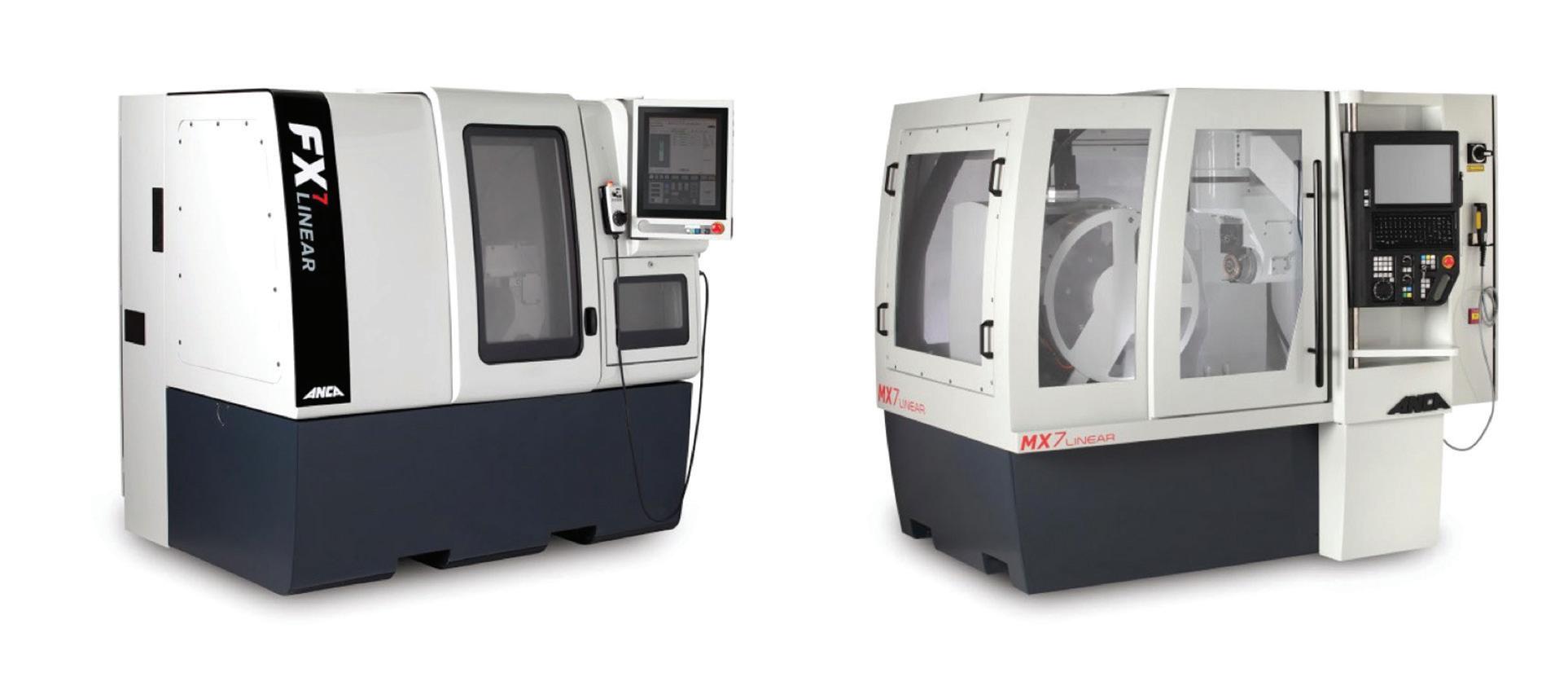
Linear Motion
52 November 2022 www.designworldonline.com DESIGN WORLD Linearmotors nd a home in CNC machines •••••••••••••••••••••••• •••••••••••••••••••••••• •••••••••••••••••••••••• For one manufacturer of CNC grinding machines, new high-performance linear motors replaced ball-screws and improved machine performance.
Linear
Linear CNC
The FX
and MX
grinding machines from ANCA Machine Tools both incorporate the LinX S-Series linear motor as the primary drive system.
t’s no secret that linear motors are highly e ective motion devices. Linear motors can achieve high acceleration rates and long travel lengths with good thrust forces and extremely high positioning accuracies, while other drive mechanisms, such as belts, screws, or rack and pinions, must sacrifice at least one of these requirements in order to achieve the others. This is why linear motors are the preferred choice for highly dynamic applications such as in metrology and in semiconductor manufacturing.
In fact, based on their performance specifications, linear motors seem to be the perfect solution to address the competing requirements often found in linear motion applications. Still, linear motors are not as widely adopted as perhaps one would expect. There are a few reasons why their adoption rate lags behind other drive technologies such as belts, screws, or rack and pinion devices.
Still, despite the potential di culties posed by heat generation, protection from contamination, high-bandwidth controls, and cost, the adoption rate of linear motors is growing. Once seen as niche solutions for semiconductor, metrology, and heavy-duty machining applications, iron core, ironless, and tubular linear motors are now used in automotive, food and packaging, and printing applications, where the moves may not be as challenging or the
accuracy requirements as demanding, but where the benefits of fewer components, less downtime, and higher throughput justify the additional cost and design considerations.
Linear motors in CNC machines
One example of how linear motors are being incorporated into CNC machines comes from ANCA Machine Tools, or AMT. The company, sister company of ANCA Motion, manufactures quality CNC grinding machines. It launched several new machines during the past eight years, aiming to strengthen the value proposition they o er to CNC customers. The most significant o erings include their FX Linear and MX Linear machines, both of which are powered by the LinX Linear Motor developed by ANCA Motion.
Prior to the development of these two machine o erings, the company had observed the rise of linear motors in the industry. “AMT was aware of the benefits that linear motors can bring. Over time the ball screws can wear even on the best machines, and you have to consider backlash and the loss of preload,” said Simon Richardson, AMT MX platform product manager. “When installing and aligning a ball screw on a machine, tighter tolerances are required over the entire length of the ball screw when compared to fitting of linear motors.”
However, the company had resisted using linear motors for quite a long time. Philip Wysocki, electrical
DESIGN WORLD www.designworldonline.com November 2022 53
•••••••••••••••••••••••••••• •••••••••••••••••••••••••••• •••••••••••••••••••••••••••• •••••••••••••••••••••••••
I
Once seen as niche solutions for semiconductor, metrology, and heavyduty machining applications, iron core, ironless, and tubular linear motors are now used in automotive, food and packaging, and printing applications.
systems engineer at AMT, noted that “the traditional linear motor is flat in construction, which creates many issues when implementing these motors on machines.” Machines with flatbed linear motors typically require a separate chiller for thermal stability, and the attractive force between coil and magnet bed creates tremendous downforces on the bearings, making everything wear faster and decreasing e ciency. Plus, flatbed style linear motors used in grinding machines typically have a back-iron in their magnetic circuit, further increasing the downforces and creating cogging.
The LinX Linear Motor overcomes the problems related to flatbed linear motors and delivers superior performance due to its state-of-art cylindrical design. The motor consists of a shaft containing magnets and a forcer containing wound copper coils. The symmetric design results in zero attractive forces between the forcer and shaft, significantly reducing the loading requirement on support bearings. The thermal barrier design separates and removes heat from the motor, eradicating thermal growth for the machine. And because of its good standalone thermal stability, AMT’s machines don’t require a dedicated chiller for the motor. This provides an advantage over competitive flatbed motor-based designs by significantly reducing power usage and footprint.
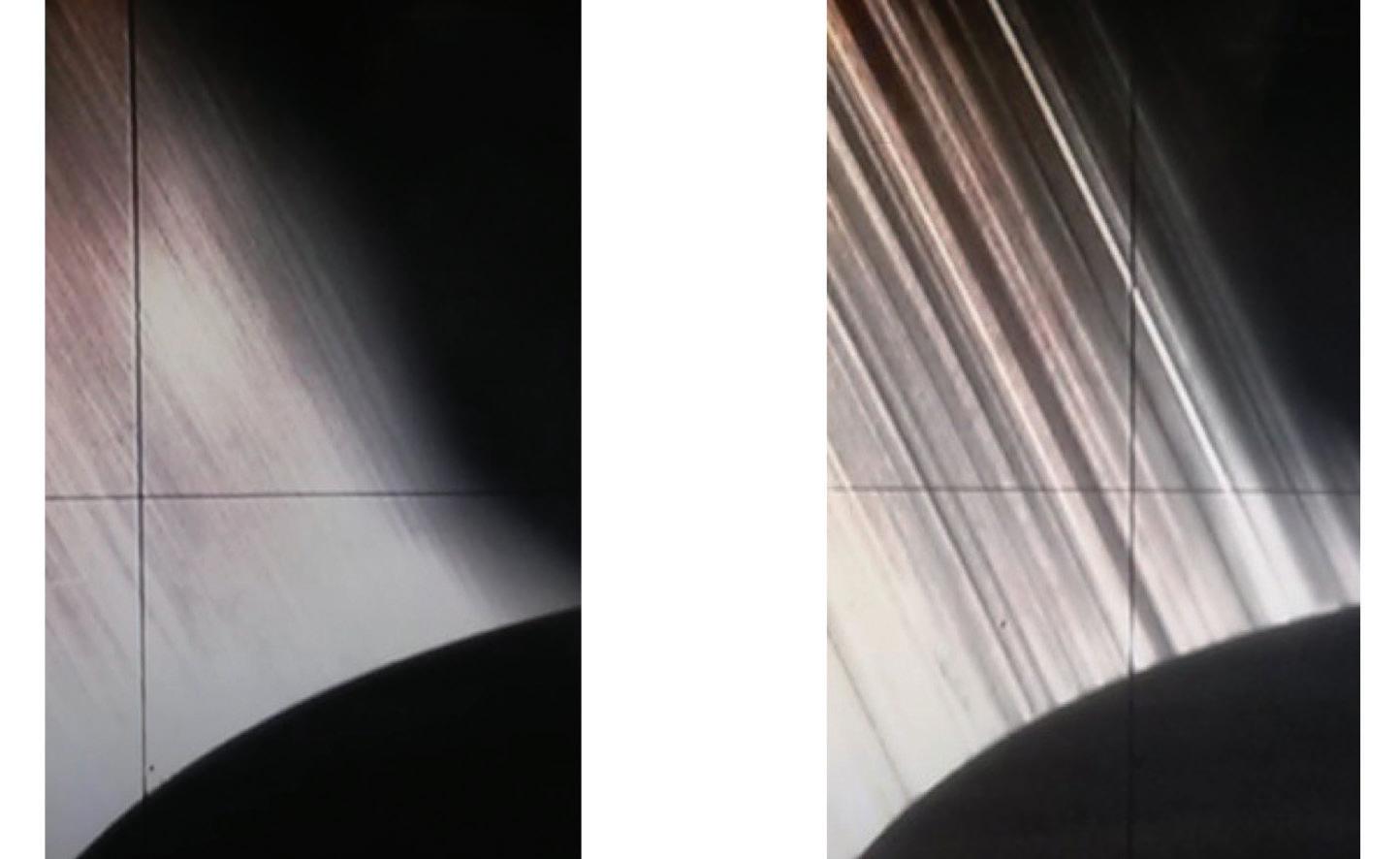
The motor also features simple construction, non-critical air gap, and no physical contact between shaft and forcer, letting machine manufacturers significantly simplify installation, reduce maintenance and extend machine life. The motor’s design lets it replace ball screws in existing machines easily and makes the machine design process a lot smoother. “Due to its simple construction, the shaft ends will only require one or two supports depending on their orientation. Not only has the axis installation time been significantly reduced by more than 200% compared to ball screws, but the installation of the motors is much safer than flatbed linear motors,” notes Wysocki.

Linear Motion 54 November 2022 www.designworldonline.com DESIGN WORLD •••••••••••••••••••••••••••• •••••••••••••••••••••••••••• •••••••••••••
The LinX Linear Motor overcomes the problems related to flatbed linear motors and delivers superior performance due to its cylindrical design.
A surface finish comparison shows the tool surface finish ground by a LinX-powered machine (left) and one ground with a ball-screwpowered machine (right).
The LinX S-Series Linear Motor from ANCA Motion features zero backlash and IP67 protection.
The ironless design of the motor and even force over the entire stroke lead to overall better motion performance. For instance, because of its direct-drive nature, the motor can track motion commands more accurately and repetitively to achieve a much better surface finish. So there’s no need to be concerned with cogging, backlash or reversal error. The tool’s surface finish ground by a LinX-powered machine is significantly better than the result from a bestperformance ball-screw machine. In addition to the improved surface finish, cycle time is enhanced due to its higher acceleration and faster traverse speed.
Overall, the company found that the LinX Linear Motor provides improved performance at a lower cost and e ciency than ball screws and flatbed linear motors. The standalone thermal stability, high speed and acceleration, zero down forces and the ability to achieve IP67 protection make the motors a suitable solution for machine tool applications, but also in other industries such as food processing and other automation applications. DW
ANCA Motion | motion.anca.com
Slide into Success
Whether you stay standard or go custom — we’ve got you covered.
WHAT DO YOU THINK?
Connect and discuss this and other engineering design issues with thousands of professionals online
Fabco-Air pneumatic linear slides combine reliability, robustness and a low-maintenance design for superior performance in many industrial applications, from packaging to medical imaging.








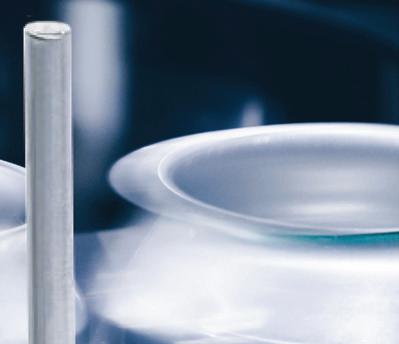



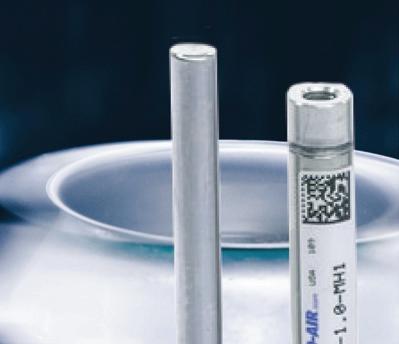







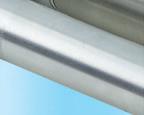

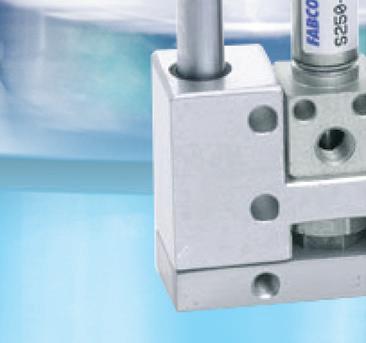

Choose from a wide range of standard units, which guarantee precise, repeatable operation and excellent load-handling capabilities. We can also modify units to deliver higher forces, faster speeds and longer strokes.
Options include:

• Many styles: single and dual bearing block, rodless and more

• Anodized aluminum toolbars and bearing blocks

• Stainless steel bearing materials
• Various mounting configurations
• Many accessories and sensing options
And, we will design, prototype and deliver custom solutions to meet your specific application requirements.
MADE IN GAINESVILLE, FLORIDA
••••••••••••••••••••••••••• ••••••••••••••••••••••••••• •••••••••••••••••••••••••••
DESIGN WORLD November 2022 55
www.fabco-air.com
A member of Festo Group
FABCO-AIR
The top ten
“green”










































































































































































































































































programming languages
There once was an assumption among computer programmers that a faster program is also an energy e cient program. The idea transmuted over to software programming languages—surely a faster language was a greener one, the logic went.
Leland Teschler • Executive Editor
That all changed in 2017 thanks to a group of researchers in Portugal who use what’s called the Computer Language Benchmarks Game (CLBG) as a way of ranking software languages in terms of energy e ciency. Conceived by programmer Doug Bagley in the early 2000s, the CLBG lays out a way of running, testing and comparing software by solving a set of well-known, diverse programming problems. Originally CLBG was devised to analyze runtime performance, but the Portuguese researchers realized it could also be used to study the energy e ciency of software.
Their work caught the imagination of people in the computer industry. The original 2017 paper received a lot of attention and comment, so much so that the researchers decided to update the results to reflect the energy e ciency of languages that have become more widely used since the original study took place.
The CLBG covers 13 benchmark problems. They include tasks such as switching from thread to thread while passing a token, a search for solutions to shape a packing puzzle, symmetrical thread rendezvous requests, operations on binary trees, and generating what’s called a Mandelbrot-set portable bitmap file.
••••••••••••••••••••••••••••••••••••••••••••••••••• ••••••••••••••••••••••••••••••••••••••••••••••••••• ••••••••••••••••••••••••••••••••••••••••••••••••••• ••••••••••••••••••••••••••••••••••••••••••••••••••• ••••••••••••••••••••• Electronics
Software with the fastest execution time isn’t necessarily the greenest
56 November 2022 www.designworldonline.com DESIGN WORLD
••••• ••••• ••••• •••••
The Portuguese researchers gathered information about energy consumption, execution time and peak memory usage for 27 languages. For measuring the energy consumption, researchers used Intel’s Running Average Power Limit (RAPL) tool, a feature of recent Intel processors that provides the energy consumption of the processor. Each benchmark executed 10 times, done to reduce the impact of cold starts and cache e ects, and to analyze measurement consistency. Ditto for memory use.
As you might expect, compiled languages generally turned out to be the fastest and most energy e cient. In the original test, compiled languages consumed 120 J on average while executing the test cases while interpreted languages hit 2,365 J. The same tendencies emerged with respect to execution time: compiled languages required 5,103 msec on average to run the benchmarks compared to 87,614 msec for interpreted languages.
Programming paradigms also made a di erence in energy e ciency. Imperative languages—those using step-by-step instructions such as C or Fortran--required on average 125 J and 5,585 msec. Object-oriented languages such as Java or C++-where objects contain both data and code to modify the data-consumed an average of 879 J and spent 32,965 msec. Functional languages such as Python—optimized to handle symbolic
computation and list processing--consumed 13,67 J on average and spent 42,740 msec executing the benchmarks. Scripting languages such as JavaScript—where high-level constructs interpret and execute one command at a time--consumed 2,320 J and spent 88,322 msec on average on a test.
The researchers say CPU-based energy consumption always represents the majority of the energy consumed. On average, for the compiled languages, this value represents 88.94% of the energy consumed, the remaining portion assigned to DRAM. The implication is that optimizing a program to reduce the CPU-based energy consumption will also decrease the energy associated with DRAM operations.
However, the researchers note that there is more variability in energy consumption figures for interpreted languages (min of 81.57%, max of 92.90%) when compared to compiled (min of 85.27%, max of 91.75%) or virtual machine languages (min of 86.10%, max of 92.43%).














































































































































































































































































































































































































DESIGN WORLD www.designworldonline.com November 2022 57 AdobeStock
••••••••••••••••••••••••••••••••••••••• ••••••••••••••••••••••••••••••••••••••• ••••••••••••••••••••••••••••••••••••••• ••••••••••••••••••••••••••••••••••••••• ••••••••••••••
Top energy efficient languages, ranked by energy use -update 2021 1 C, Rust (tie) 1.00 2 C++ 1.34 3 Ada 1.70 4 Julia 1.80 5 Java 1.98 6 Pascal 2.14 7 Chapel 2.18 8 OCaml 2.35 9 Lisp 2.41 10 Fortran 2.52
Top energy efficient languages, ranked by execution time -update 2021
1 C, Rust (tie) 1.00 2 C++ 1.56 3 Ada 1.85 4 Java 1.89 5 Chapel 2.14 6 Haskell 2.74 7 Go 2.83 8 OCaml 2.84 9 Lisp 2.87 10 Pascal 3.02
Top energy efficient languages, ranked by memory use -update 2021 1 Rust, Pascal (tie) 1.00 2 Go 1.05 3 C 1.17 4 Fortran 1.24 5 C++ 1.34 6 Ada 1.47 7 Rust 1.54 8 Lisp 1.63 9 Haskell 1.94 10 OCaml 2.05
With regard to whether or not the faster language is always the most energy efficient?, it is interesting to note that the top four most energy efficient languages keep their rank when sorted by execution time and with very small differences in both energy and time values. Additionally, it is common knowledge that C,C++, and Rust are known to be heavily optimized and efficient for execution performance. Researchers also comment on the effect of memory usage on the memory’s energy consumption. Memory use can be categorized into continuous memory usage and peak memory usage. Researchers concluded there doesn’t seem to be a consistent correlation between the DRAM energy consumption and the peak memory use.
All things considered Language assessments lead to the question of whether there is a “best” programming language considering energy consumption, execution time, and peak memory use, or if not, which are the best in each given scenario. To compare the languages using more than one quality at a time researchers sorted them using a multi-objective optimization algorithm known as Pareto optimization. Energy, time, and memory were the optimization objectives. The solution, called the Pareto optimal solution, in some cases turned out to be
more than one programming language. Also, researchers didn’t rerun their Pareto optimization for the updated results obtained last year.
Researchers concluded that developers only concerned with execution time and energy consumption can almost always choose a best language for the job. Unfortunately, if memory is also a concern, the choice of language is no longer automatic. Developers will have to decide which are the most important qualities in the scenario at hand.

58 November 2022 www.designworldonline.com DESIGN WORLD Electronics
Memory use can be categorized into continuous memory usage and peak memory usage. Researchers concluded there doesn’t seem to be a consistent correlation between the DRAM energy consumption and the peak memory use.
The original study found that C was the most energy e cient language overall with Rust a close second. The updated work now puts Rust in a tie with C for first place. More obscure languages make a stronger showing in the updated results. Julia is designed for numerical analysis and included built-in primitives for parallel computing. OCaml has elements of functional languages and objectoriented languages. Lisp is a functional programming languages designed for manipulating data strings. Haskell is also a functional programming language said to excel at handling high-load concurrent applications such as web backends. Chapel is a parallel programming language developed by supercomputer maker Cray. GO is a compiled language developed by Google which is syntactically similar to C but with memory safety, garbage collection, and concurrency. DW
References
Updated data set, https://sites.google. com/view/energy-efficiency-languages/ updated-functional-results-2020
Original paper, https://greenlab. di.uminho.pt/wp-content/ uploads/2017/10/sleFinal.pdf

•••••••••••••••••••••••••••••••••••••••••••••••••••••• •••••••••••••••••••••••••••••••••••••••••••••••••••••• •••••••••••••••••••••••••••••••••••••••••••••••••••••• •••••••••••••••••••••••••••••••••••••••••••••••••••••• •••••••••
Connect and discuss this and other engineering design issues with thousands of professionals online WHAT DO YOU THINK? DESIGN WORLD November 2022 59
Sensors


How does the
PICMG IoT.1
specification for smart IoT sensors work?
By Jeff Shepard


The PCI Industrial Computer Manufacturer’s Group (PICMG) is developing a series of specifications to enable plug-and-play interoperability of smart sensors and effectors. The effort includes the large installed base of legacy non-IoT (not IP-enabled) devices and newer IoT-enabled smart sensors. The PICMG program includes the development of a family of three IoT specifications. PICMG IoT.1 is the second of those standards.









60 November 2022 www.designworldonline.com DESIGN WORLD
This frequently asked question presents an overview of PICMG IoT.1, looks at the previously released PICMG IoT.0 standard, and reviews the progress toward the third and final standard in the series, PICMG IoT.2.
IoT.1 supports sensing and motion control in many emerging Industry 4.0 applications. It defines a firmware interface and low-level data model providing vendor-independent configuration of smart sensors and effectors and plug-and-play interoperability with higher levels of the installation. Before IoT.1, PICMG addressed the lowest level of the hierarchy where the physical sensors and actuators of the factory equipment exist. Each of these devices may or may not be IoT-enabled, so PICMG developed IoT.0 (also called MicroSAM) to address the issue of hardware interoperability (Figure 1).
The IoT.1 specification is a joint effort between PICMG and the Distributed Management Task Force (DMTF) organization. To more thoroughly
address the needs of Industry 4.0, IoT.1 leverages and extends DFTF’s Platform Level Data Model (PLDM) specification. PLDM is a low-level messaging system that supports topologies, eventing, and discovery, and runs over several system-level buses such as I2C/SMBus and PCIe Vendor-Defined Message (VDM) over Management Component Transport Protocol (MCTP), Reduced Media Independent Interface (RMII) based transport (RBT) over Network Controller Sideband Interface (NC-SI), and others. Benefits of IoT.1 include:

• Enabling the production of smart sensors based on control circuits and software from PICMG-compliant suppliers.
• Enabling the interoperability of smart sensors and smart sensor components from various makers.
• Enabling integrators of sensors and smart effectors to use devices and controllers from multiple suppliers.
• Speeding the adoption of smart sensor technologies in Industry 4.0 through open specifications that ensure interoperability
DESIGN WORLD www.designworldonline.com November 2022 61
| AdobeStock
Sensors
IoT connectivity
IoT.1 firmware interface and low-level data model
IoT.0 MicroSAM Sensor domain controller
Signal Signal Signal Signal
Figure 1: IoT.1 builds on the initial IoT.0 specification that addressed the issue of hardware interoperability.
| PICMG
Building on MicroSAM
The Micro Sensor Adapter Module (MicroSAM) is a compact computing module developed specifically to meet the needs of sensor-domain control in the Industrial Internet of Things (IIoT) and Industry 4.0. MicroSAM was the first IoT specification from PICMG. It was developed to solve the challenge of integrating non-IoT devices. MicroSAM is a 32 x 32 mm low-power microcontroller board that allows nonIIoT-enabled devices to interact with an IIoT gateway in a plug-and-play manner.
The introduction of MicroSAM filled a need not addressed by other PICMG specifications, a module designed
Figure 3: The IoT.2 standard is expected to complement IoT.1 and enable analytics across factories to improve productivity.
| PICMG
Sensor 1 Sensor X Effector 1 Effector x
• Industrial grade power filtering and signal conditioning for embedded installations
• RS422 communications
• Direct connectivity to analog voltage, analog current, and digital sensors
• Secure connectivity using latching connectors
• Pulse width modulation (PWM) output for motion control applications
• Synchronization using hardware interlock and trigger signals
• Compact (32 mm x 32 mm)
When combined with the PICMG sensor-domain data model and network architecture and data model, sensors connected to MicroSAM modules seamlessly integrate into the network with plug-and-play interoperability (Figure 2).
for use with MCUs in the sensor domain. It’s optimized for processing performance and I/O connectivity for that purpose. In addition, MicroSAM can be used with other PICMG devices such as MicroTCA, COM Express, or CompactPCI Serial, which provide higher layers of control, while MicroSAM provides sensor-optimized connectivity. MicroSAM co-exists with and extends the existing ecosystem by offering a standards-based solution designed specifically for embedded use in Industry 4.0 applications. The basic features offered by MicroSAM are: • Industrial operating temperature range from -40 to +85 °C
The PICMG IoT.2 network architecture specification is expected to be ratified later this year. It defines the integration of smart sensors and effectors, as well as their data, into larger Industry 4.0 systems. IoT.2 is based on DMTF’s Redfish API and outlines an abstraction layer and transactional model so that sensor and effecter endpoints can be monitored and managed in the context of job models similar to those available from cloud service providers. When used together, IoT.1 and IoT.2 are intended to support the analytics required for higher productivity levels and throughput across a factory environment (Figure 3).
• 1 provides low-level visibility of physical device parameters that can directly impact the quality and efficiency of your production line.
• 2 provides an IT-like interface for managing both machines and jobs at a high level of abstraction.
IoT.2 — Network Architecture and Data Model
IoT.1 — Firmware Data Model
IoT.0
— MicroSAM
To support collaboration, the PICMG IoT.2 standard will enable existing IoT communications protocols and models to be converted to maintain compliance with the new specification. The strategic alliance between PICMG and DMFT enables IoT.2 to use RedFish APIs. RedFish is a RESTful (Representational
62 November 2022 www.designworldonline.com DESIGN WORLD
LINE CONTROLLER
MACHINE CONTROLLER
SMART DEVICE FIRMWARE SMART DEVICE HARDWARE
State Transfer) interface for the remote management of a platform. REST is simple, well-established, and easily facilitates client and server interactions.
RedFish Framework benefits include:
• Easy for machines to parse and generate and for people to use
• Scalable for use in Industry 4.0 systems of systems
• Re-uses established principles in wellorganized formats
• Secure, extensible, and interoperable
The RedFish interface definition includes JavaScript Object Notation (JSON) and the Open Data Protocol (ODATS). ODATS is an ISO/IEC-approved OASIS standard that defines a set of best practices for building and consuming RESTful APIs. The RedFish interface leverages common Internet and web services standards, and its hardware management concept is very similar to PICMG’s Hardware Platform Management (HPM). Building on the RedFish communication protocol, PICMG expects to add capabilities for
motion control, such as multi-cast capability and network time protocol (NTP) clocking. Additional security features will be included before the final release of the PICMG IoT.2 network architecture specification.
PICMG is developing a series of three specifications to enable plug-and-play interoperability of smart sensors and effectors. The specifications cover the large installed base of legacy non-IPenabled devices and newer IoT-enabled smart sensors.
The initial PICMG IoT.0 specification was developed to solve the challenge of integrating non-IoT devices. The recently released IoT.1 specification defines a firmware interface and low-level data model providing vendor-independent configuration of smart sensors and effectors and was designed to support sensing and profiled motion control needed in many emerging Industry 4.0 applications. The still-to-be-released PICMG IoT.2 will complete the effort and defines the integration of smart sensors and effectors, and their data, into larger Industry 4.0 systems of systems. DW
Imagine the NEMA 5-15 cord at 8 different angles. When limited space between equipment and the power connection make cord direction critical, an angled cord maximizes the limited space between connectors reducing the strain on both plug and cord. Different cord angles provide multiple options on how a cord can plug into impossibly tight spaces. • Manufactured & shipped in Lamoni and Oskaloosa, Iowa

• No minimum
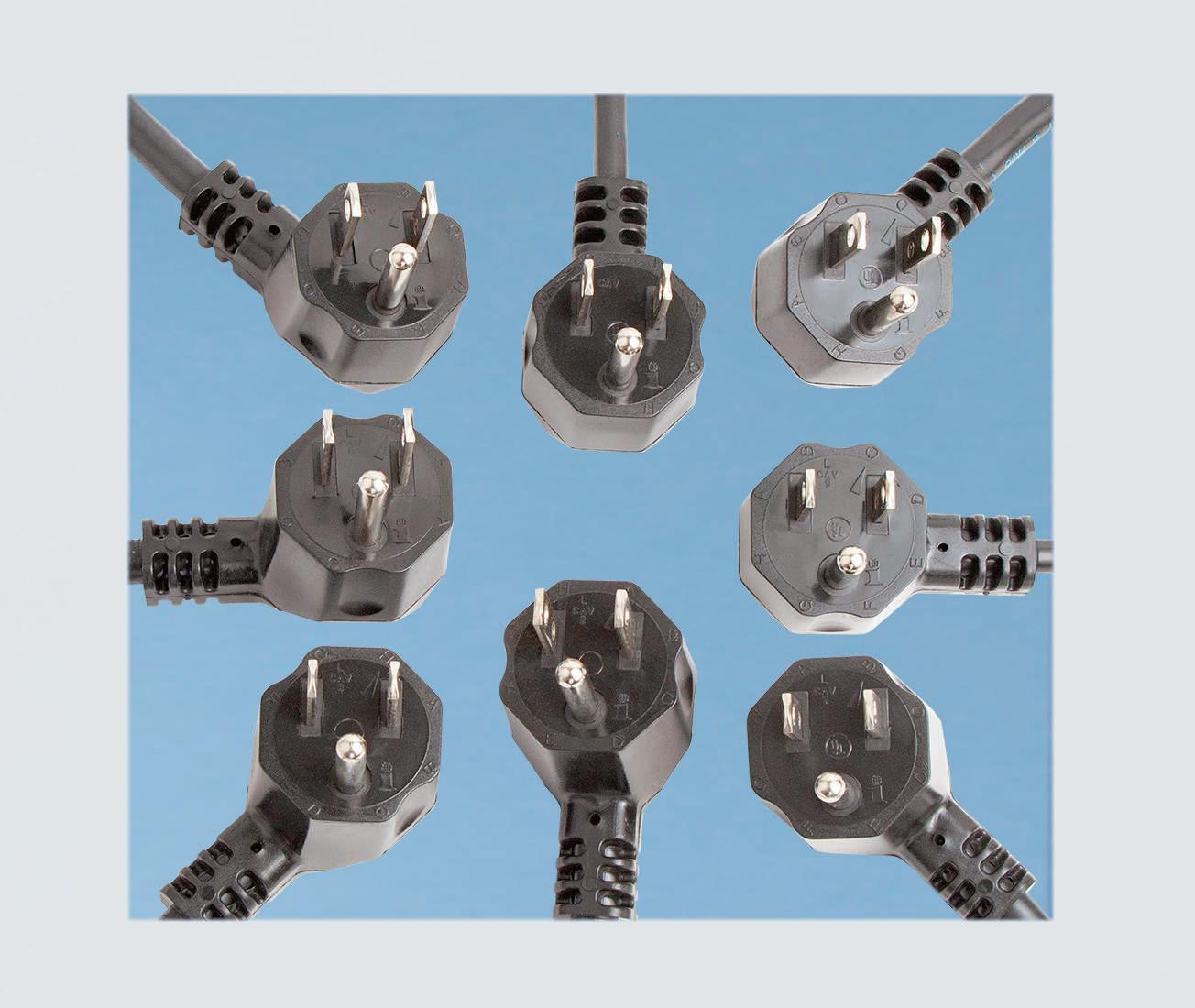
DESIGN WORLD www.designworldonline.com November 2022 63
Sensor or Effector Sensor or Effector MicroSAM Power RS-422 Trigger Interlock Power Signal Signal Power RS-422 Aggregator / Bridge MicroSAM Figure 2: MicroSAM modules are designed to support the PICMG sensor domain data model and network architecture. | CNX Software Toll-Free
662-2290 E-mail: info@interpower.com Business Hours: 7
p.m. CST Order Online! www.interpower.com ® ®
Phone: (800)
a.m.–6
order requirements
customer service Interpower® Angled NEMA Cords—The Eighth World Wonder?
• World-class
Metal 3D



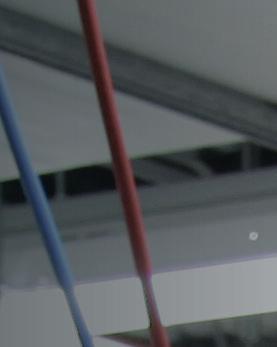


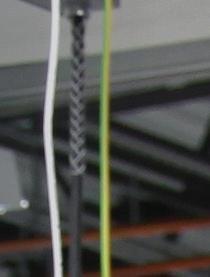
Printing Materials Under Review





























Achieving your design goals with metal 3D printing depends on finding the right material for your application. Here are tips on working with metal materials.
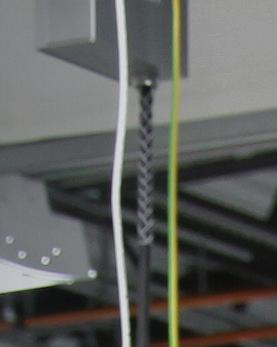 David Bentley • Senior Manufacturing Engineer • Protolabs
David Bentley • Senior Manufacturing Engineer • Protolabs
64 November 2022 www.designworldonline.com DESIGN WORLD
ADDITIVE MANUFACTURING


































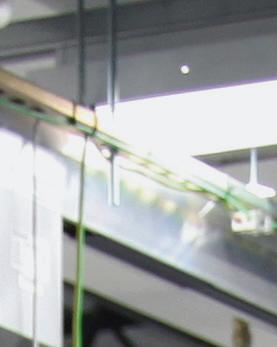
Each day,

more and more designers and engineers are turning to metal 3D printing to manufacture their prototype and end-use parts. It’s easy to see why. First, metal 3D printing itself o ers seemingly endless opportunities for geometric diversity in your parts. In other words, you can print a greater variety of shapes using this process. Second, these parts are cost-e ective at low quantities and strong. Third, compared to a process such as molding, which requires that a new tool be cut for each design change, metal 3D printing allows for fast, comparatively inexpensive iteration, giving you multiple chances in short time to get your parts just the way you want them.




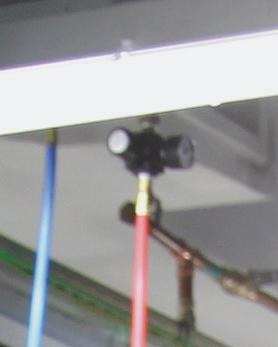

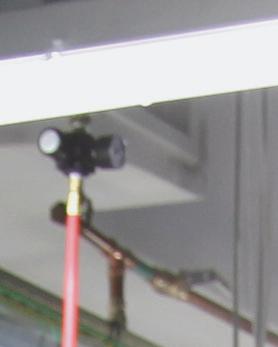




Achieving your design goals via metal 3D printing, though, depends on finding the right material for your application. This is especially true as you move from prototyping to production. But truth be told, that’s true of any manufacturing process.
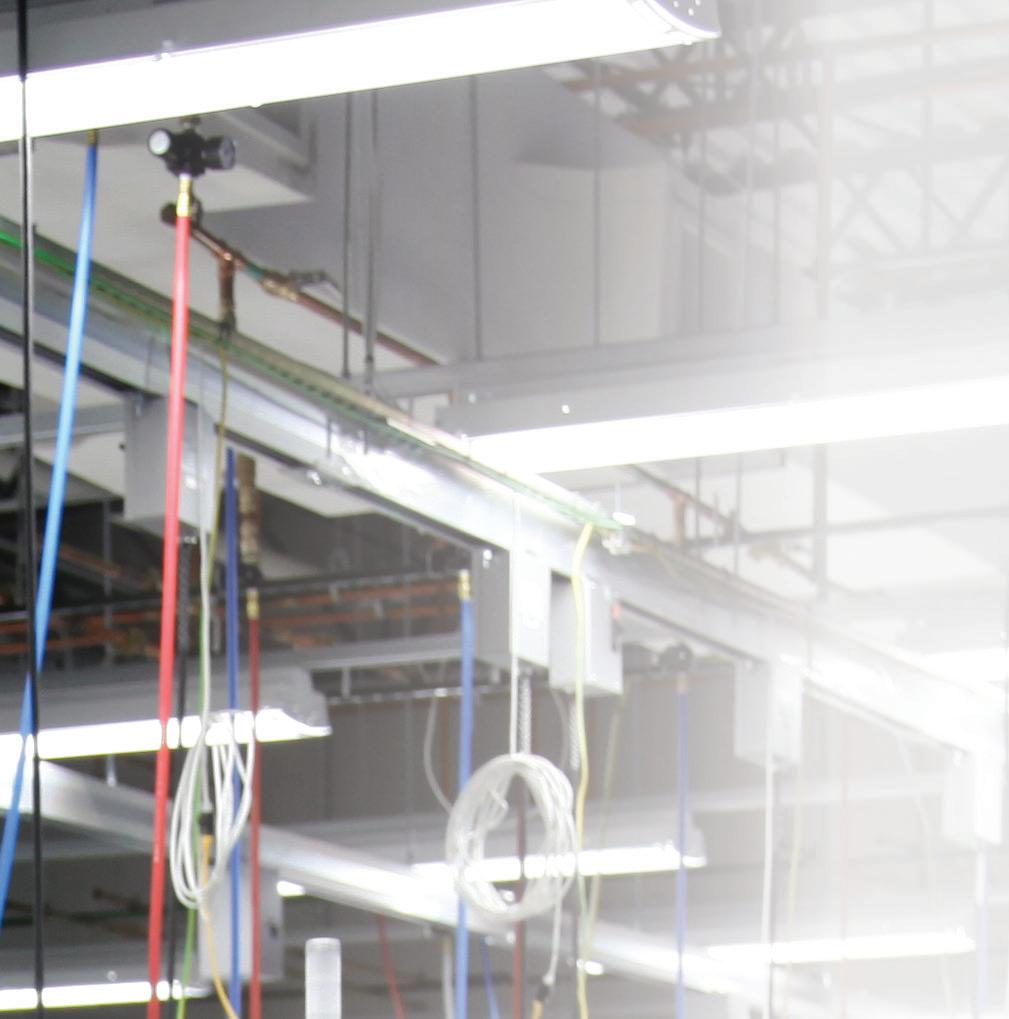

So, what’s not to love about metal 3D printing?
How DMLS works
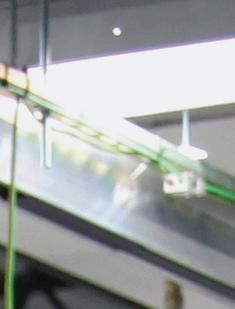
The additive manufacturing (AM) process that turns metal powder into solid metal objects is called direct metal laser sintering (DMLS). Also referred to as Laser Powder Bed Fusion (L-PBF), the concept is a simple one, but incredible complexity lies above the surface.
Essentially, you start with a build chamber of powdered metal. A narrow, high-intensity fiber laser beam is directed onto that powder, which is melted into shapes that follow the contours designed in your CAD model. At the completion of each layer, the model is lowered, allowing additional powder to be swept atop the build to prepare for the next layer. The part develops layer-by-layer and bottom-to-top until complete. The result is a fully dense metal product with mechanical strength and fatigue characteristics that sometimes exceed parts machined from comparable wrought, forged, or cast material (after
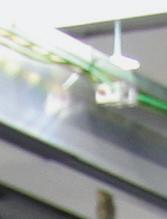
DESIGN WORLD www.designworldonline.com November 2022 65
3D printing
Ultimate tensile strength
(UTS) refers to the maximum stress the material can withstand before breaking. Tensile modulus, or elastic modulus, refers to the material stiffness. The higher the modulus, the stiffer the material.
Elongation (%) refers to the ductility of the material. Think about stretching a material into a wire. A higher elongation % indicates a material is more likely to be able to stretch or elongate into a thin wire shape.
Hardness is commonly measured and reported in HRC or HRB on the Rockwell scale for metals. The higher the number, the harder the material.
For the purposes of this article, all DMLS sample bars were manufactured and tested in the Z plane, normal to the build platform.
post-production treatment). The key to all of this is the precision of the laser, as well as the designer’s knowledge of how a given metal will perform in this process.
Coping with incomplete material data
One complexity when it comes to 3D printing in general is the lack of available data on how materials will perform. While data is getting better, in most cases, 3D printing users work with a single data sheet that contains a limited set of values. Those values often present a best-case scenario based on testing of virgin material (unrecycled powders).
One complication pertinent to other 3D printing processes is that parts exhibit anisotropic properties where the values differ for the X, Y, and Z axes. On the bright side, DMLS parts are the closest to isotropic—they tend to meet minimum strength requirements independent of the axis on which you’re measuring.
Because DMLS causes rapid melting and solidification of powder particles in a small, constantly moving spot, it may yield differences in grain size and grain boundaries that affect material performance. Research
is ongoing to characterize additively manufactured grain structures and the effect on parts, which will be altered with changes to support structures, laser parameters, layer thickness, and heat treatments like stress relief or hot isostatic pressing (HIP). Ultimately, grain structures can be manipulated to your benefit to offer heightened mechanical properties in a DMLS part.
Bottom of form
Before we dive in, one item of note in the charts: NR indicates normal resolution, meaning parts were manufactured in 30-micron layers. If parts were built on the GE Additive X Line 2000R (large-format) machine, NR indicates that parts were built in 60-micron layers. HR indicates high resolution, meaning parts were manufactured in 20-micron layers. The materials listed are representative of ones you will find with most manufacturers.
DMLS material options
3D
Printing materials: definitions and test methods
So, let’s compare apples to apples here and look at some of the terms you need to know to compare materials.
Comparing stainless steel materials: 17-4 PH vs. 316L
Stainless steel is a commonly used DMLS material, and it is available in two grades: 17-4 PH and 316L. Select

ADDITIVE MANUFACTURING
66 November 2022 www.designworldonline.com DESIGN WORLD
TABLE: Stainless
Material Properties Compared Grade Heat Treatment Ultimate Tensile Strength Elongation Hardness 316L Annealed 75 ksi 60% 80 HRB DMLS NR 316L Stress Relieved 92 ksi 58% 94 HRB DMLS HR 316L Stress Relieved 89 ksi 55% 94 HRB Wrought 17-4 PH H900 210 ksi 7% 45 HRC DMLS NR 17-4 PH Heat Treated 198 ksi 13% 42 HRC DMLS HR 17-4 PH Heat Treated 199 ksi 10% 42 HRC
Metal
offers seemingly endless opportunities for geometric diversity in parts, such as the interior wave pattern in this part.
Steel:
17-4 PH (precipitation hardened) for its significantly higher tensile strength and yield strength but be aware that it has less elongation at break than 316L, which means that 17-4 is less malleable than 316L. If you need a steel part with some flexibility, go with 316L. Both 17-4 PH and 316L are corrosion-resistant options, but 316L has somewhat better acid resistance. Note that you can heat treat 17-4 with a vacuum solution and an H900 aging heat treatment to improve mechanical properties, while 316L can only be stress-relieved. You can machine both of these stainless steels after they are printed. The order of heat treatments and any postprocessing work may be interchanged on 17-4 parts depending on machining requirements.
Tensile strength figures compare favorably to die-cast aluminum, but elongation at break is slightly higher than average. That said, our internal testing shows that AlSi10Mg built in NR (30-micron layers) exhibits a higher hardness value than high resolution AM or cast aluminum.
AM Copper
Note that DMLS 17-4 PH and 316L share comparable mechanical and physical properties to their non-AM wrought counterparts.
Electrically conductive materials
Aluminum AlSi10Mg
This is comparable to a 360.0F aluminum alloy that is used for diecasting. As with many aluminum alloys, it has a good strength-to-weight ratio, high temperature and corrosion resistance, and good fatigue, creep, and rupture strength. It also adds the advantage of good thermal and electrical conductivity properties.
Copper (CuNi2SiCr) succeeds in rough environments where pure copper doesn’t. UNS C18000, a diecast copper, is the stronger material, exhibiting higher tensile and hardness properties than AM copper. However, AM copper is structurally stronger, harder, and has higher elongation when compared to aluminum, which also exhibits thermal and electrical conductivity properties.
The conductivity of AM copper is effective for electrical and thermal transfer applications. Heat sinks and heat exchangers are ideal applications for this material, but if weight is a concern, AM aluminum may be your best option.
Superalloys
Inconel 718 is a nickel-chromium superalloy used in a vast range of temperatures, from the scorching heat of aircraft engine components to the extreme chill of low-temperature cryogenic
applications (-423°F-1,300°F). Its high-temperature strength comes from its ability to create a thick, stable, passivating oxide layer at high temperatures. Inconel 718 also has good tensile, fatigue, creep, and rupture strength properties.
When solution-treated and aged per AMS 5663, Inconel 718 exhibits higher tensile strength and increased hardness, coupled with a reduction in elongation %.
A Superalloy for Specialty Applications
Cobalt chrome (Co28Cr6Mo) is used for specialty applications within the aerospace and medical industries because of its high strength-to-weight ratio, creep, and corrosion resistance properties. As defined by ASTM F75, DMLS Co28Cr6Mo hardness values are in line with wrought Co28Cr6Mo, but ultimate tensile strength and elongation rate considerably lower. That said, heat treating these Co28Cr6Mo samples would narrow the gap.
DESIGN WORLD www.designworldonline.com November 2022 67
TABLE: Aluminum: Material Properties Compared Grade Heat Treatment Ultimate Tensile Strength Elongation Hardness Die-Cast Aluminum (360.0-F) n/a 44 ksi 37
DMLS NR AlSi10Mg Stress Relieved 50 ksi 8% 59
DMLS HR AlSi10Mg Stress Relieved 39 ksi 15% 42
TABLE: Inconel 718: Material Properties Compared Grade Heat Treatment Ultimate Tensile Strength Elongation Hardness Wrought Inconel 718 n/a 160 ksi 25% 36 HRC DMLS NR (60 Microns) Inconel 718 Solution & Aged 201 ksi 19% 45 HRC DMLS NR (60 Microns) Inconel 718 Stress Relieved 139 ksi 40% 27 HRC DMLS NR Inconel 718 Solution & Aged 208 ksi 18% 46 HRC DMLS NR Inconel 718 Stress Relieved 144 ksi 39% 30 HRC DMLS HR Inconel 718 Stress Relieved 143 ksi 36% 33 HRC TABLE: Copper Material Properties Compared Grade Heat Treatment Ultimate Tensile Strength Elongation Hardness Die-Cast Copper C18000 n/a 85 ksi 90 HRB DMLS HR CuNi2SiCr Precipitation Hardness 72 ksi 23% 87 HRB
HRB
HRB
HRB
MOTION CONTROL DESIGN GUIDES
SPRINGS AND RETAINING
RINGS
This Design Guide will explore springs used in motion system designs, which come in three main types: compression, extension, and torsion.
For retaining rings, there are also three main types: tapered section, constant section, and spiral.

GENERAL MOTION SYSTEM DESIGN
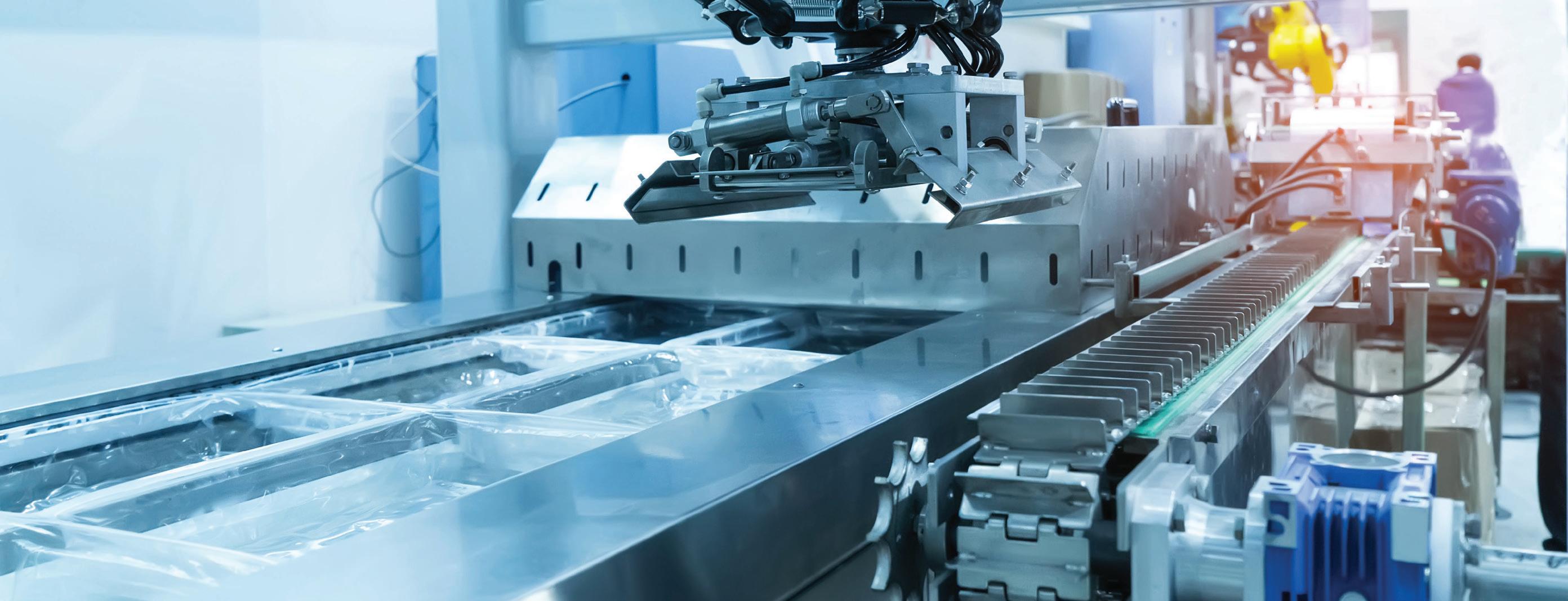

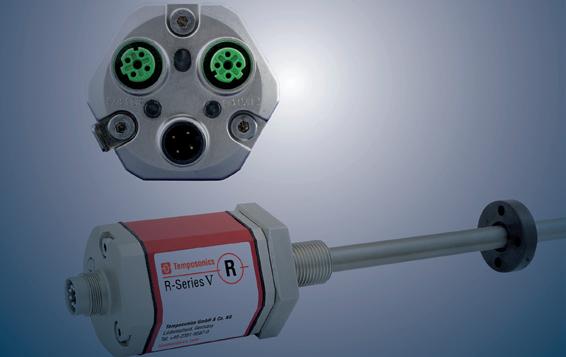
Motion systems for industrial automation command electric motors to drive mechanical linkages for precise speed, force, and position outputs. This Design Guide will detail motion systems with various electric, electronic, and mechanical components.
LINEAR POSITION SENSORS
The editors of Design World produce key technology content compiled in individual PDFs available for download. Check out our Design Guide Library
In this Design Guide, the editors of Design World detail some of the most common sensing options for tracking linear position and travel … including variations based on capacitive, eddy current, Hall effect, and inductive technologies.
for additional guides, bookmark this site as guides are added on an ongoing basis! designworldonline.com/design-guide-library BROUGHT TO YOU BY:
Strong as steel, but lightweight
Titanium Ti6Al4V is similar to DMLS cobalt chrome in its applications. It’s most commonly used for aerospace and medical applications due to its high strength-to-weight ratio, temperature resistance, and acid/corrosion resistance.
Compared to wrought Ti6Al4V, the mechanical properties of this alloy when vacuum stress-relieved are similar to wrought titanium for tensile strength, elongation, and hardness.
Metal 3D printing provides many different materials that can simulate, if not replace, those processed through conventional means. While it’s hard to replicate conventionally manufactured parts due to processing differences, the range of AM material options and upcoming material options, indicate a bright future. Even so, existing AM material can provide the critical mechanical and physical properties your parts require. With the support of an informed, qualified 3D printing resource that can fill in the data gaps, the door
Protolabs www.protolabs.com
Direct metal laser sintering (DMLS) delivers a fully dense metal product with mechanical strength and fatigue characteristics that sometimes exceed parts machined from comparable wrought, forged, or cast material (after post-production treatment).

ADDITIVE MANUFACTURING is open for designers to leverage the unique advantages that 3D printing materials and technologies offer. DW
Ultimate
TABLE: Cobalt Chrome: Material Properties Compared Grade Heat Treatment
Tensile Strength Elongation Hardness
242 ksi 27% 39
14% 38
17% 39
Grade Heat
Ultimate Tensile Strength Elongation
n/a 150 ksi 12% 35
Stress Relieved 144 ksi 18% 33 HRC
Stress Relieved 153 ksi 15% 15
Wrought Co28Cr6Mo n/a
HRC DMLS NR Co28Cr6Mo As Built 176 ksi
HRC DMLS HR Co28Cr6Mo As Built 182 ksi
HRC TABLE: Titanium: Material Properties Compared
Treatment
Hardness Wrought Ti6Al4V
HRC DMLS NR Ti6Al4V
DMLS HR Ti6Al4V
HRC
DESIGN WORLD www.designworldonline.com November 2022 69
5G TECHNOLOGY WORLD
Delivers the Latest 5G Technology Trends






Get caught up on critical 5G information, check out the following articles on 5GTechnologyWorld.com:




Massive MIMO performance testing: Emulate the channel
Performing MIMO testing using real-world conditions is critical for successful 5G deployments. www.5gtechnologyworld.com/massive-mimoperformance-testing-emulate-the-channel
5G moves into production, causes test issues
5G Technology World talks with Teradyne’s Jeorge Hurtarte, who explains components and over-the-air production test of 5G components. www.5gtechnologyworld.com/5g-moves-intoproduction-causes-test-issues
5G is hot, keep your components and systems cool 5G’s antennas and the devices that drive them generate more heat than their LTE predecessors. That creates new cooling problems for wireless devices and systems. www.5gtechnologyworld.com/5g-is-hot-keep-yourcomponents-and-systems-cool
IEEE 1588 adds timing performance while reducing cost and risk GPS and GNSS have been the standards for network timing, but they have security issues. A Master clock and IEEE 1588 reduces the risk and lowers installation costs. www.5gtechnologyworld.com/ieee-1588-adds-timingperformance-while-reducing-cost-and-risk
For additional content, go to: www.5gtechnologyworld.com
5G Technology World is EEWorldOnline’s newest site covering 5G technology, systems, infrastructure, and wireless design and development.
WAREHOUSE AUTOMATION
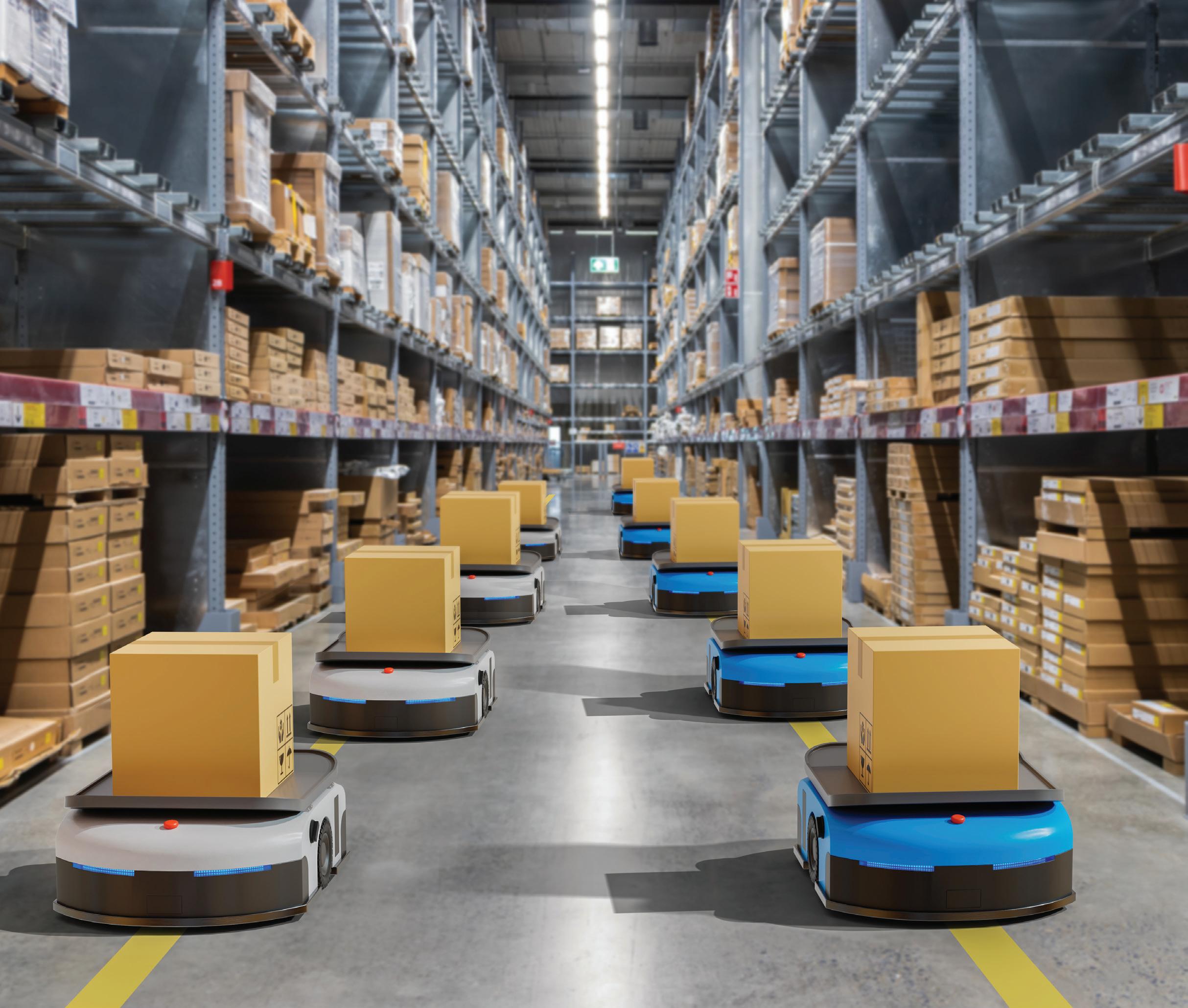
www.designworldonline.com A Supplement to Design World - November 2022
the latest motion
control components, equipment and systems
ASRS design Adobe Stock.com
Covering
and
in
Drive technology for mobile equipment

Low voltage compact motion: AMI812x integrated servo drive
www.beckhoff.com/ami8100
Perfect for AS/RS shuttles and AMRs: integrated servo drive for compact drive technology (up to 48 V DC) combines highly compact servomotor, output stage and fieldbus connection for all motion requirements in the power range up to 400 watts for single axes or with daisy-chain solutions in the machine supports cabinet-less concepts with compact footprints
IP65 protection degree possible with sealing ring option Safe torque off (STO) safety over FSoE (Safety over EtherCAT) reduces installation and integrates seamlessly into safety solutions
Beckhoff offers a complete, compact control solution for mobile equipment including a range of compact motion solutions for BLDC, MDR, servo technology and more.
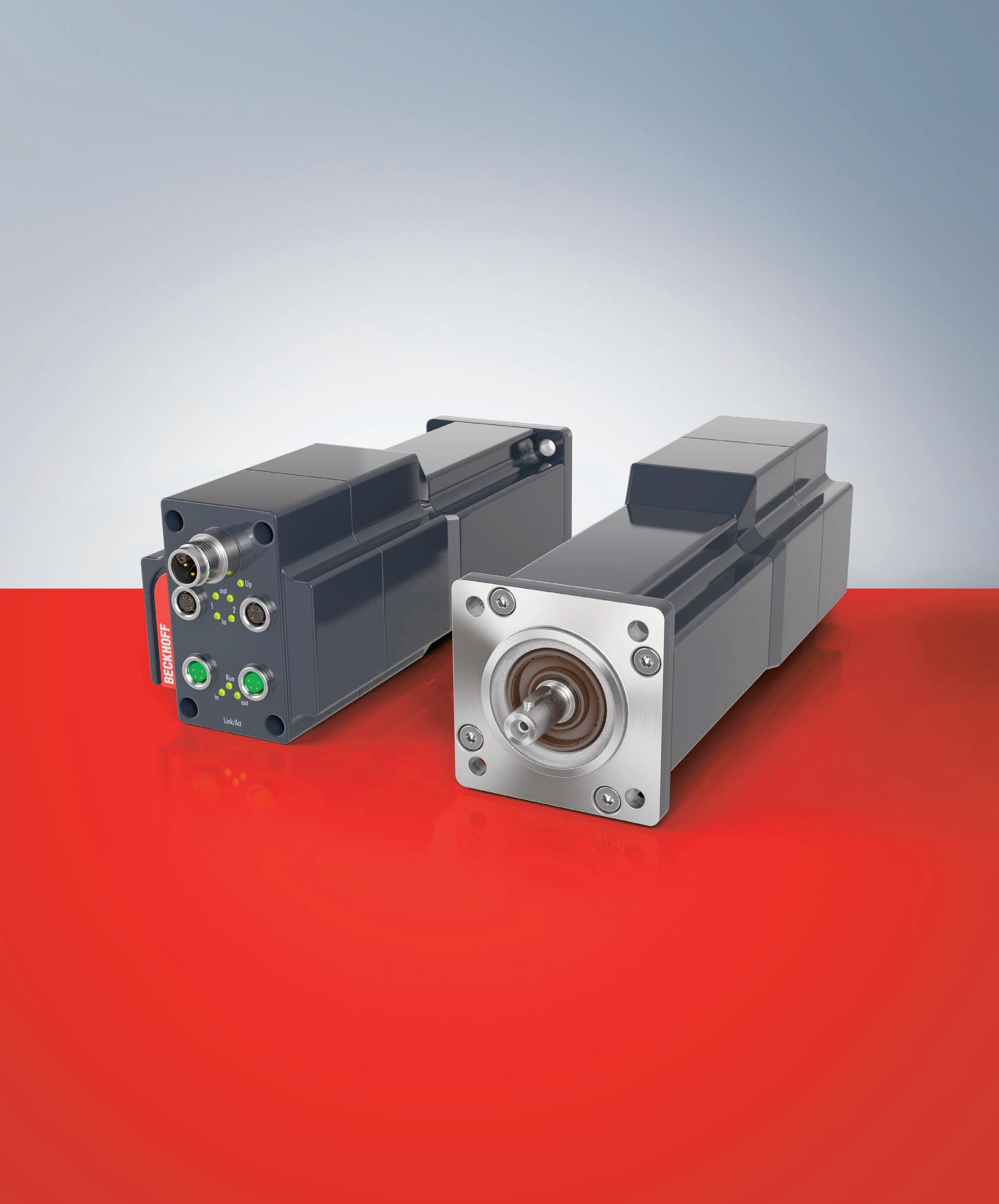
covers all interfaces: directly on the servo drive without requiring upstream I/O AT11-22USA
One connection level
76
Motion and control objectives for automated storage and retrieval systems
Automated storage and retrieval systems are a key enabler of the next-day delivery we’ve come to expect from online retailers. But like other types of automation, AS/RS equipment must meet the customer’s objectives for safety, footprint, and energy e ciency.
82
Amazon pushes the envelope on automation
Amazon continues to be a leader in automating warehouse operations, and that includes not only using existing technology but developing its own products and buying manufacturers of interest.
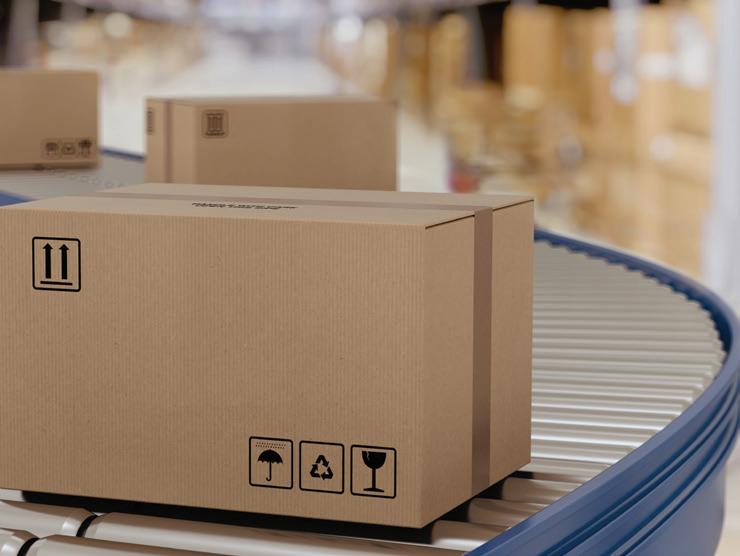
86
DHL’s Sally Miller on using robotic fleets
DHL is using robotics to support numerous warehousing and logistics tasks. The company innovates its logistics workflow and the tools and technologies deployed in DHL distribution centers around the world, as it continually improves e ciencies.


11 •
2022
76
•••••••••••••••••••••••••••••••••• •••••••••••••••••••••••••••••••••• •••••••••••••••••••••••••••••••••• •••••••••••••••••••••••••••••••••• ••••••••••••••••••••••••••••••••••
ASRS
DESIGN WORLD www.designworldonline.com November 2022 73
Adobe Stock
CONTENTS
WAREHOUSE AUTOMATION
Editor’s Column....75
Adobe Stock
Say hello to the H-SERIES:


the only cobot with a 25kg payload and a 1700mm reach. It’s time to meet your new heavy-duty best friend.





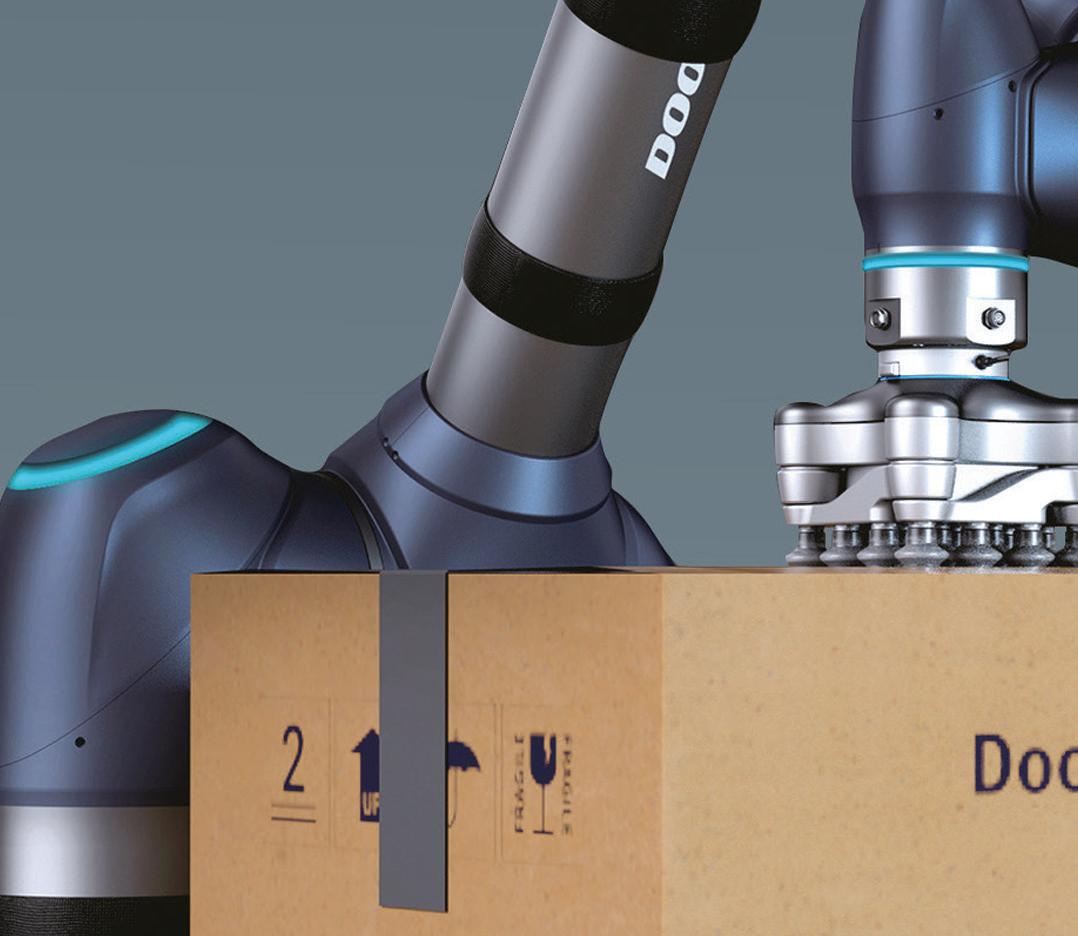
Evolving the automated warehouse
Everything you buy online or in-store is stored in a warehouse at some point. The pandemic hastened the acceptance of e-commerce by causing consumers to stay at home and shop online. According to research firm Interact Analysis, 50,000 new warehouses will be built worldwide over the next six years.
Automated warehouse person-to-goods supplier Locus Robotics reported the billionth pick by a Locus robot this fall. This is just one example where warehouse automation is growing at an accelerating pace.

Because of these macroeconomic trends, warehouse automation remains a top priority, due in part to labor shortages and increasing demand om consumers. Logistics and warehousing are data-intensive processes that track inventory and material movement at every stage of the supply chain. The so ware and cloud-based services that track the logistics workflow om supplier to customer are increasingly being assisted by artificial intelligence-based algorithms that can “see” trends in the data — and make adjustments in real-time.
There is demand for all of the parts that go into warehouse automation, as well as for complete “turnkey” solutions. This special section looks at some of these areas as well as the technologies that make them possible.
In general, at the Mobile Robot Guide and The Robot Report, we follow most of these trends in the market and keep you up to date on the latest announcements — while our sister publication, Design World, focuses on the fascinating engineered components that make all of this automation possible.
Some of the areas where we see the greatest rates of innovation include:
• Autonomous mobile robots
• Data capture and the use of IOT devices in the warehouse
• Automated storage and retrieval systems
• Robotic sortation and piece picking
• Grocery order fulfillment solutions, and
• So ware and cloud-based services.
We hope that you find this first special section on Warehouse Automation a useful resource as you research, plan, and build new solutions for this exciting market.
Mike Oitzman Editor
The Mobile Robot Guide | The Robot Report
THE ROBOT REPORT www.designworldonline.com November 2022 75
• • • • • • • • • • • • • • • • • • • • • • • • • • • • • • • • • • • • • • • • • • • • • • • • • • • • • • • • • • • • • • • • • • • • • • • • • • • • • • • • • • • • • • • • • • • • • • • • • • • • • • • • • • • • • • • • • • • • • • • • • • • • • • • • • • • • • • • • • • • • • • • • • • • • • • • • • • • • • • • • • • • • • • • • • • • • • • • • • • • • • • • • • • • • • • • • • • • • • • • • • • • • • • • • • • • • • • • • • • • • • • • • • EDITORIAL
| AdobeStock
Motion and control objectives for automated storage and retrieval systems
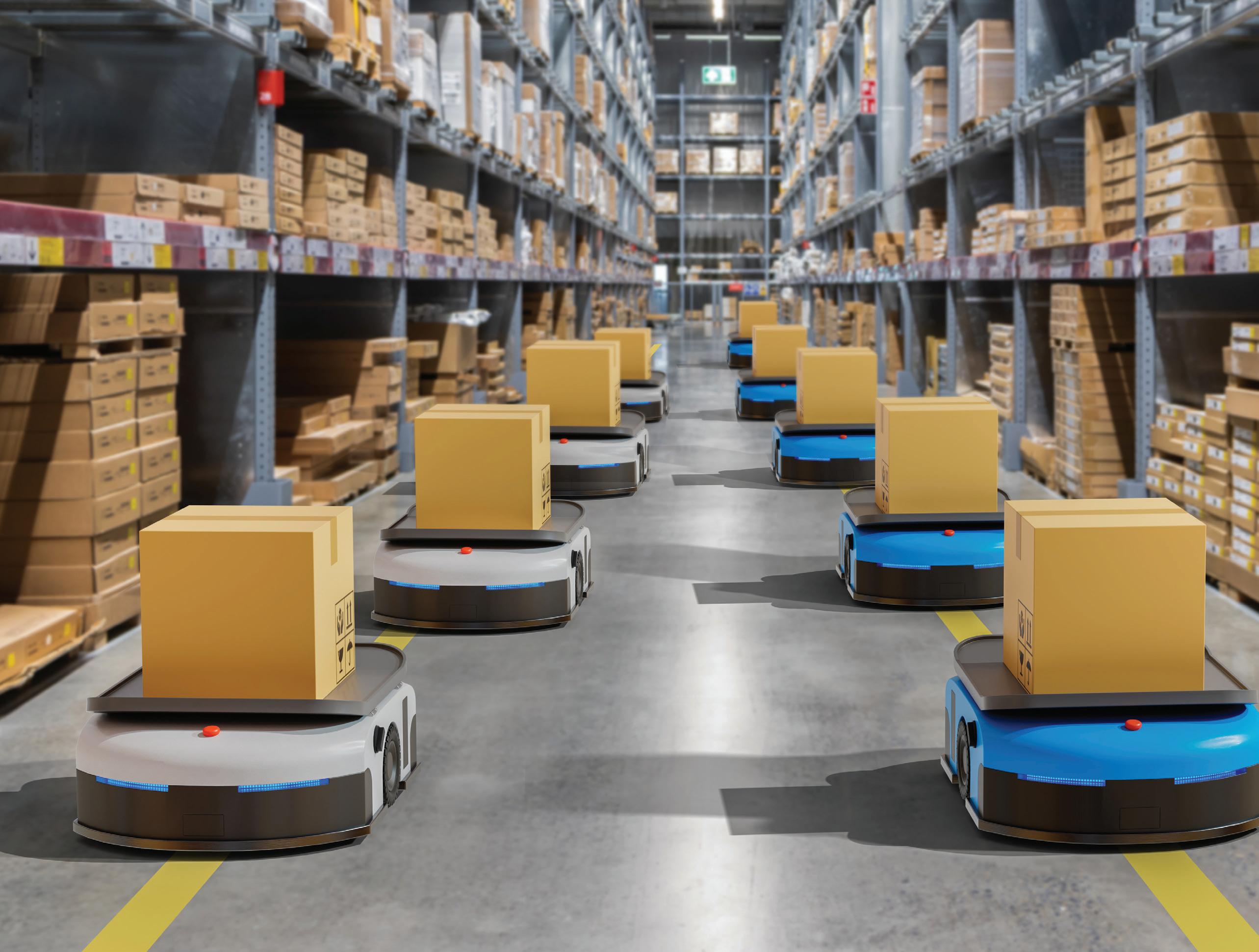 By Danielle Collins
By Danielle Collins
76 November 2022 www.designworldonline.com DESIGN WORLD
Automated storage and retrieval systems are a key enabler of the nextday delivery we’ve come to expect from online retailers. But like other types of automation, AS/RS equipment must meet the customer’s objectives for safety, footprint, and energy e ciency.

WAREHOUSE AUTOMATION
Years ago, as you drove through industrial suburbs in almost any midsized city in America, you would encounter huge warehouses and distribution centers, housing thousands of items for wholesale distribution or retail operations. And if you were a manufacturer of motion control components or systems, you passed right by these giant industrial buildings without a second thought, because you knew that virtually all of the stocking, picking, and transporting going on inside was being done manually.
Fast-forward to the present, and the explosion of e-commerce over the past 15 years has caused a fundamental shift in the way warehouses and distribution centers function. The “Amazon e ect” on consumer behavior has resulted in buyers — both B2C and B2B — who want their purchases delivered in shorter and shorter timeframes, putting pressure on warehousing and distribution providers to speed up and streamline their operations. The solution to achieve these goals, while maintaining profitability, is more automation — or, more specifically, automated storage and retrieval systems (AS/RS).
Storing and retrieving 40-ft long sections of carbon fiber required conveyors that could extend into and out of the storage area. Guide wheels and
Y
DESIGN WORLD www.designworldonline.com November 2022 77
| AdobeStock
WAREHOUSE AUTOMATION
tracks were used to create the necessary telescoping conveyor sections while keeping overall height to a minimum.
Warehouse operators, distribution centers, and manufacturing facilities implement AS/RS equipment for a variety of reasons. For warehouses, the primary concern may be to maximize storage density in the available space. Distribution centers often see increased customer satisfaction through shorter delivery times, and manufacturing operations use AS/RS to improve workflow and maintain better control over inventory.
Regardless of their customers’ reasons for automating storage and retrieval functions, when manufacturers of AS/RS equipment choose motion and motion control systems, three important criteria stand out: safety, footprint, and energy e ciency.
Putting safety first
When handling a load that’s located 40ft (or higher) above the floor — whether that load is a 10-lb bin or a 500-lb pallet — there’s a significant risk of injury to people and damage to the product or equipment if something goes wrong.
And in many cases, the transporting portion of an AS/RS is moving at very high speeds, increasing the possibility of injury or damage.
Automated storage and retrieval equipment is intended to operate with minimal human interaction until the final point of delivery. But because of the loads, speeds, and heights at which these systems operate, human safety is especially critical … not to mention the safety of the product being transported. A single bin or pallet of finished goods can be worth tens of thousands of dollars.
A combination of mechanical and electrical/electronic means are used to ensure safety in storage and retrieval systems. Vertical axes typically incorporate a friction break, providing a mechanical means of protection in case the vertical driving belt breaks. It’s also typical for AS/RS manufacturers to require an electromagnetic brake on the vertical motor for protection in case of an electrical failure.
Safety is also addressed in the higher-level control system. For many manufacturers, the use of safety PLCs
is standard on our AS/RS equipment. It can be especially important during maintenance and troubleshooting, when human interaction is required.
Similarly, drive-based safety — with integrated STO (safe torque o ), SS1 (safe stop 1), or other safe stop functions — is becoming pervasive in the industry. Some AS/RS equipment manufacturers are moving one step further, by using motion controllers with safety functions that run on the fieldbus, replacing hardwired safety logic. This makes the system more cost-e ective and more e cient.
Minimizing the automatedwarehousing footprint

One of the principal reasons for implementing automated storage and retrieval is to put warehouse and inventory space to better use. For a lot of customers, expanding storage capacity is one of the key objectives when setting up an AS/RS. Thus, it’s no surprise that manufacturers of AS/RS equipment strive to use the smallest components and most compact systems possible.
For example, in AS/RS applications, you typically want a motor with a high torque-to-size ratio. However, a designer needs to carefully define the motion profile to ensure you’re not oversizing the motor. A motor with a continuous torque rating that meets the application’s peak torque requirements would be clearly oversized.
Similarly, when choosing linear guides and systems, compactness is one of the key criteria for AS/RS manufacturers. In shuttle systems, this typically means using telescoping guides on the horizontal axes, which retrieve and replace bins or trays from the storage rack. The application’s bin density strategy — that is, the number of bins that are stacked one behind the other in the storage rack, or the number of “bins deep” — dictates the reach needed by the guide rails, which can be as much as 3 ft for a single bin. ● WH
78 November 2022 www.designworldonline.com DESIGN WORLD
••••••••••••••••••••••••• ••••••••••••••••••••••••• ••••••••••••••••••••••••• | AdobeStock.com | AdobeStock







and retrieval systems
A typical fixed-aisle AS/RS configuration. Goods are stored on fixed racks in totes or cartons. Operators can either pick the goods based on lights indicating the desired tote or carton, or the goods can be retrieved by lift and shuttle systems and delivered to the operator (referred to as “goods-to-operator”) by means of a roller conveyor.
Automated storage and retrieval systems use sophisticated controls to store, retrieve, and deliver materials to specified locations. The Material Handling Industry identifies six main types of AS/RS equipment, which can be grouped into three categories:
1. Fixed-aisle (F/A) storage and retrieval systems are constructed with one or more aisles of storage racking, which are served by a moving structure — often a crane or shuttle — that can reach each storage location and place or retrieve loads with a telescoping arm.
• Unit-load AS/RS: These are generally the largest AS/RS systems, typically used for handling pallets or pallet-sized materials weighing 1000 lb or more.
• Mini-load AS/RS: Rather than handling pallets, mini-load systems handle totes, cartons, or trays weighing less than 1000 lb.
• Micro-load AS/RS: Micro-load systems deal with loads that are typically less than 100 lb, stored in small totes or trays.
2. Vertical lift modules (VLMs) have vertical columns of trays or storage bins in both the back and the front of the module, with a mechanism in the center to automatically insert or extract materials.
3. Carousels are characterized by a series of bins that rotate horizontally or vertically.
• Horizontal carousels: These systems rotate horizontally around a track to position the bin in the picking position.
• Vertical carousels: These rotate vertically and are typically enclosed on all sides to secure the materials being transported. The requested bin or shelf is presented to a window, and products are picked though this window.
Increasing energy e ciency of AS/RS installations







Energy e ciency starts with the selection of individual components and sub-systems. For example, when a product is being retrieved, the vertical axis is held in position for a certain period of time. To maximize energy e ciency, you should choose a motor that is able to hold the vertical load with minimal power. Another way to improve e ciency is to capture regenerative energy — especially from vertical axes — and feed it back to the power source or store it in battery packs.
Mechanical components typically contribute to energy e ciency by way of lowering the moved mass, and therefore, the inertia of the system. Vertical lifts that were once driven by chains have migrated to steel-reinforced timing belts and pulleys. As AS/RS equipment has evolved, the required speeds and accelerations of the horizontal and vertical axes have increased greatly.
Other examples of mechanical components that can contribute to lowering energy consumption are E-chains constructed from lightweight plastic and guide rails with an optimized, weight-reduced profile.
Energy e ciency is important to AS/RS manufacturers because it helps them deliver a better value proposition to their customers. Maximizing energy e ciency requires not only using components and sub-systems that are themselves energy e cient, but also using those components and systems intelligently. This is best accomplished by monitoring the actual system requirements and comparing those with the expected performance.
80 November 2022 www.designworldonline.com DESIGN WORLD
•••••••••••••••••••••••••• ••••••••••••••••••••••••••• •••••••••••••••••••••••••• ••••••••••••••••••••••••••• •••••••••••••••••••••••••• ••••••••••••••••••••••••••• ••••••••••••••••••••••••
Types of automated storage
RULAND
TOOL-LESS ADJUSTMENT COMPONENTS



• Adjustable handles and knobs replace standard hardware and can be used to torque components without tools.




• Levers can be used with Ruland shaft collars for quick installation and adjustment.
Adjustable

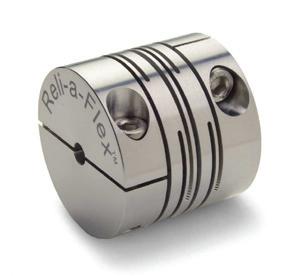

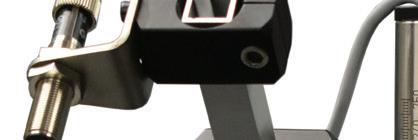
SLIT AND CONTROLFLEX COUPLINGS

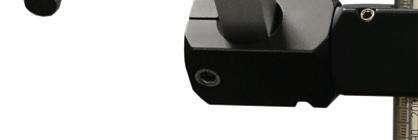

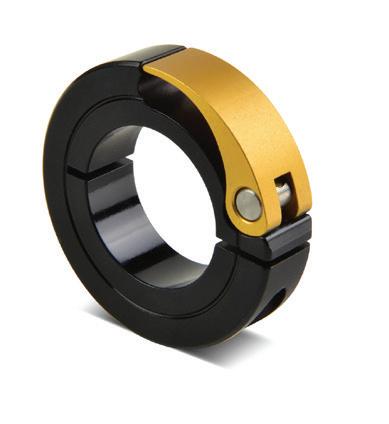
• Slit couplings are available in short and long styles giving designers a variety of body sizes to choose from to t application envelope and performance requirements.
• Control ex is a highly exible encoder coupling designed for applications with high speed, low torque, and wide differences in shaft sizes (up to a 4:1 small to large ratio).

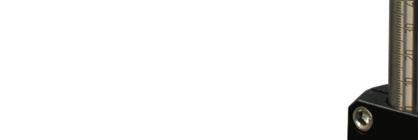




• Slit couplings are available in bore sizes from 1.5mm to 12mm (1/8” to 1/2”) and control ex couplings are available in sizes from 6mm to 40mm (1/4” to 1-1/2”).
Slit Coupling
MOUNTABLE SHAFT COLLARS
• Available with OD ats and holes for direct mounting of the collar to other components.
Control ex Coupling
MODULAR MOUNTING SYSTEMS
• Assortment of components that allow users to build small assemblies for mounting sensors, conveyor rails, machine guards, and more.
• Optional pre-designed kits make it easier to select the right system for your application.
• Proprietary manufacturing processes ensure superior t, nish, and holding power.
• Manufactured in a variety of sizes, styles, and materials.
UNIVERSAL JOINTS
• Widest selection in the industry: over 3000 standard single and double universal joints to start your next design with.
• Available from Ruland in 2 weeks or less for the shortest lead times in the industry.
• Yokes, pins, and blocks are precision machined, ground, and selectively heat treated for smooth operation at high operating angles.
www.ruland.com | sales@ruland.com
QUICK CLAMPING COLLARS
• Hand operated: no tools required to install, remove, & adjust.
• Best suited for systems that require frequent adjustments.application.
Ruland Manufacturing is proud to support the FIRST Robotics Competition as a Gold Supplier of precision shaft collars & couplings.
All products available directly on RULAND.COM
WHAT’S NEW
from
Handle Star Knob Shaft Collar with Lever
Amazon on automation
pushes the envelope
By Steve Crowe and Brianna Wessling
A
Amazon continues to be a leader in automating warehouse operations, and that includes not only using existing technology but developing its own products and buying manufacturers of interest. In September, the company announced it was acquiring Cloostermans, a Belgium-based company that specializes in mechatronics. Cloostermans has been selling products to Amazon since at least 2019, including technology Amazon uses in its operation to move and stack heavy pallets and totes and robots to package products for customer orders.
Amazon said this acquisition will ramp up its R&D and deployment in those areas.
“We’re thrilled to be joining the Amazon family and extending the impact we can have at a global scale,” said Frederik Berckmoes-Joos, CEO of Cloostermans. “Amazon has raised the bar for how supply chain technologies can benefit employees and customers, and we’re looking forward to be part of the next chapter of this innovation.”
The financial terms of the deal were not disclosed. Founded in 1884, Cloostermans has been privately held for the last six generations. Cloostermans has about 200 employees that will join Amazon Global Robotics’ growing presence in Europe.
Amazon said it has deployed more than 520,000 robots in its facilities worldwide. Of course, that all started in 2012 when Amazon acquired Kiva Systems and its automated guided vehicle (AGV) technology for $775 million. Amazon recently introduced its first autonomous mobile robot (AMR), Proteus. It does similar tasks as the Kiva robots, but can work freely around Amazon workers instead of caged o areas.
82 November 2022 www.designworldonline.com DESIGN WORLD
WAREHOUSE AUTOMATION
Since the acquisition of Kiva Systems, Amazon has built out an impressive robotics portfolio. And it’s not limited to just warehouse robotics systems. Amazon has a pending deal to acquire iRobot for $1.7 billion that is being reviewed by the Federal Trade Commission. It also acquired Canvas Technology, Dispatch and Zoox, and invested in companies such as Agility Robotics, which will be demoing and talking about its bipedal robot, Digit, at RoboBusiness 2022.
“Amazon’s investments in robotics and technology are supporting how we build a better and safer workplace for our employees and deliver for our customers,” said Ian Simpson, vice president of global robotics at Amazon, in a statement. “As we continue to broaden and accelerate the robotics and technology we design, engineer and
deploy across our operations, we look forward to welcoming Cloostermans to Amazon and are excited to see what we can build together.”
Teaching robots to do more Robots picking items in Amazon’s warehouses need to be able to handle millions of different items of various shapes, sizes, and weights. Right now, the company primarily uses suction grippers, which use air and a tight seal to lift items, but Amazon’s robotics team is developing a more flexible gripper to reliably pick up items suction grippers struggle to pick.

Amazon is teaching robots how to understand cluttered environments in three dimensions, locate specific items and pick them using a pinch grasp, or a thumb and finger hold. The company’s current vacuum-like grippers use elastic
suction cups that form to the surface of an item. This creates a tight seal that allows the robot to pick objects.
Amazon said this method works great for flat items that only require one point of contact for picking, like rulers or cards. It’s less effective, Amazon said, for items that require more than one point of contact to pick up, for example, a book will fly open if you pick it from just the front or back cover.
Suction grippers also struggle to get a tight seal on bags filled with granular items, like marbles, according to Amazon. And even on items these grippers can pick up well, if the angle of attachment changes because of the momentum of the robot arm swinging it from one place to another, then the seal will break too early and the robot drops the item.
These cases are why Amazon is interested in the pinch-grasp method.
DESIGN WORLD www.designworldonline.com November 2022 83
WAREHOUSE AUTOMATION
robots, which currently operate in caged-off spaces away from Amazon employees, Proteus is able to work freely among them.
This change means that Proteus needs to be prepared to adapt quickly to unexpected changes in its environment. John Enright, principal engineer at Amazon Robotics, recently gave some insight into how the company developed the technology behind Proteus. He explained the approach to the AMR’s navigation in the video above.
Despite how natural it is for humans, it’s not a simple one to develop in a robot. To teach a robot to pick items out of piles of other items using this method, researchers first needed to teach it to be able to estimate the shape of items that could be partially obscured by other items.
As humans, we do this without even thinking about it, but robots have a much harder time understanding the whole shape of an item if they can’t see all of it. Amazon’s robots gauge what they’re picking by using multiple camera angles and machine learning models trained to recognize and estimate the shape of individual items. The robot uses this to decide how to best grasp the item on two surfaces.
Once the robot makes those observations, it uses a set of motion algorithms to combine the information it gathered about the scene and the item with the known dynamics of the robot to calculate how to move the item from one place to another.
The robot also continues to use its multiple-angle view of the situation throughout the pick. This is another deviation from typical picking methods, where a robot won’t usually continue to look at the scene as it carries out a pick. So far, Amazon’s team has seen encouraging success with its pinchgrasping robots. A prototype robot
achieved a 10-fold reduction in damage on certain items, like books, without slowing down operations, Amazon said. Despite this, Amazon still sees room for improvement. The team is currently using an off-the-shelf gripper that can only pick items that weigh less than 2 lbs. This makes the gripper capable of handling only half of the items that Amazon has available for purchase. Going forward, the team plans to design its own gripper for the job.
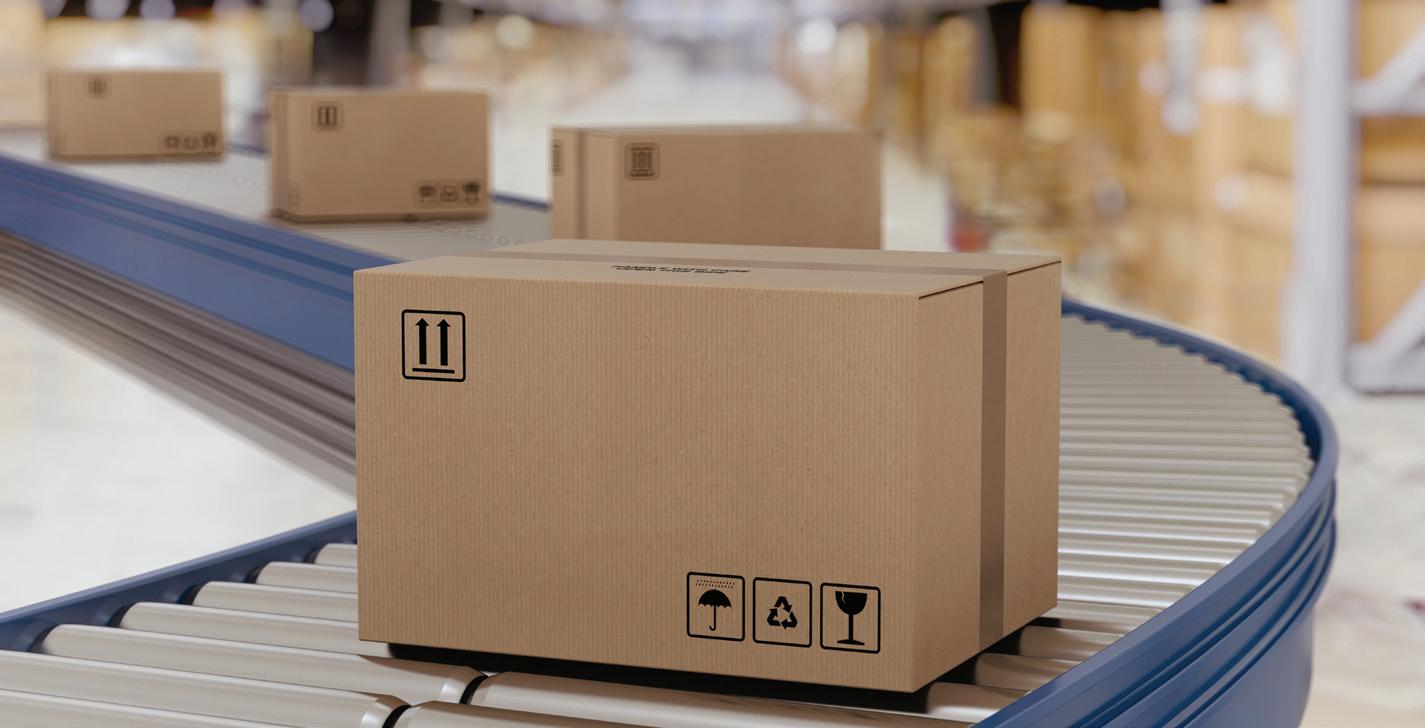
In the future, Amazon hopes that it can implement its pinch-grasping robot alongside its current suction ones so that it can decide which robot would be best suited to picking each individual item. The company is using a similar strategy with its Proteus autonomous mobile robot (AMR).
Creating an ecosystem
Earlier this year, Amazon unveiled its first-ever autonomous mobile robot (AMR) Proteus. The company first entered the mobile robot space in 2012, when it acquired Kiva Systems for $775 million. Kiva Systems offered automated guided vehicles (AGVs) that have been at work in Amazon’s warehouses since.
Proteus has a similar design to the Kiva robots. It slides under Amazon’s GoCarts, lifts them up and moves them across warehouses to employees or other robotic cells. Unlike the Kiva
“Our design focuses on safety, efficiency and cost-effectiveness,” Enright said. “We employ a wide range of diverse and redundant sensing modalities that allow us to provide certain guarantees on vehicle behavior.” Proteus’ job is to store, move and sort Amazon’s blue GoCarts, a central part of the company’s logistics operations. The AMR travels to where the carts are and slides underneath them to move them. It uses general navigation abilities to travel to the general location of the GoCarts, and then uses its high precision LiDAR to find the carts.
To slide under the cart, Proteus uses a two-step detection and motion process. First, the robot will perform a small “S” curve to remove any lateral error in its positioning under the GoCart. Next, it performs a straight motion to tunnel under the cart and lift it.
Proteus carries the cart to its desired storage location, which it identifies with Amazon’s fiducial plus. Fiducial plus is a custom-made ground target that aids Proteus in its alignment capabilities and in finding storage cells. These fiducials help the robot to perform millimeterlevel corrections on its positioning. The AMR has been deployed in Amazon’s outbound GoCart handling areas in its fulfillment and sorting centers. A source told The Robot Report Amazon will use both the Proteus AMRs and the Kiva-like AGVs moving forward. l WH
84 November 2022 www.designworldonline.com DESIGN WORLD
HOW FAR CAN YOUR LINEAR GUIDE TAKE YOU?
IKO’s C-Lube linear guides have run maintenance-free for 20,000 km and beyond—thanks to our unique C-Lube technology. They also feature a compact size, high load capacity and flexible design options to achieve precise linear motion across a diverse range of industries.
To learn more, visit ikont.com/linearguides

DHL’s




Sally Miller

 By Mike Oitzman
By Mike Oitzman


WAREHOUSE AUTOMATION on using robotic fleets











The new Boston Dynamics Stretch robot is being tested by DHL for autonomous trailer unloading.
| Boston Dynamics

DDHL is using robotics to support numerous warehousing and logistics tasks. The company innovates its logistics workflow and the tools and technologies deployed in DHL distribution centers around the world, as it continually improves e ciencies. Sally Miller, DHL Supply Chain’s CIO for North America, recently spoke to The Robot Report about the types of robots the company uses — as well as the innovation cycle it employs to find the most e ective solutions.
TRR: Boston Dynamics and DHL have been working closely together for the last couple of years to test the Stretch robot. The robot will be tasked with several box-moving tasks inside DHL warehouses Can you update us on that partnership?
Miller: So we’re in the final testing phase, and this is the final iteration. The unit is on-site at one of our facilities. And we’re doing the final tweaks before the unit returns to Boston and they finalize any changes before we’re live in January. Following that, the rollout of subsequent sites will start. But this is just a final test period, then we’re ready to go.

86 November 2022 www.designworldonline.com DESIGN WORLD
TRR: Truck unloading is vital to your operations. Other robotics companies are also attacking this application. Why did you choose Boston Dynamics Stretch over the others? Did you try other solutions?

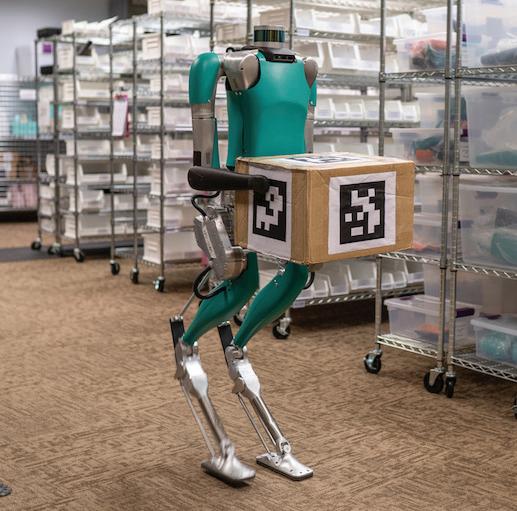

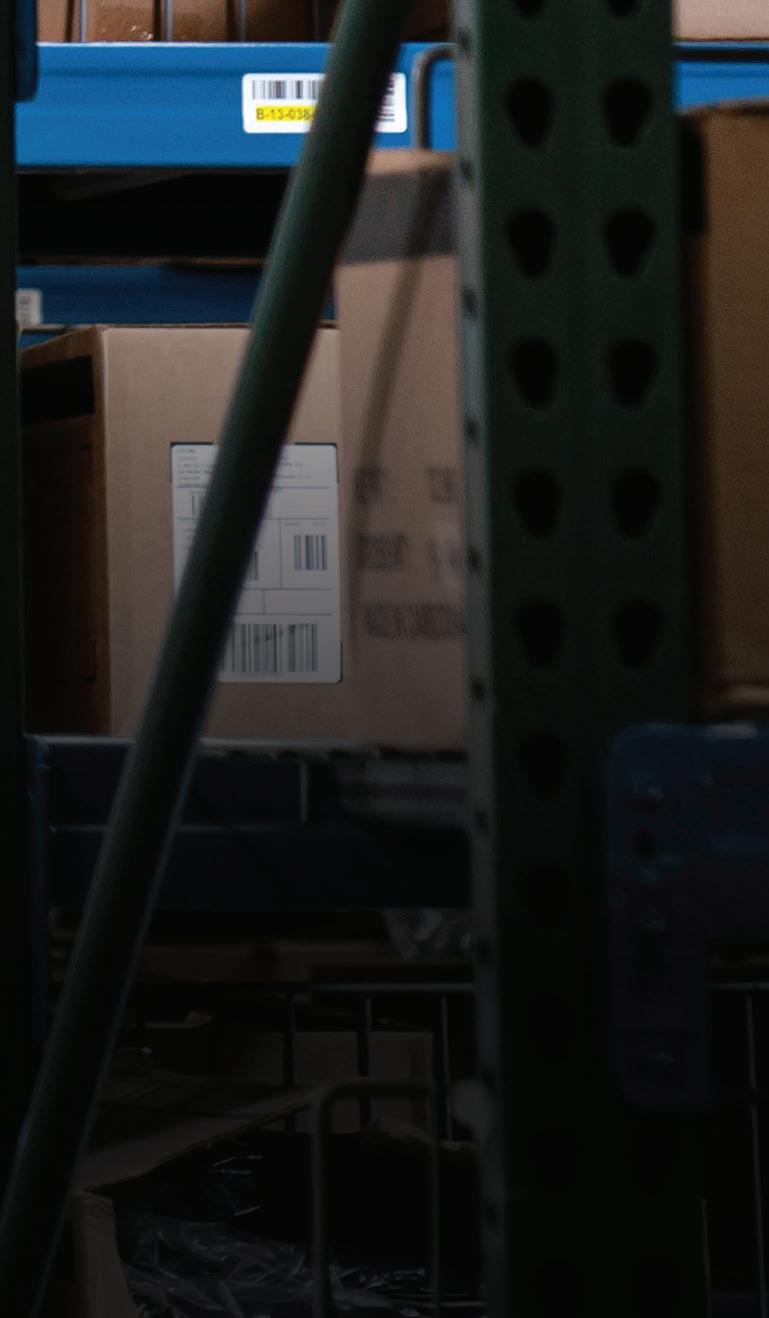






Miller: Truck unloading is one of the key activities in any warehouse. Not all of the trucks that we unload have carton products — a lot of the items are palletized. Only a certain percent of our facilities have floor-loaded products.
What we enjoy about working with Boston Dynamics is they are looking at use cases beyond just carton unloading. There are several other areas where we’re doing activities with cases that the Stretch unit could theoretically be used for. The real value in the Stretch robot comes in multiple activities beyond just case unloading. We’ve focused significantly on Boston Dynamics, there are other solutions that
Digit v2 carrying a box. Digit v2 is the preproduction version of Digit. | Agility Robotics
DHL
are coming to market, but right now we are focused on Stretch.
TRR: Can you take us inside the trailer unloading process? I know it’s a grueling process for humans. Agility Robotics is making a two-legged robot that has been tested for trailer unloading. There’s a nice video showing the Digit robot working collaboratively with humans, carrying things into and out of a trailer. Are you considering removing humans from the trailer unloading process?
Miller: Attracting and retaining hourly labor is a challenge for everyone, especially with today’s scarcity of resources. Trailer unloading
DESIGN WORLD www.designworldonline.com November 2022 87
has a large fleet of Locus robots deployed in 3PL and distribution centers throughout its network.
| DHL
The Power of Vision
Murrelektronik has developed efficient and economical system solutions for integrating industrial image processing systems. The advantages include minimal installation effort as a result of decentralized, pluggable modules that can be mounted directly on the machine.



This achieves the goal of maximum performance with minimum wiring effort. The compact, powerful module is located right where it is needed. All in all, this saves installation time and reduces installation efforts while offering maximum availability enhanced by LED diagnostics each module. As a result, control cabinet components for connecting camera systems are replaced by a decentralized installation systems.


murrinc.com
Xelity Hybrid Switch Master Breakout Box Injection Box NEC Class 2 Splitter
WAREHOUSE AUTOMATION
Autonomous mobile robots from Locus Robotics.
| Locus Robotics
retail, e-commerce, automotive, and a catch-all bucket. DHL facilities aren’t all the same. They’re customized for the unique requirements of the customer.
is one of the least liked jobs in the facility. I feel that Stretch will be able to unload faster autonomously than a two-legged robot. And the fact that it doesn’t work with humans is OK for now. Based on the speed that it can work, it’s a win that we don’t need people there.
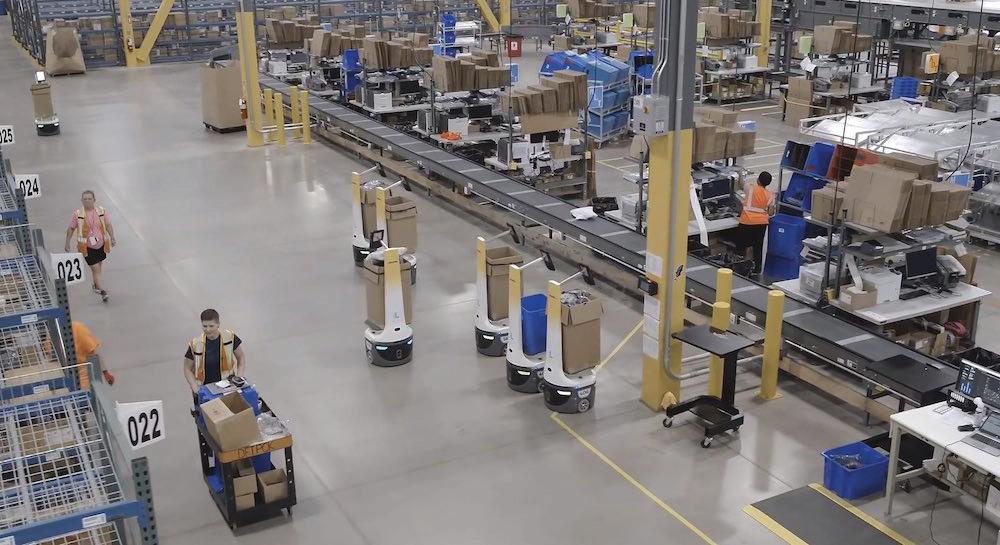
TRR: DHL has a large fleet of Locus robots running around its facilities. Can you tell us a little bit about how DHL deployed the Locus solution and what it’s doing every day in the facilities?
Miller: We have deployed LocusBots in probably 15 facilities and are close to 2,000 bots deployed. This solution works extremely well. Locus is a very innovative company that keeps coming up with use cases to do more of the work in the facility. Our associates love working with the bots. They are cobots designed to work alongside associates. The associates travel less during the day and like going home and telling their families they’re working with robots.
We’re seeing that sites that have the solution deployed have lower turnover and a higher applicant rate. People want to work in environments where there’s more technology deployed. So Locus is a very effective solution that we have deployed where we’re doing highvolume each pick to totes.
TRR: Locus Robotics is a pioneer of the Robots-as-a-Service (RaaS) concept. What is your perspective of RaaS? Does RaaS simplify the sales process? What sold you on this business model? Were you initially doubtful this would be a reasonable solution for DHL?

Miller: We have a global agreement with Locus and their commercial model that they were able to work with us on works well with our commercial contracts. So it was beneficial to us. Obviously, we reassess if we should do the capital outlay versus the RaaS fee. But right now, it is more favorable to us.
TRR: Can you walk us through the process DHL uses to evaluate a new solution and ultimately decide which robots are beneficial? What key performance indicators do you measure?
Miller: For assessment, we look at things that people bring to us, whether they be a startup company, an existing vendor with us, a customer, or a venture capital company. We have a lot of connections with VC firms because they want to bounce how viable some of these ideas are off of us. So we have a lot of inputs from various sources that we investigate.
The first thing we look at is whether the solution fits into a significant number of our facilities. We support several market verticals ranging from CPG, tech, life sciences, and healthcare,
If you walk into an apparel e-commerce facility, you’re going to see a lot of automation. If you walk into a tire distribution center, it’s going to be quite manual. Not everything fits. We have a database of all of our site profile information, so we’re able to quickly see if this is something we should dedicate resources to. If it makes it past that, we do a proof-of-concept where we take the solution to one of our sites that we believe it’s a fit for, and we test it out.
Based on how well it performs and how many sites we think it can be deployed at, it then moves to the product stage where it’s available for any of our 500 sites to deploy. But, usually, the proof-of-concept tends to be an iterative process with the vendor to make tweaks based on what we learned to make the return on the investment and the value to us better. So that’s a value that we bring to the vendor and why a lot of companies want to work with us; they will get that feedback if it moves to proof-of-concept. And if we think there’s a potential for the solution to become a product, we really provide the resourcing to get as much value out of the solution as we can. l WH
DESIGN WORLD www.designworldonline.com November 2022 89
Sally Miller | DHL Supply Chain’s CIO for North America.
Digital transformation helps
intralogistics operations thrive
You can’t talk about intralogistics without mentioning digital transformation. It has been revolutionizing modern distribution and fulfillment centers, and it’s the basis for emerging technologies that are crucial for staying competitive. Robotics, machine learning, artificial intelligence, predictive maintenance, intelligent motion control, and voice-activated solutions support digitization in general and fuel exciting advances in a core technology for which Beckhoff is a market leader: PC-based automation.
Digitization, however, is only beneficial through easy data access throughout the enterprise. Beckhoff successfully uses the automation controller for local data capture, edge processing and sharing across the enterprise and the cloud. The ease, flexibility, speed, and security of how data are gathered, structured, and transmitted sets the Beckhoff solution apart from PLCs and PACs. Traditional PLCs do not support local databases for storing important system and operational data, restrict how data can be structured, and lack modern communication options and cloud connectivity. The TwinCAT automation platform supports a wide range of open and modern communication options to the warehouse control system or warehouse management system, and across the enterprise. It comprehensively supports legacy communication required in brownfield installations, allowing custom protocols. Beckhoff leads in open communication, being the first supplier to integrate OPC UA as both a server and a client for another open, secure communication protocol option. Beckhoff offers a complete suite of automation software products and cloud-based solutions — and offers IoT hardware solutions for brownfield sites and supports connectivity through product certification from leading cloud services, including Amazon Web Services and Microsoft Azure. Beckhoff automation controllers can also create localized private cloud implementations.
By Doug Schuchart Global Material Handling and Intralogistics Manager Beckhoff Automation


Ultimate I/O performance with EtherCAT
Digitization begins with the ability to use one common fieldbus for communication to all devices across the fulfillment center. EtherCAT offers the capability to use gateways for all open Ethernet protocols such as EtherNet/IP and PROFINET and legacy protocols like DeviceNet, PROFIBUS, and CANopen. As a result, EtherCAT is the only protocol that can support a single-network architecture for the entire intralogistics enterprise.
EtherCAT boasts flexible communication via any topology to as many as 65,535 devices on a single network segment — typically in microseconds. EtherCAT is the ideal protocol for the highway of conveyors connecting thousands of sensor devices, I/O modules and motor drives across a fulfillment center. This results in far fewer CPUs (or PLCs) and no switches that increase digital traffic delays, cost and reengineering requirements due to lifecycle obsolescence.
Learn how to meet growing consumer demands
While EtherCAT creates a flexible, real-time communication highway to send data from sensors, motors, and other field devices, the Beckhoff IoT toolbox extends it to the enterprise level and/or cloud. TwinCAT Analytics, Condition Monitoring, Power Monitoring, and the built-in, real-time TwinCAT Scope all enable predictive maintenance, improved diagnostics, and extensive remote support capabilities to increase uptime. This is crucial in modern intralogistics environments influenced by e-commerce demands,. For the autonomous optimization of equipment, systems and robots via pre-trained neural networks, Beckhoff announced TwinCAT Machine Learning. Integrated into our real-time automation platform, these tools ensure retailers and intralogistics equipment suppliers can meet growing consumer demands for shorter delivery times with higher accuracy.
With TwinCAT and EtherCAT, Beckhoff is already a proven leader in the automation of intralogistics systems. We look forward to helping all intralogistics professionals achieve their automation goals to outperform rivals and not just survive, but thrive through the digital transformation.
ADVERTORIAL
90 November 2022 www.designworldonline.com DESIGN WORLD ••••••••••••••••••••••••••••••••••••••••••••••••••• ••••••••••••••••••••••••••••••••••••••••••••••••••• ••••••••••••••••••••••••••••••••••••••••••••••••••• ••••••••••••••••••••••••••••••••••••••••••••••••••• •••••••••••••••••••••
Reliable Motion Reinvents the Warehouse

 By Karl Wickenheisser, VP of Sales and Marketing
By Karl Wickenheisser, VP of Sales and Marketing
Automated systems and machines are revolutionizing storage and retrieval systems to support the demand for faster processes and efficiency gains. Sophisticated conveyors, sorters, palletizers and robotic systems can move product more quickly and reliably than traditional warehouse machinery, but they require exceptional motion products to provide accuracy and longevity. Here is an overview of some of the advanced, high-performance motion devices available and the features that make them well-suited for use in modern, automated warehouses.
• Linear Roller Guides, such as the Super MX Series from IKO International, are desirable whenever a mechanism must handle heavy loads in any direction or large moment loads. Using cylindrical rollers that make a larger contact area with the raceway than guides that use steel balls, they offer higher load ratings. The large contact area also provides exceptional rigidity with less elastic deformation under load for stable performance.IKO Super MX also has built-in C-Lube technology which provides long-term maintenance-free operation. Since lubrication maintenance is reduced, these guides are particularly beneficial for robotics in warehouses where tight spaces make lubrication difficult. And, their interchangeability allows them to be matched, replaced or freely added without replacing an entire bearing and rail assembly, giving engineers greater design freedom.
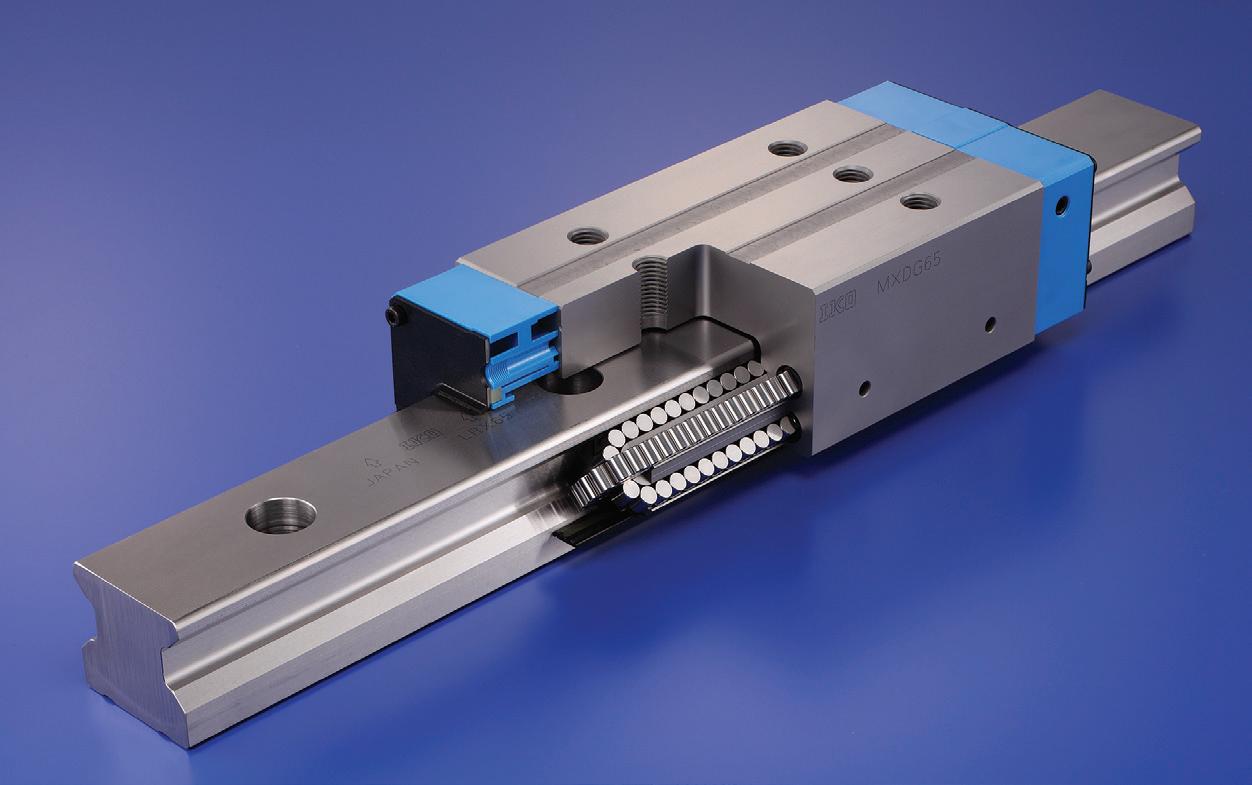
• Crossed Roller Bearings. For applications with complex rotary motion requirements, crossed roller bearings can provide high rotational accuracy and are engineered to handle radial, thrust and moment loads at the same time. Different types of crossed roller bearings can be chosen depending on the intended task and can provide extra-high rigidity or satisfy

restrictive space and weight requirements for robotic devices that perform light-duty wrist and arm motion. IKO International’s lineup of crossed roller bearings provide rigidity, smooth motion and accuracy in a wide variety of sizes and types to fit various rotating and positioning mechanisms. IKO offers standard, high rigidity and mounting hole type and slim and extra slim versions to meet a range of size and application requirements. Bearings are also available with rubber seals to protect against dust, dirt and grease.
• Linear Ball Spline Guides. Available in standard and C-Lube models, these guides have an external cylinder that enables smooth linear motion along a spline shaft, making four-point contact with the raceway. This construction allows the cylinder to move with high accuracy and rigidity, even during fluctuating and complex loads common in material handling applications such as pick and place machines. Flanged and long type cylinders are also available.
Move Goods With Confidence and Efficiency
Motion products are proving essential to the automated machines and systems that are transforming storage and retrieval operations. IKO International’s lineup of linear roller guides, crossed roller bearings and linear ball splines gives machine designers the rigidity, accuracy and smooth motion these systems require along with design freedom and protection from harsh industrial conditions. That means goods can move quickly, efficiently and reliably, and machines can run longer, providing a better return on investment for automated warehousing systems.

For more information about IKO International’s motion products for automated warehouses, visit www.ikont.com.

ADVERTORIAL
DESIGN WORLD www.designworldonline.com November 2022 91 •••••••••••••••••••••••••••••••••••••••••••••••••• •••••••••••••••••••••••••••••••••••••••••••••••••• •••••••••••••••••••••••••••••••••••••••••••••••••• •••••••••••••••••••••••••••••••••••••••••••••••••• ••••••••••••••••••••
Why Do AGVs Need Reliable Motors?
By John Uzzolino Parvalux Business Development Manager
Any automated system is only as good as its reliability. An automated guided vehicle (AGV) for example, needs to do the job it is programmed to do; without error, quickly and efficiently.

Since 2020 in the world of e-commerce, consumer expectations have grown exponentially with same day or next day delivery considered the norm. Introducing computer-controlled load-carriers (AGVs) will speed up product distribution and therefore ensure customers’ growing expectations are met. If the AGVs picking stock are not accurate or efficient, the customer may get the wrong item, or receive the item late meaning they are unlikely to return.
Therefore, the role AGVs play in material handling is paramount and their reliability is dependent on the component parts used to manufacture them which includes robust motors. Motors for AGVs must be reliable, low maintenance and they need to be capable of being in operation 24/7 without loss of functionality. If the AGVs aren’t running, then the warehouse and production lines can’t continue working meaning revenue is lost for every hour they are down. However, if the AGVs are set up correctly with the most appropriate motors then they can help businesses to reduce labor costs, increase productivity and improve scalability of the business.
The Role of AGVs
Although there are numerous tasks an AGV can carry out within the manufacturing and logistics industries they are more commonly used to transport products around a warehouse, production line assembly, or order picking.

Like any automated system, AGVs are reliant on systems in place to ensure they can carry out their tasks such as:
• Guiding tapes, wires or sensors around the warehouse.
• Ability to react instantly and flexibly to system control instructions.
Unlike human counterparts, AGVs can run for 24/7 and need to be equipped with reliable motors which can withstand constant use as well as quick changes in speed and direction.
AGV Motors
So, what type of motor do you need for your AGV?
That depends on the type and size of the automated guided vehicle you have, and how much weight it will be expected to transfer at any one time. A motor that is too small won’t be able to function – or at least not for long – and one that is too big and powerful could cause functionality issues.
The recommended motors for AGVs are brushless DC motors (BLDC motors) because they are powerful, quieter, require lower maintenance and therefore extremely durable and efficient. Ensuring the most appropriate motor for the equipment is installed can reduce expensive maintenance costs as well as lost revenue through downtime.
However, with Parvalux’s brushless motors, they rarely need maintenance, and are highly efficient with a high starting torque, which means they are consistent in speed. This enables the timings of build on production lines and delivery times to be assessed more accurately. This makes reporting and assessing capacity for the warehouse easier.
Parvalux can provide you with the reliable AGV electric motors that you need in order to have your warehouse and production lines running as effectively and efficiently as possible. The main benefit of AGV electric motors is that when chosen correctly, there is minimum maintenance and less fluctuation in labor.
To find out more about the AGV motors stocked by Parvalux, visit: www.parvalux.com.
ADVERTORIAL
92 November 2022 www.designworldonline.com DESIGN WORLD •••••••••••••••••••••••••••••••••••••••••••••••••• •••••••••••••••••••••••••••••••••••••••••••••••••• •••••••••••••••••••••••••••••••••••••••••••••••••• •••••••••••••••••••••••••••••••••••••••••••••••••• •••••••••••••••••••••••••
WAREHOUSEAUTOMATION
Doosan Robotics
Doosan Robotics Leading the Charge in Palletizing Innovation
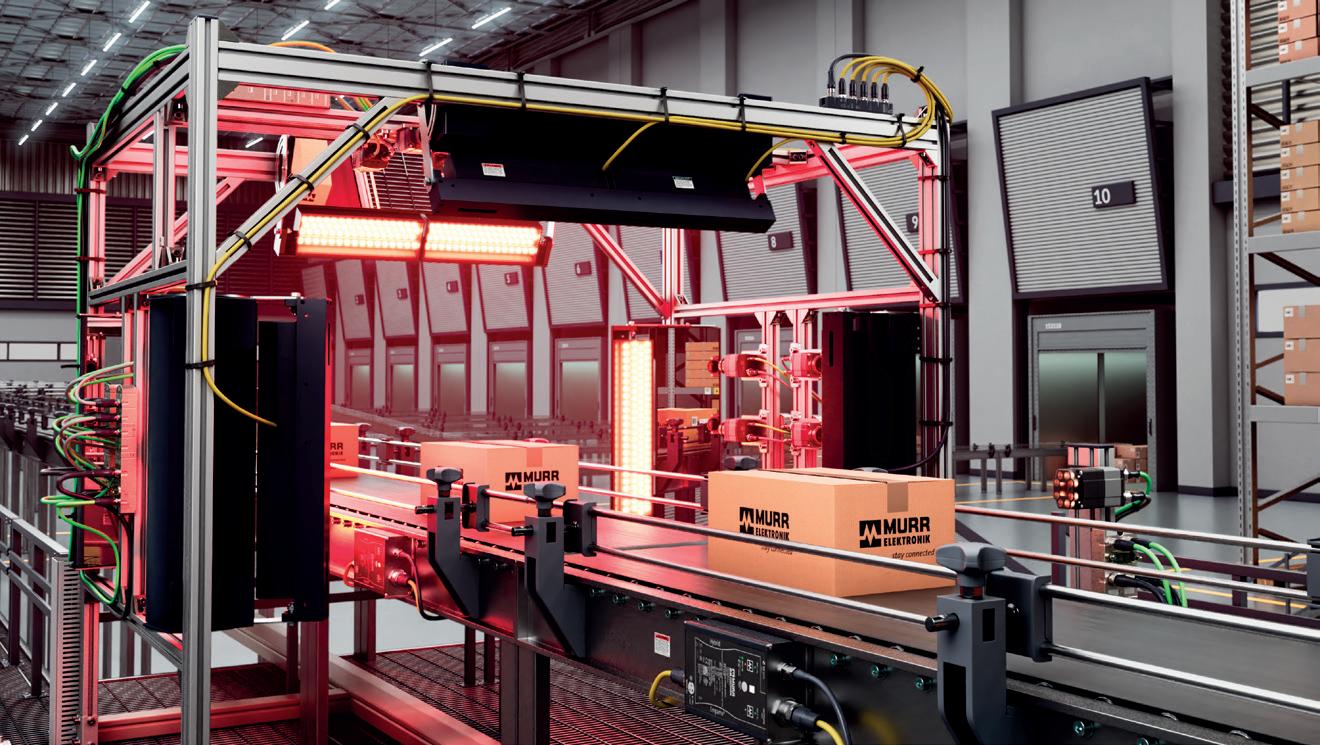
Known for their dexterity and safety, Doosan Robotics H-SERIES cobots are the most powerful in the marketplace, providing unrivaled and precise performance in palletizing. Featuring a maximum reach of 1700mm and 25kg payload, Doosan’s H-SERIES not only has a higher payload and longer reach than competitors, but it can also safely perform highly complex tasks using precise force and compliance control based on the 6-axis force torque sensors. With the highest collision sensitivity in the industry our cobots can also be trusted to share space with personnel, all while enhancing production output and maximizing labor. Doosan Robotics also delivers in a fraction of the time of industry competitors, with an average delivery time of four weeks.

WAREHOUSEAUTOMATION
Murrelektronik, Inc.
Murrelektronik’s modular plug & play solutions allow you to get your vision system up and running quickly thanks to our IP67 rated modules that can be mounted on the machine. This decentralized installation concept significantly cuts planning and installation e orts. Control cabinets can be smaller and cable runs shortened when the modules are put where they are needed. In use, the detailed LED diagnostics in our solutions reduce your equipment downtime if a fault occurs in the system.
Doosan Robotics doosanrobotics.com
Murrelektronik, Inc.
1327 Northbrook Parkway, Suite 460 Suwanee, GA 30024 770.497.9292 murrinc.com 2info@murrinc.com
DESIGN WORLD www.designworldonline.com November 2022 93

DESIGN WORLD ONLINE EVENTS AND WEBINARS Check out the DESIGN WORLD WEBINAR SERIES where manufacturers share atheir experiences and expertise to help design engineers better understand technology, product related issues and challenges. WEBINAR SERIES FOR UPCOMING AND ON-DEMAND WEBINARS, GO TO: www.designworldonline.com/design-world-online-events-and-webinars







Medical www.designworldonline.com A Supplement to Design World - November 2022 A half-dozen catheters, stent systems and related medical tubing products are up for high honors at next month’s 2022 Prix Galien USA awards. Page 100 Six top tubing technology innovations
How IP protection is enabling robotic surgery innovation






Vicarious Surgical has been generating buzz in the robotic surgery space, but none of it would happen if IP protection wasn’t shielding the value of its technology.

Count Vicarious Surgical among a group of relatively young surgical robotics companies seeking to innovate and make a difference in a space that has been dominated by Intuitive. Vicarious’ technology uses proprietary human-like surgical robots combined with 3D visualization to transport surgeons inside the patient to perform minimally invasive surgery.


Vicarious Surgical CEO Adam Sachs announced on his latest earnings call that the Waltham, Massachusetts–based company has completed the design of its Beta 2 robotic surgery platform. It’s beginning the integration phase of the build, and the company has inked center of excellence agreements with the nationwide HCA Healthcare as well as University Hospitals in northern Ohio to further development.
IP protection is crucial for Vicarious Surgical success, said Carolina Säve, a patent attorney who joined Vicarious in January 2022 as its director of intellectual property.
“At the end of the day, the company’s value will depend on how strong the patent portfolio is and how much IP ownership we have been able to retain,” she said.
Säve — along with Greenberg Traurig shareholders Roman Fayerberg and Todd Basile — recently answered questions from Medical Design & Outsourcing regarding what medtech insiders need to know about IP protection in the robotic surgery space.
MDO: How does Vicarious Surgical go about accomplishing its IP protection?
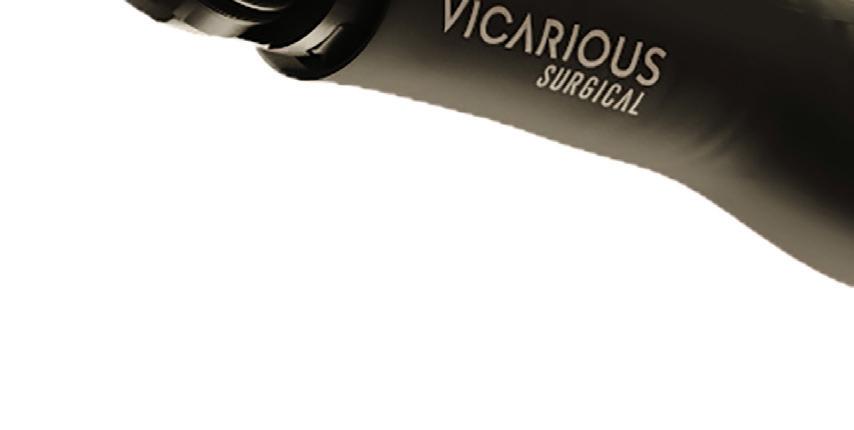
Säve: We have been working to align the IP strategy with the business strategy, which has allowed us to identify any gaps in the IP strategy. By having a strong line of communication between marketing, IP and R&D, we can align our goals and build a stronger patent portfolio. To build that strong portfolio, we also have to file early and often as we move forward in development, trying to capture each improvement as we move toward completing our system. The other component that has been important for us is ensuring we have ownership of our IP as we work with third parties in development agreements or the like. We consider IP ownership before entering into any agreement to avoid any disputes down the line. Similarly, we obtain inventor assignment signatures early on to maintain a clean line of ownership.
As we move toward manufacturing our system, we’re also instituting internal protocols of trade secrets on any parameters, fine-tuning of our system components, or the software running parts of our system.
MDO: What is particularly unique regarding IP protection in the medical robotics space?
Säve: Our robotic system includes many different technologies — mechanical, software, control systems, electrical, etc. — so our IP strategy also has to consider
96 November 2022 www.designworldonline.com DESIGN WORLD
IP
ISSUES
Image courtesy of Vicarious Surgical
how we protect all of these different technologies, whether that is drafting a variety of patent claims for one component or considering other types of protection such as trade secrets. This also means fostering collaboration with different engineering teams and ensuring each technical team understands each other’s goals. For example, our mechanical and software teams need to see eye to eye.
We have also developed a new incentive program as another process for capturing the ideas of our engineers. This has allowed me to work closely with the engineers and also help foster collaboration between the different teams.
MDO: I suspect all the software involved presents some unique challenges?
Basile: It’s hard to protect something if you don’t understand it, and let’s face it, most folks aren’t software engineers. So yes, the software presents the additional challenge of fi guring out what’s going on before determining how to protect it. I think the key here is to look at software as embodying a methodology that, at its essence, can be communicated by a fl ow chart: “If this, then that.” If you can work with your engineers to get to that point, the tech becomes more digestible and you can identify what’s valuable to protect.
The next challenge is deciding how best to protect various types of software employed in surgical robotics. Take, for example, autonomous navigation to a surgical site. Most navigation software will use sensors to detect certain trigger events, such as getting too close to an artery wall or nerve. A trigger event then causes the robot to take some action in response, such as stopping or turning away. Often competitors can reverse engineer this sort of functionality when it is based on nonproprietary sensors, so maybe you opt for patents in these cases. Conversely, when navigation relies on software-intensive computer vision, the machine learning approaches you used to train your computer vision, as well as the underlying data pool and resulting algorithms, likely are not outward-facing. Thus, you might opt for trade secret protections in these cases.
Last but not least, patent eligibility is always something you’ve got to consider when discussing software. The rule of
thumb is that software must provide some technological innovation or improve other technologies to be patentable. For example, you can’t just automate processes on a generic computer that could otherwise be done by hand. Fortunately, with surgical robotics, much of the software is sensingand controls-related, meaning your software improves the real-world functionality of a robot. Likewise, software that trains robot AI from a data pool is often considered transformative enough to be patent-eligible, especially since the result is making robots capable of doing technologically innovative things. So, while there are exceptions, patent eligibility is not as much of a concern when talking about robotics software.
MDO: What are the top questions that entrepreneurs starting surgical robotics companies need to ask as they start working with patent attorneys on an IP protection strategy?
Säve: Outside counsel should ensure that they understand the business goals and track how the goal changes as the development evolves. This can help identify gaps in IP strategy. Landscape searches are important early on as well to provide outside counsel with an understanding of the field, trends in the industry, what competitors are doing, identifying gaps/opportunities in the markets, and also seeing what areas to avoid.
Freedom to operate (FTO) searches are also important, both at different stages of development and for different system components. It is helpful to collaborate with outside counsel on an early design’s overall FTO. Then you can bring the analysis inhouse as you use clearance search results for specific components during the development stages. As you begin to finalize the system, it is an opportunity to again collaborate with outside counsel on an overall FTO. It is often insufficient to rely on just one FTO: Your system will change, sometimes drastically, and it is important to capture these changes in this type of analysis. Collaboration with outside counsel for an overall system FTO is important to prevent any views of conflict of interest, while an in-house team can often handle that analysis as a tool during the development process.
Fayerberg: I agree that when starting to work with patent attorneys, it is important to find outside patent counsel who not only understand the technology but are also willing and able to understand the business goals and help craft the patent strategy accordingly.



DESIGN WORLD www.designworldonline.com November 2022 97
Registered patent attorney at Greenberg Traurig Todd Basile
Registered patent attorney at Greenberg Traurig Roman Fayerberg
Vicarious Surgical Director of Intellectual Property Carolina Säve
It’s good to know where you come from. At Nitto Kohki, we come from a line of engineers and businessmen dedicated to exceptional manufacturing execution. In our line of vacuum and pressure pumps, this is seen in the unique linear-piston design, where one moving part resolves to exceptional reliability, low vibration and noise, high energy efficiency, and long, consistent performance life (>10,000 hrs.) for a host of critical medical applications. It’s why the medical device industry has specied Nitto pumps for over sixty years— the quality in our DNA. Find out how you can use it to your advantage. QUALITY IS IN OURS
They should also look for attorneys with a strong record of helping young companies through different stages of growth. There are different considerations when working with emerging companies versus larger, more established companies. Obviously, budget is one of them. How do you build a valuable IP position with limited resources? For emerging companies, in my experience, the technology evolves rapidly and you want attorneys who understand that and can prepare patent applications that will cover not only the technology at the time of drafting but will remain valuable as the technology evolves. Also, entrepreneurs should look for attorneys who understand the industry and can help find valuable opportunities in the industry that is becoming crowded.












Basile: “What are my goals? What technologies should I be protecting? What protections make the most sense for each?”


MDO: Are there new legal trends that people in the surgical robotics space need to be aware of?
Säve: As we mentioned, software is very much a part of surgical robotics today, and with that comes the consideration of data collection and usage. The industry aims toward autonomy and real-time feedback during a surgical procedure. So what about all that data? Agreements now must include considerations of who owns the data that is collected, how is it being stored, who can use it, and how it can be used. For example, how can a company like Vicarious Surgical have access to that data for our systems to keep learning and improving using that data? There is also the consideration of privacy, given that this data includes patient identifying information. How is that information encrypted so that the data related to it can be used for machine learning? These will all be important factors that will shape how the future of surgical robotics might look.
Basile: For sure, data is an asset and it can be quite valuable. Companies in this space are wise to consider data ownership and access as part of their overall IP and business strategy.
98 November 2022 DESIGN WORLD IP ISSUES
Fayerberg: On a fun note, one interesting trend that has been developing in patent law is whether a patent can be granted on an invention by an artificial intelligence — by itself without a human inventor. Recently, the Federal Circuit heard an appeal from a court decision that has barred an AI-generated invention from being patented. In contrast, the South African Patent Office has granted a patent for the same AI-generated inventions. I do not expect the current generation of medical robots to become inventors, but you never know. FIND OUT WHY YOU SHOULD KNOW NITTO: 800.843.6336 | NITTOKOHKI.COM/PUMPS


























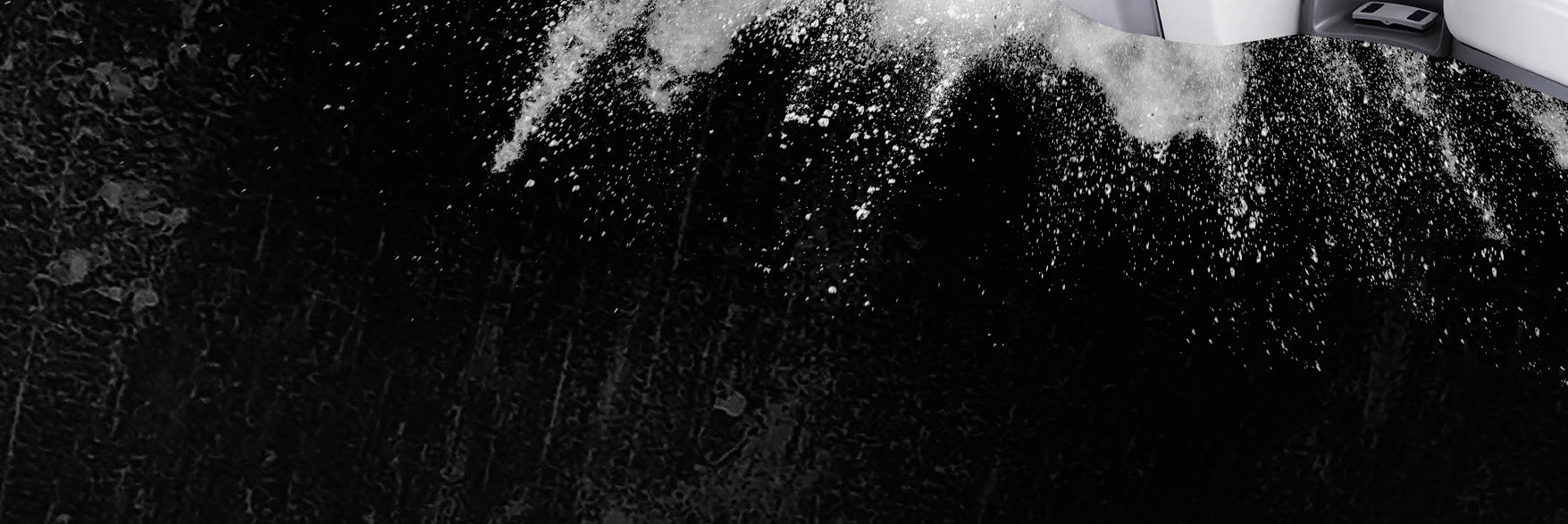

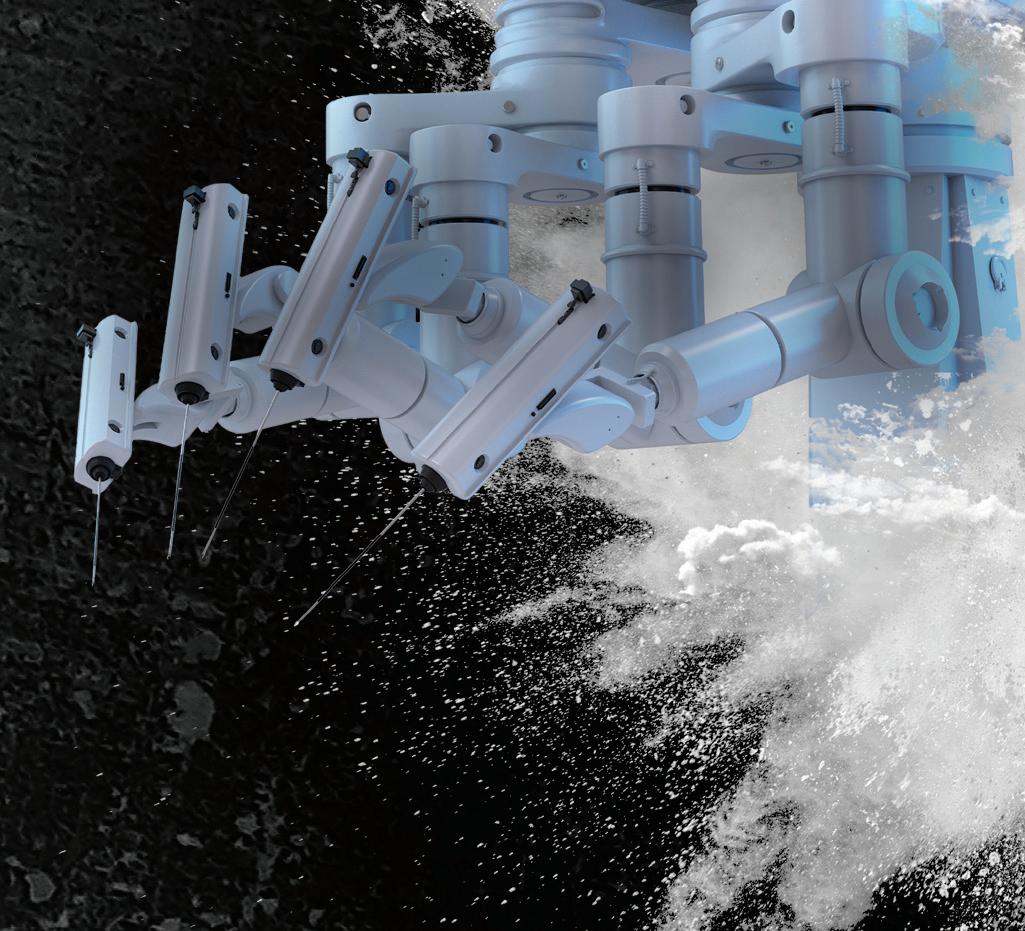
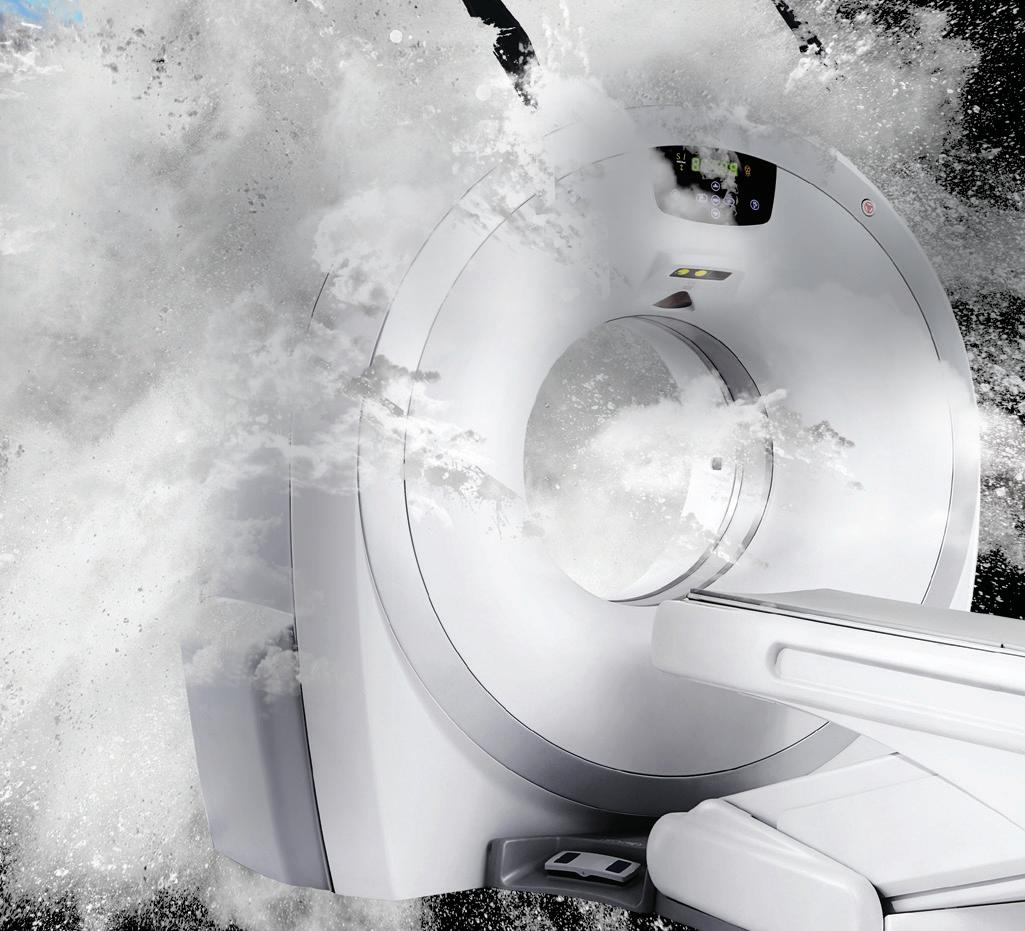

Sponsorship opportunities are available for future DeviceTalks and Robotics programs. For more information, contact Courtney Nagle. 440.523.1685 | cnagle@wtwhmedia.com SUMMIT & EXPO BOSTON, MA MAY 10-11, 2023 B O S T O N C O N V E N T I O N A N D E X H I B I T I O N C E N T E R boston.devicetalks.com | healtchareroboticsforum.com | roboticssummit.com
TUBING TALKS
Sapien 3 transcatheter pulmonary valve system with Alterra adaptive pre-stent Image courtesy of Edwards Lifesciences



Six top tubing technology innovations
A half-dozen catheters, stent systems and related medical tubing products are up for high honors at next month’s 2022 Prix Galien USA awards.
Tubing technology represents about one-fourth of the medical device technologies nominated for the Galien Foundation’s 2022 Prix Galien USA awards.
The annual Prix Galien awards highlight devices, biotechnology and pharmaceutical products designed to improve the human condition. Nominees need to be FDAapproved for the market within the last five years and show major potential to affect healthcare. The winners will be announced in October. Winners had not been named as of press time.
 Danielle Kirsh Senior Editor
Danielle Kirsh Senior Editor
“Every year, evaluating and recognizing the amazing submissions that come through for the Prix Galien Awards is one of the greatest honors,” said Dr. Sue Desmond-Hellmann, chair of the Prix Galien USA award committee. “The commitment and dedication of the innovators who develop these products never cease to amaze the awards committee.”
This year, the foundation nominated 24 medical device innovations, including these six products made possible by medical tubing technology.

Edwards Lifesciences
Sapien 3 transcatheter pulmonary valve system with Alterra adaptive pre-stent Edwards’ Sapien 3 transcatheter pulmonary valve system with Alterra adaptive pre-stent is a catheter-based stent and artificial heart valve for treating patients whose right ventricular outflow tract becomes too leaky.
Alterra, the catheter-based stent, is made from self-expanding nickel-titanium, while the Sapien 3 artificial heart valve is made of cow tissue attached to a balloon-expandable, cobalt-chromium frame for support. The system is approved for use in pulmonary valve replacement when a patient’s pulmonary valve conduit or artificial pulmonary valve stops working properly. It won FDA approval expansion in January to treat the right ventricular outflow tract.
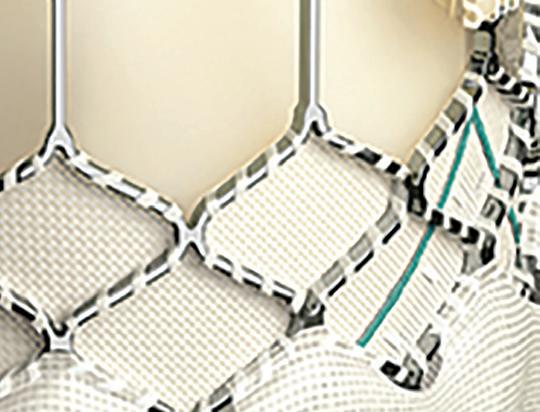

To begin treatment using the Sapien 3 transcatheter pulmonary valve system with Alterra adaptive present, a doctor inserts a catheter through a large vein in the leg.
The catheter has a compressed Alterra stent at the end and is pushed through the blood vessels until it reaches the
100 November 2022 www.designworldonline.com DESIGN WORLD
pulmonary valve. The stent is released and anchors to a patient’s right ventricular outflow tract, and the Sapien 3 valve is deployed through a balloon catheter and pushed until it reaches the location of the Alterra stent.
Once the artificial valve is in place, it is expanded by a balloon and anchored inside the Alterra stent and functions the same as the old valve by opening and closing like a door to force blood to flow in the correct direction.
Olympus America’s BF-UC190F endobronchial ultrasound bronchoscope
The BF-UC190F endobronchial ultrasound bronchoscope (EBUS) is Olympus’s latest generation of its endoscopy devices. The EBUS is used for the diagnosis and standing of lung cancer. It allows optimal angulation and an improved approach to difficult-toreach target sampling sites for enhanced access and control.

Olympus designed the EBUS with a compact distal tip and increased scope angulation to enhance the maneuverability to reach lymph node stations in the mediastinum and hilum parts of the lung. It was a decreased forward oblique angle of 20º to enable easier endoscopic orientation to allow the operator to keep the endoscopic image in full field of view while navigating the airways during a procedure.




The newer iteration of the EBUS has improved needle orientation with a steeper puncture angle to provide a more perpendicular needle orientation toward the target for smoother target penetration between cartilage rings and other critical vessels.



Baylis Medical’s VersaCross transseptal platform
The VersaCross catheter is a left-heart access device that can be used as a guidewire, transseptal puncture device or an exchange rail for delivering
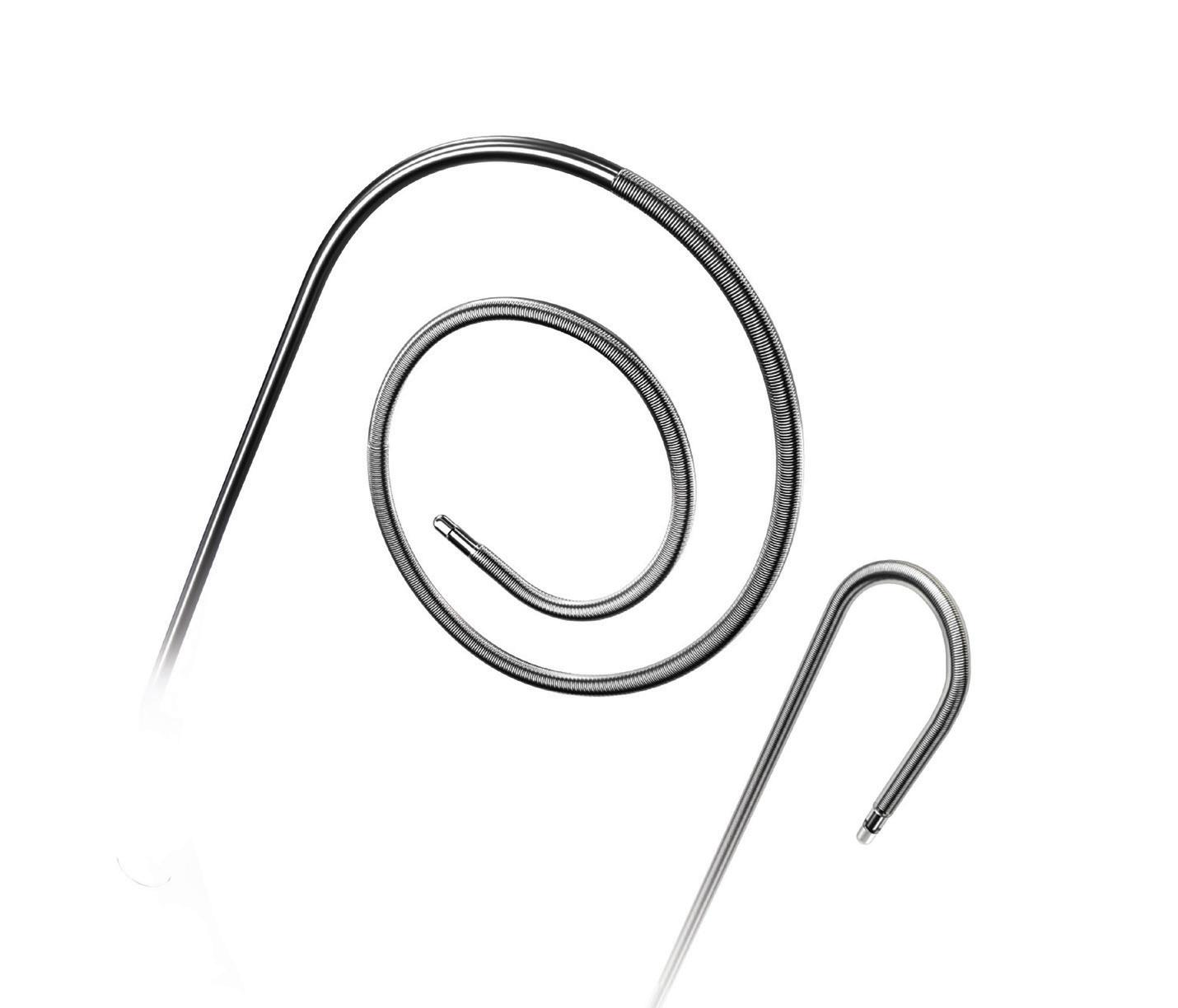
FREE CATALOG Small Mechanical Components Stock and Custom • One Single Source Precision Gears and Gearboxes Timing Belts & Pulleys Couplings Bearings Gearheads Motors Call Us at 516-328-3300 or Shop SDP/SI at www.sdp-si.com We have the expertise, state-of-the-art CNC machinery and world-class manufacturing facility you need. Check out our Engineering Resources DESIGN WORLD www.designworldonline.com November 2022 101 VersaCross
platform Image
BF-UC190F endobronchial ultrasound bronchoscope Image courtesy of Olympus
transseptal
courtesy of Boston Scientific
PureWick female external catheter and PureWick urine collection system Image courtesy of BD
therapy sheaths. Toronto-based Baylis Medical, acquired by Boston Scientifi c in February, designed the VersaCross with an atraumatic radiofrequency tipped pigtail wire to achieve access and then serve as an exchange wire to reduce the number of exchanges through a procedure.
BD’s PureWick female external catheter and PureWick urine collection system
The PureWick female external catheter is a noninvasive urine output management system for female patients. Franklin Lakes, New Jersey–based BD designed the catheter to “wick” urine away from the patient and into a designated collection canister — the PureWick urine collection system — to manage female urinary incontinence.

BD’s Venovo venous stent system
The Venovo venous stent system is a treatment option for patients with symptomatic iliofemoral venous outflow obstructions. BD designed the system
for the iliofemoral veins to provide an optimal balance between radial force, flexibility and compression resistance.
It comes in a broad range of sizes with diameters up to 20 mm and stent lengths up to 160 mm. Venovo was also a nominee for Prix Galien’s best medical technology award in 2020 and 2021.
Boston Scientific’s Eluvia drug-eluting vascular stent system
The Eluvia drug-eluting vascular stent system is a drug delivery device for the treatment of peripheral artery disease. Eluvia uses a drug-polymer combination to deliver the chemotherapy drug paclitaxel over the course of a year. It has a hydrophobic Promus polymer that protects the drug from dissolving in the blood and allows for highly-controlled drug delivery to the target lesion. Eluvia reduces downstream particulates and has low systemic drug exposure with no measurable levels of paclitaxel in the bloodstream within 30 minutes, according to the company.


Eluvia drug-eluting vascular stent system Image courtesy of Boston Scientific
BD
102 November 2022 www.designworldonline.com DESIGN WORLD TUBING
TALKS
Venovo venous stent system Image courtesy of
DC Motor-Driven Pumps


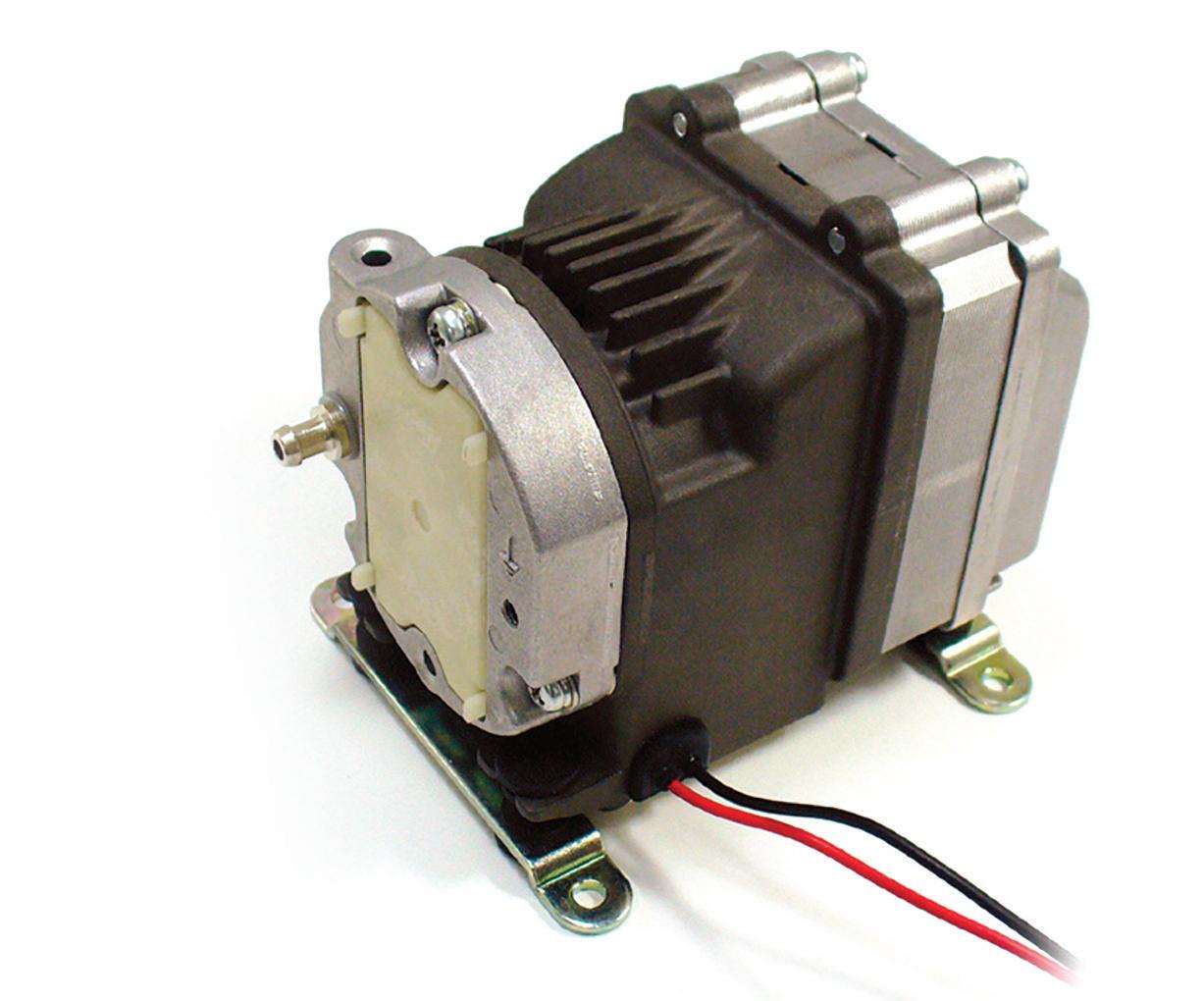
NITTO KOHKI U.S.A., INC.
46 Chancellor Drive Roselle, IL 60172
Toll Free: (800) 843 6336 Phone: (630) 924 8811 Fax: (630) 924 0808
info-pumps@nittokohki.com www.nittokohki.com
DESIGN WORLD www.designworldonline.com November 2022 103
MEDICAL
Very low power consumption • Self-cooling
Exceptional service
Easy
Ideal for demanding
MEDICAL
– One
Source
Precision
Manufacturing • Engineering
–
ISO 7 Class 1000 Cleanroom for Assembly • Gear Cutting / Bevel Gear Cutting • Custom Drive Systems / Gearboxes Send an RFQ online,
your
our
you! Stock Drive Products/Sterling Instrument (SDP/SI) 250 Du y Avenue, Hicksville, NY 11801
E-mail:
Nitto Kohki’s DC motor-driven air compressors and vacuum pumps are ideal for applications requiring exceptionally reliable air flow, pressure or vacuum performance. Featuring oil-free operation, a single moving part, low noise, and low vibration, this line of linear air compressors comes in 12V and 24V models. Other benefits include: •
design •
life (rated at 10,000 hours) •
maintenance
applications in the medical device and laboratory equipment industry, including dialysis machines, blood separators, blood analyzers, incubators, heart assist devices and more.
SDP/SI
Single
SDP/SI creates precision gears, superior mechanical components, and customized motion control solutions for medical device OEMs. With over 70 years of experience and proven performance SDP/SI provides the reliability that the medical industry requires. Partnering with companies that include Abbott Laboratories, Intuitive Surgical, Siemens Healthcare, Medtronic, and many more, we provide support from the early design stage through delivery. •
CNC
Development
with years of experience we know how to make systems smaller, lighter, and faster. •
discuss
project with
engineers, visit our facility. We look forward to working with
https://www.sdp-si.com sdp-sisupport@sdp-si.com (516) 328-3300
AllMotion ............................................ 4 Altech Corporation 2,3,13,15 AutomationDirect ........................... 1 Beckhoff Automation ...........40,41,42,43 Boker's, Inc. 26 Canfield Connector ........................ 26 Components Corporation ........... 59 Del-tron 47 Diamond Wire Spring .................... 37 Digi-Key Electronics ....................... 9 Dodge Industrial 7 Exair Corp .......................................... 5 Fabco-Air, Inc. .................................. 55 IFPE (AEM) ......................................... 31 Interpower 35,63 Keystone Electronics Corp ......... 17 Kingway USA ................................... 23 Master Bond 37 Miki Pulley U.S. ................................ 10 Misumi USA, Inc. ............................. BC NB Corporation 27 Novotechnik ..................................... 16 OKW Enclosures, Inc. .................... 25 PBC Linear ........................................ 20 Permco ............................................... IBC Quantum Devices .......................... 33 ROLEC Enclosures, Inc. ................ 11 Smalley Steel Ring 50 THK America, Inc ............................. IFC Trim-Lok ............................................. 19 Watlow 39 Whittet-Higgins ............................... 21
Warehouse Automation
Beckhoff Automation ................... 72 Doosan Robotics Americas ......... 74 IKO International, Inc. 85 Parvalux ............................................. 79 Murrelektronik Inc. .......................... 88 Ruland Manufacturing 81 Medical Tips Supplement
Nitto Kohki USA .............................. 98 Stock Drive Products/ Sterling Instrument .................. 101
SALES
Ryan Ashdown rashdown@wtwhmedia.com 216.316.6691
Jami Brownlee jbrownlee@wtwhmedia.com 224.760.1055
Mary Ann Cooke mcooke@wtwhmedia.com 781.710.4659
Jim Dempsey jdempsey@wtwhmedia.com 216.387.1916
Mike Francesconi mfrancesconi@wtwhmedia.com 630.488.9029
Jim Powers jpowers@wtwhmedia.com 312.925.7793 @jpowers_media
Courtney Nagle cseel@wtwhmedia.com 440.523.1685 @wtwh_CSeel
WTWH Media, LLC 1111 Superior Ave., Suite 2600, Cleveland, OH 44114 Bruce Sprague (888) 543-2447
WTWH Media, LLC 1111 Superior Ave., Suite 2600, Cleveland, OH 44114
Mike Emich; WTWH Media, LLC 1111 Superior Ave., Suite 2600, Cleveland, OH 44114
Paul J. Heney; WTWH Media, LLC 1111 Superior Ave., Suite 2600, Cleveland, OH 44114
Mike Santora; WTWH Media, LLC 1111 Superior Ave., Suite 2600, Cleveland, OH 44114
WTWH Media, LLC 1111 Superior Ave., Suite 2600, Cleveland, OH 44114
Scott McCafferty 1111 Superior Ave., Suite 2600, Cleveland, OH 44114
Mike Emich 1111 Superior Ave., Suite 2600, Cleveland, OH 44114
Marshall Matheson 1111 Superior Ave., Suite 2600, Cleveland, OH 44114
LEADERSHIP TEAM
Publisher
Mike Emich memich@wtwhmedia.com 508.446.1823 @wtwh_memich
Managing Director
Scott McCafferty smccafferty@wtwhmedia.com 310.279.3844 @SMMcCafferty
EVP
Marshall Matheson mmatheson@wtwhmedia.com 805.895.3609 @mmatheson
DESIGN WORLD does not pass judgment on subjects of controversy nor enter into dispute with or between any individuals or organizations. DESIGN WORLD is also an independent forum for the expression of opinions relevant to industry issues. Letters to the editor and by-lined articles express the views of the author and not necessarily of the publisher or the publication. Every effort is made to provide accurate information; however, publisher assumes no responsibility for accuracy of submitted advertising and editorial information. Non-commissioned articles and news releases cannot be acknowledged. Unsolicited materials cannot be returned nor will this organization assume responsibility for their care.
DESIGN WORLD does not endorse any products, programs or services of advertisers or editorial contributors. Copyright© 2022 by WTWH Media, LLC. No part of this publication may be reproduced in any form or by any means, electronic or mechanical, or by recording, or by any information storage or retrieval system, without written permission from the publisher.
Subscription Rates: Free and controlled circulation to qualified subscribers. Non-qualified persons may subscribe at the following rates: U.S. and possessions: 1 year: $125; 2 years: $200; 3 years: $275; Canadian and foreign, 1 year: $195; only US funds are accepted. Single copies $15 each. Subscriptions are prepaid, and check or money orders only.
Subscriber Services: To order a subscription or change your address, please email: designworld@omeda.com or visit our web site at www.designworldonline.com
DESIGN WORLD (ISSN 1941-7217) is published monthly by: WTWH Media, LLC; 1111 Superior Ave., Suite 2600, Cleveland, OH 44114. Periodicals postage paid at Cleveland, OH & additional mailing offices.
POSTMASTER: Send address changes to: Design World, 1111 Superior Ave., Suite 2600, Cleveland, OH 44114
www.designworldonline.com
104 November 2022
DESIGN WORLD
Ad Index Statement of Ownership,Management,andCirculation (Requester Publications Only) 1. Publication Title 2. Publication Number 3. Filing Date 4. Issue Frequency 5. Number of Issues Published Annually6. Annual Subscription Price (if any) 8. Complete Mailing Address of Headquarters or General Business Office of Publisher (Not printer) 9. Full Names and Complete Mailing Addresses of Publisher, Editor, and Managing Editor (Do not leave blank) Publisher (Name and complete mailing address) Editor (Name and complete mailing address) Managing Editor (Name and complete mailing address) 10.Owner (Do not leave blank. If the publication is owned by a corporation, give the name and address of the corporation immediately followed by the names and addresses of all stockholdersowningor holding 1 percent or more of the total amount of stock. If not owned by a corporation, give the names and addresses of the individual owners. If owned by a partnership or other unincorporated firm, give its name and address as well as those of each individual owner. If the publication is published by a nonprofit organization, give its name and address.) 11.Known Bondholders, Mortgagees, and Other Security Holders Owning or Holding 1 Percent or More of Total Amount of Bonds, Mortgages, or Other Securities. If none, check box PS Form 3526-R September 2007 (Page 1 of 3 (Instructions Page 3)) PSN: 7530-09-000-8855 PRIVACY NOTICE: See our privacy policy on www.usps.com None 7. Complete Mailing Address of Known Office of Publication (Not printer)(Street, city, county, state, and ZIP+4® Contact Person Telephone (Include area code) Full Name Complete Mailing Address Complete Mailing AddressFull Name 12. Tax Status (For completion by nonprofit organizations authorized to mail at nonprofit rates)(Check one) Has Not Changed During Preceding 12 Months Has Changed During Preceding 12 Months (Publisher must submit explanation of change with this statement) The purpose, function, and nonprofit status of this organization and the exempt status for federal income tax purposes: PS Form 3526-R, September 2007 (Page 2 of 3) Extent and Nature of Circulation Average No. Copies Each Issue During Preceding 12 Months No. Copies of Single Issue Published Nearest to Filing Date a. Total Number of Copies (Net press run) c. Total Paid and/or Requested Circulation (Sum of 15b (1), (2), (3), and (4)) In-County Paid/Requested Mail Subscriptions stated on PS Form 3541. (Include direct written request from recipient, telemarketing and Internet requests from recipient, paid subscriptions including nominal rate subscriptions, employer requests, advertiser’s proof copies, and exchange copies.) d.Nonrequested Distribution (By Mail and Outside the Mail) Total Distribution (Sum of 15c and e) 17. Signature and Title of Editor, Publisher, Business Manager, or Owner 13. Publication Title 15. Percent Paid and/or Requested Circulation (15c divided by f times 100) Date Nonrequested Copies Distributed Outside the Mail (Include Pickup Stands, Trade Shows, Showrooms and Other Sources) Total (Sum of 15f and g) 14. Issue Date for Circulation Data Below 16. Publication of Statement of Ownership for a Requester Publication is required and will be printed in the issue of this publication. b. Legitimate Paid and/or Requested Distribution (By Mail and Outside the Mail) Copies not Distributed (See Instructions to Publishers #4, (page #3)) Outside County Paid/Requested Mail Subscriptions stated on PS Form 3541. (Include direct written request from recipient, telemarketing and Internet request s from recipient, paid subscriptions including nominal rate subscriptions, employer requests, advertiser’s proof copies, and exchange copies.) (1) (2) (4) Requested Copies Distributed by Other Mail Classes Through the USPS (e.g. First-Class Mail® Sales Through Dealers and Carriers, Street Vendors, Counter Sales, and Other Paid or Requested Distribution Outside USPS®(3) (1) (3) (2) (4) Outside County Nonrequested Copies Stated on PS Form 3541 (include Sample copies, Requests Over 3 years old, Requests induced by a Premium, Bulk Sales and Requests including Association Requests, Names obtained from Business Directories, Lists, and other sources) In-County Nonrequested Copies Stated on PS Form 3541 (include Sample copies, Requests Over 3 years old, Requests induced by a Premium, Bulk Sales and Requests including Association Requests, Names obtained from Business Directories, Lists, and other sources) Nonrequested Copies Distributed Through the USPS by Other Classes of Mail (e.g. First-Class Mail, Nonrequestor Copies mailed in excess of 10% Limit mailed at Standard Mail® or Package Services Rates) Total Nonrequested Distribution (Sum of 15d (1), (2), (3) and (4)) f. e. g. h. i. certify that all information furnished on this form is true and complete. understand that anyone who furnishes false or misleading information on this form or who omits material or information requested on the form may be subject to criminal sanctions (including fines and imprisonment)and/or civil sanctions (including civil penalties). Design World Monthly 9/29/20220 2 5 - 1 4 6
12 $125.00
� N/A Design World September 2022 Owner (If the publication is owned by a corporation, give the name and address of the corporation immediately followed by the names and addresses of all stockholders owning or holding 1 percent or more of the total amount of stock. If not owned by a corporation, give names and addresses of the individual owners. If owned by a partnership or other unincorporated firm, give its name and address as well as those of each individual owner. If the publication is published by a nonprofi organization, give its name and address): PS Form 3526-R, July 2014 16. X I certify that 50% of all my distributed copies (electronic and print) are legitimate requests or paid copies. PS Form 3526-R, September 2007 (Page 2 of 3) Extent and Nature of Circulation Average No. Copies Each Issue During Preceding 12 Months No. Copies of Single Issue Published Nearest to Filing Date a. Total Number of Copies (Net press run) c. Total Paid and/or Requested Circulation (Sum of 15b (1), (2), (3), and (4)) In-County Paid/Requested Mail Subscriptions stated on PS Form 3541. (Include direct written request from recipient, telemarketing and Internet requests from recipient, paid subscriptions including nominal rate subscriptions, employer requests, advertiser’s proof copies, and exchange copies.) d.Nonrequested Distribution (By Mail and Outside the Mail) Total Distribution (Sum of 15c and e) 17. Signature and Title of Editor, Publisher, Business Manager, or Owner 13. Publication Title 15. Percent Paid and/or Requested Circulation (15c divided by times 100) Date Nonrequested Copies Distributed Outside the Mail (Include Pickup Stands, Trade Shows, Showrooms and Other Sources) Total (Sum of 15f and g) 14. Issue Date for Circulation Data Below 16. Publication of Statement of Ownership for a Requester Publication is required and will be printed in the issue of this publication. b. Legitimate Paid and/or Requested Distribution (By Mail and Outside the Mail) Copies not Distributed (See Instructions to Publishers #4, (page #3)) Outside County Paid/Requested Mail Subscriptions stated on PS Form 3541. (Include direct written request from recipient, telemarketing and Internet request s from recipient, paid subscriptions including nominal rate subscriptions, employer requests, advertiser’s proof copies, and exchange copies.) (1) (2) (4) Requested Copies Distributed by Other Mail Classes Through the USPS (e.g. First-Class Mail®) Sales Through Dealers and Carriers, Street Vendors, Counter Sales, and Other Paid or Requested Distribution Outside USPS®(3) (1) (3) (2) (4) Outside County Nonrequested Copies Stated on PS Form 3541 (include Sample copies, Requests Over 3 years old, Requests induced by a Premium, Bulk Sales and Requests including Association Requests, Names obtained from Business Directories, Lists, and other sources) In-County Nonrequested Copies Stated on PS Form 3541 (include Sample copies, Requests Over 3 years old, Requests induced by a Premium, Bulk Sales and Requests including Association Requests, Names obtained from Business Directories, Lists, and other sources) Nonrequested Copies Distributed Through the USPS by Other Classes of Mail (e.g. First-Class Mail, Nonrequestor Copies mailed in excess of 10% Limit mailed at Standard Mail® or Package Services Rates) Total Nonrequested Distribution (Sum of 15d (1), (2), (3) and (4)) f. e. g. h. i. certify that all information furnished on this form is true and complete. I understand that anyone who furnishes false or misleading information on this form or who omits material or information requested on the form may be subject to criminal sanctions (including fines and imprisonment)and/or civil sanctions (including civil penalties). page 1 of 4 (see instructions page 4) PSN: 7530-09-000-8855 PRIVACY NOTICE: See our privacy policy on www.usps.com 72.5% 74.7% 0 0 0 0 0 0 8,677 7,622 0 0 0 0 32,372 31,125 23,462 23,241 23,462 23,241 8,894 7,878 32,356 31,119 16 6 32,372 31,125 217 256 November 2022 9/22/2022 Electronic Copy Circulation a. Requested and Paid Electronic Copies b. Total Requested and Paid Print Copies (15c) + Requested/Paid Electronic copies (16a) c. Total Requested Copy distribution (15f) + Requested/Paid Electronic copies (16a) d. Percent Paid and/or Requested Circulation (Both print & electronic copies (16b divided By 16c x 100)
17. 18. Form 3526-R July 2014 (page 2 of 4) Pat Curran, Senior Digital Media Manager
6,000 6,000 29,462 29,241 38,356 37,119 76.8% 78.8%
Depend on Permco when the community depends on you.



Permco’s hydraulic pumps, motors and accessories for vacuum trucks will make sure your trucks are ready when they are needed most.
Whether it’s wastewater, mud, or debris that needs to be cleaned up, you can always rely on the quality products from Permco to make sure your vacuum trucks are ready to take on the big jobs. Assemblies from our U.S.A. factory are 100% tested so you don’t need to worry about breakdowns or down time. They work as hard as you do. So when your community is counting on you, you can count on Permco. Contact us now for a Permco distributor near you. permco.com | (800) 626-2801 Home of


the American Champ 1500 Frost Road Streetsboro, OH 44241









MISUMI OFFERS CONFIGURABLE COMPONENT SOLUTIONS: A COST-EFFECTIVE, RELIABLE, AND FAST ALTERNATIVE TO OFF THE SHELF AND CUSTOM OPTIONS. MANUFACTURER & DISTRIBUTORMISUMI • Fast and Easy • Unlimited Selection • Global Part Number CONFIGURABLE • 3D Model • Low Cost • Reliable Delivery Configure the materials, dimensions, features and finishes you need online FAST! D L P F • Lowest Cost • Fast • Convenient OFF THE SHELF Choose stock components when you need a part fast at the lowest cost. CUSTOM Design a custom part to meet design specifications when speed and cost isn’t a factor. • High Quality • Fully Custom • Uncompromised Design MISUMIUSA.COM






















































































































































































































































































































































































































































































































































































































































































































































































































































































































 Freudenberg
Freudenberg























































































 Edited by Mike Santora • Managing Editor
Edited by Mike Santora • Managing Editor







































































































































 Edited by Mike Santora • Managing Editor
Edited by Mike Santora • Managing Editor

































































































































































































































































































































































































































































































































































































































 David Bentley • Senior Manufacturing Engineer • Protolabs
David Bentley • Senior Manufacturing Engineer • Protolabs

















































































 By Danielle Collins
By Danielle Collins








































 By Mike Oitzman
By Mike Oitzman



































 By Karl Wickenheisser, VP of Sales and Marketing
By Karl Wickenheisser, VP of Sales and Marketing



























































 Danielle Kirsh Senior Editor
Danielle Kirsh Senior Editor

























